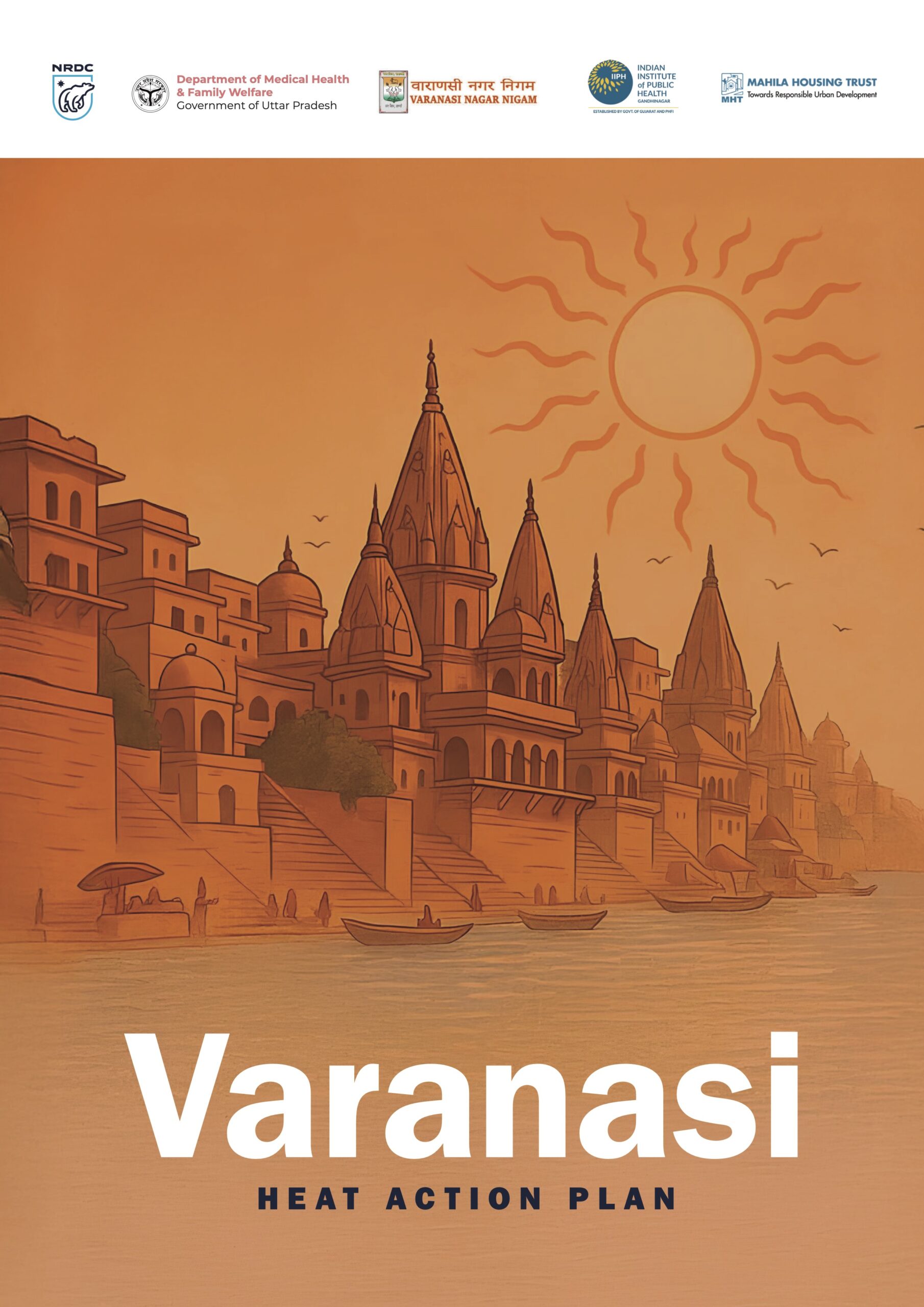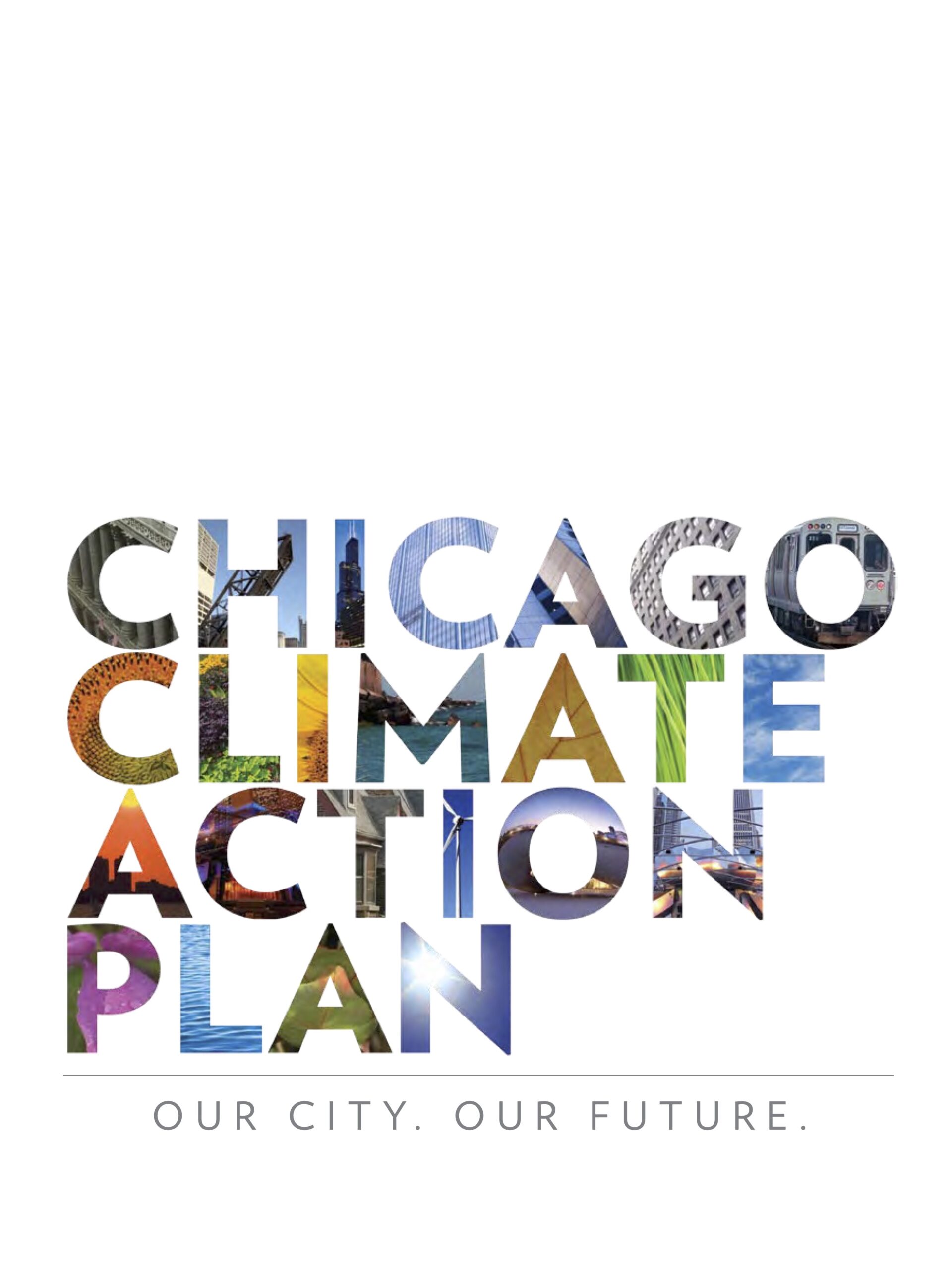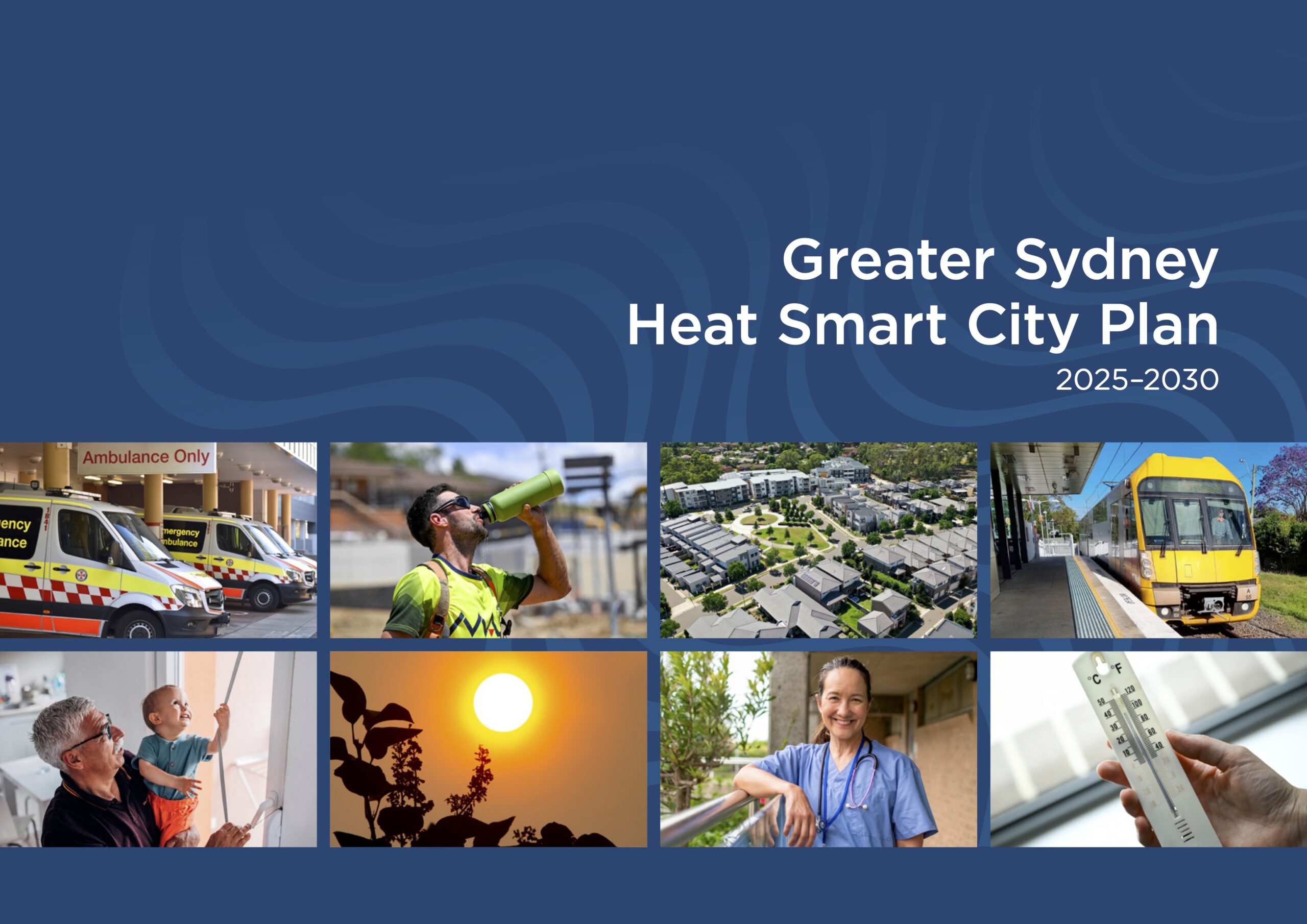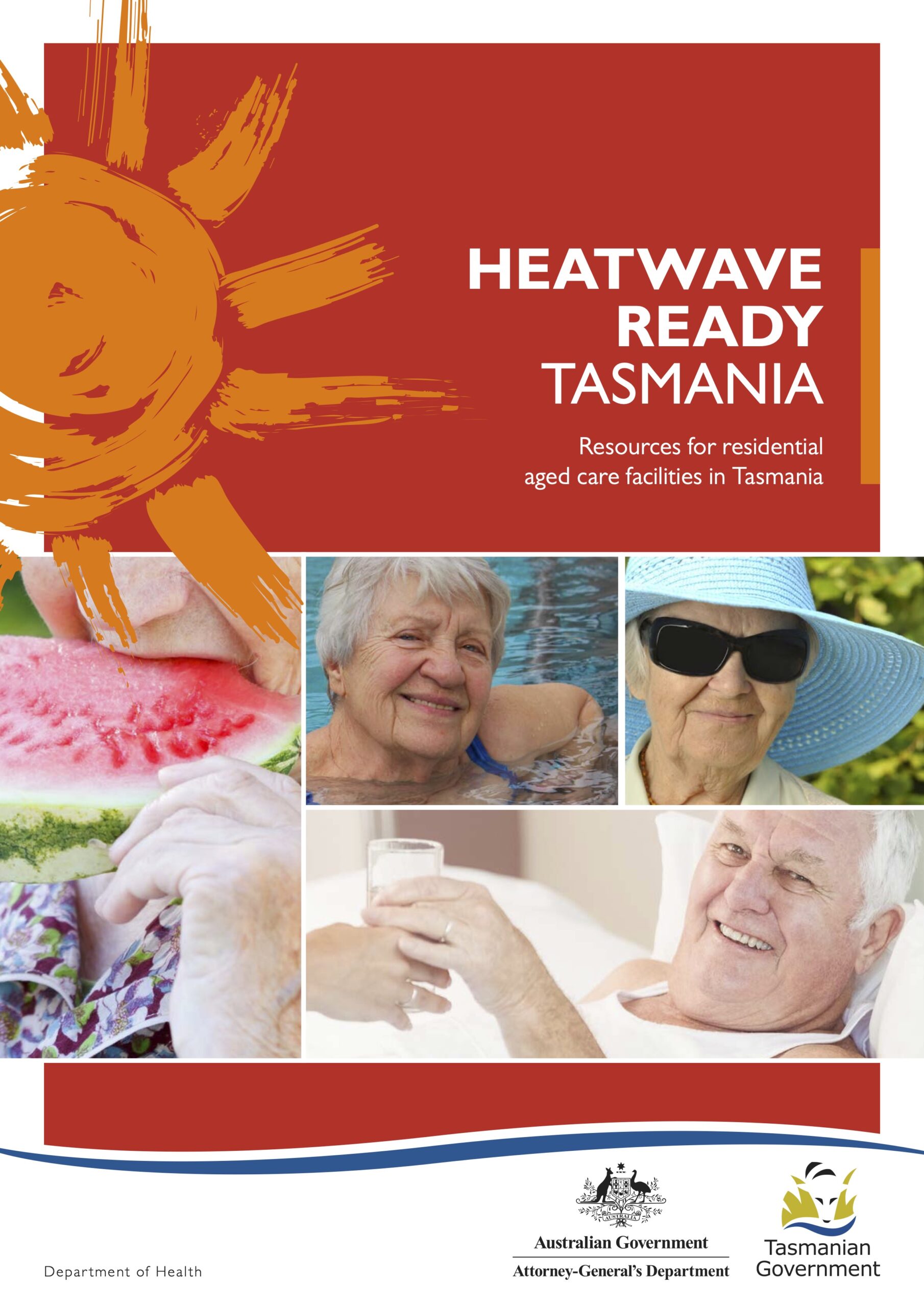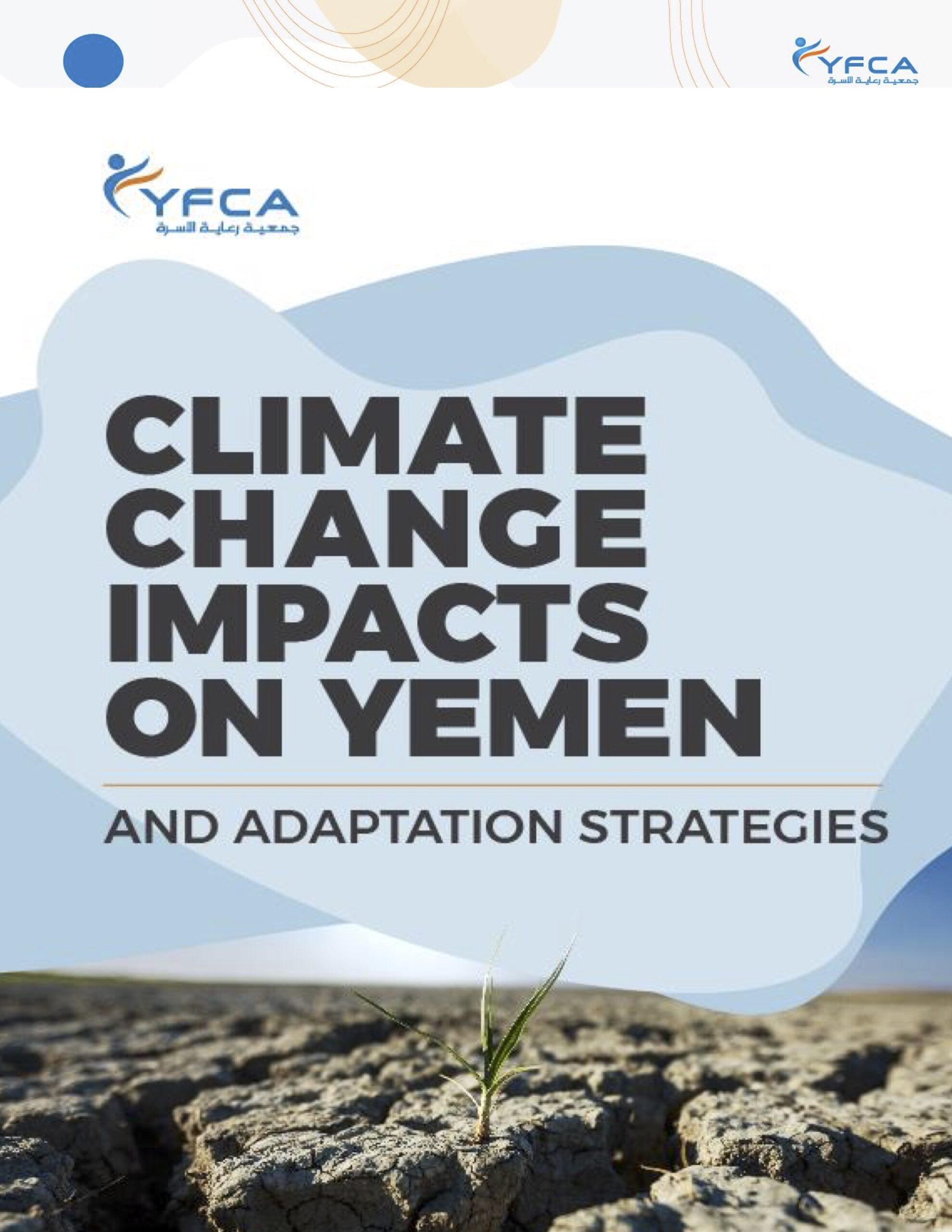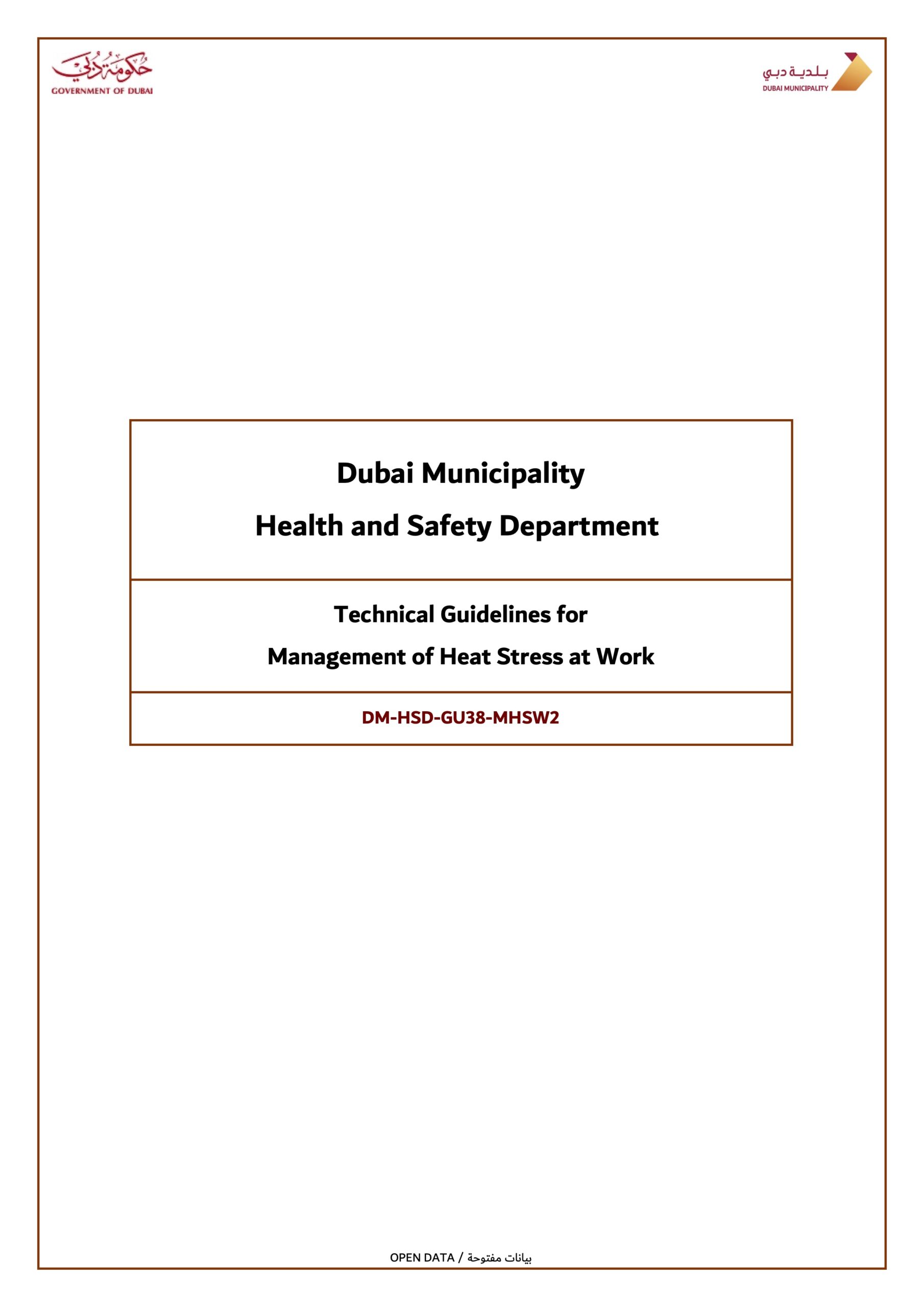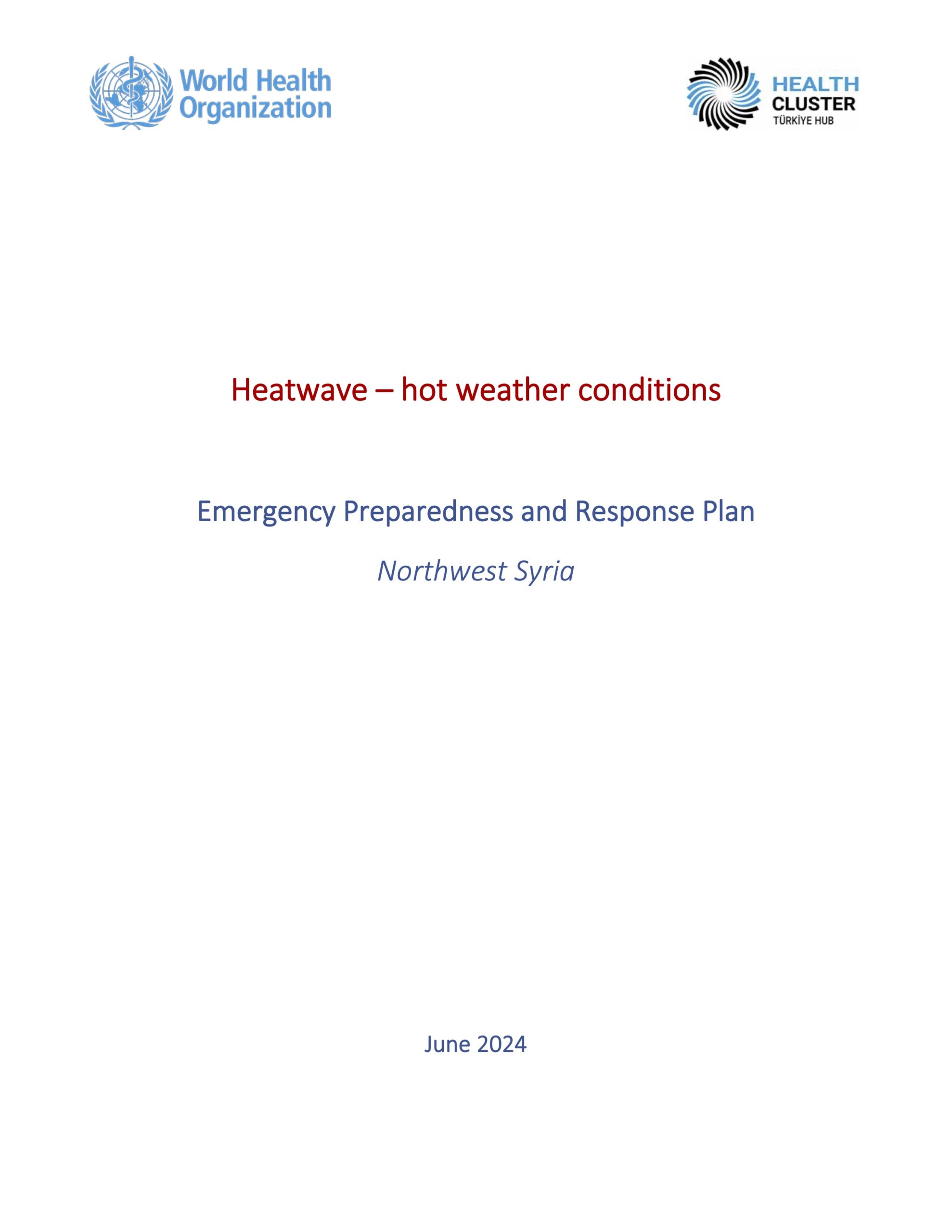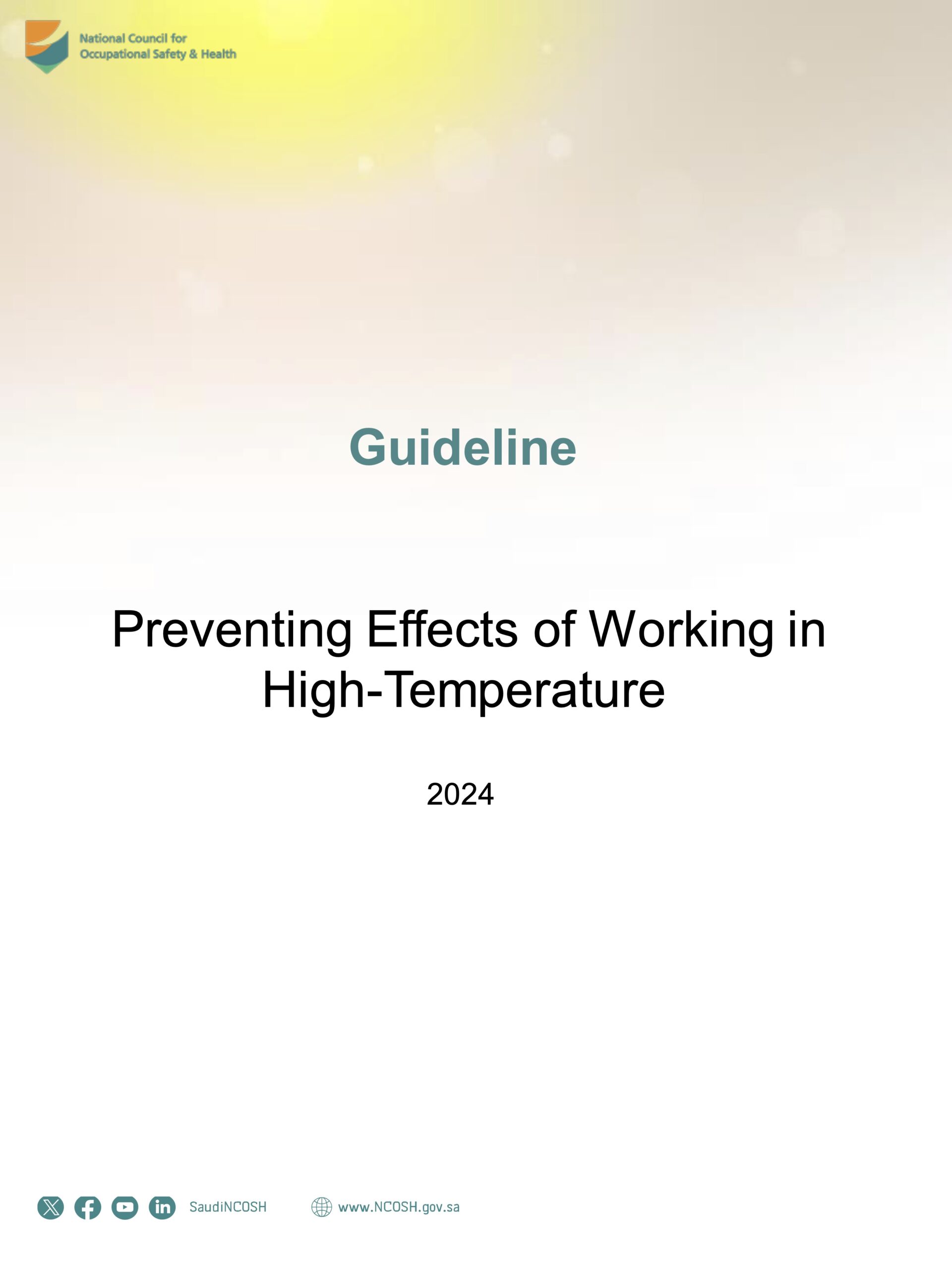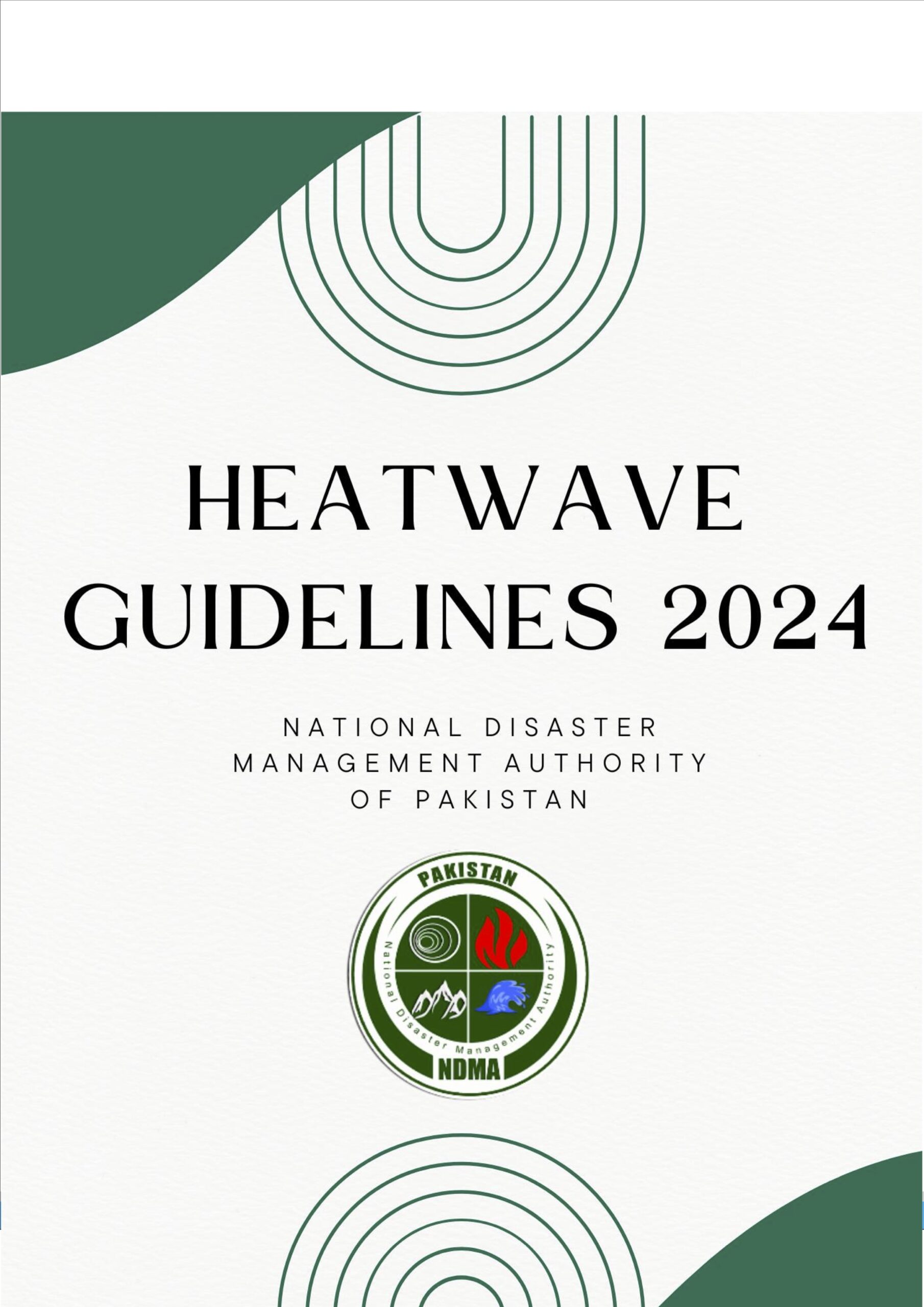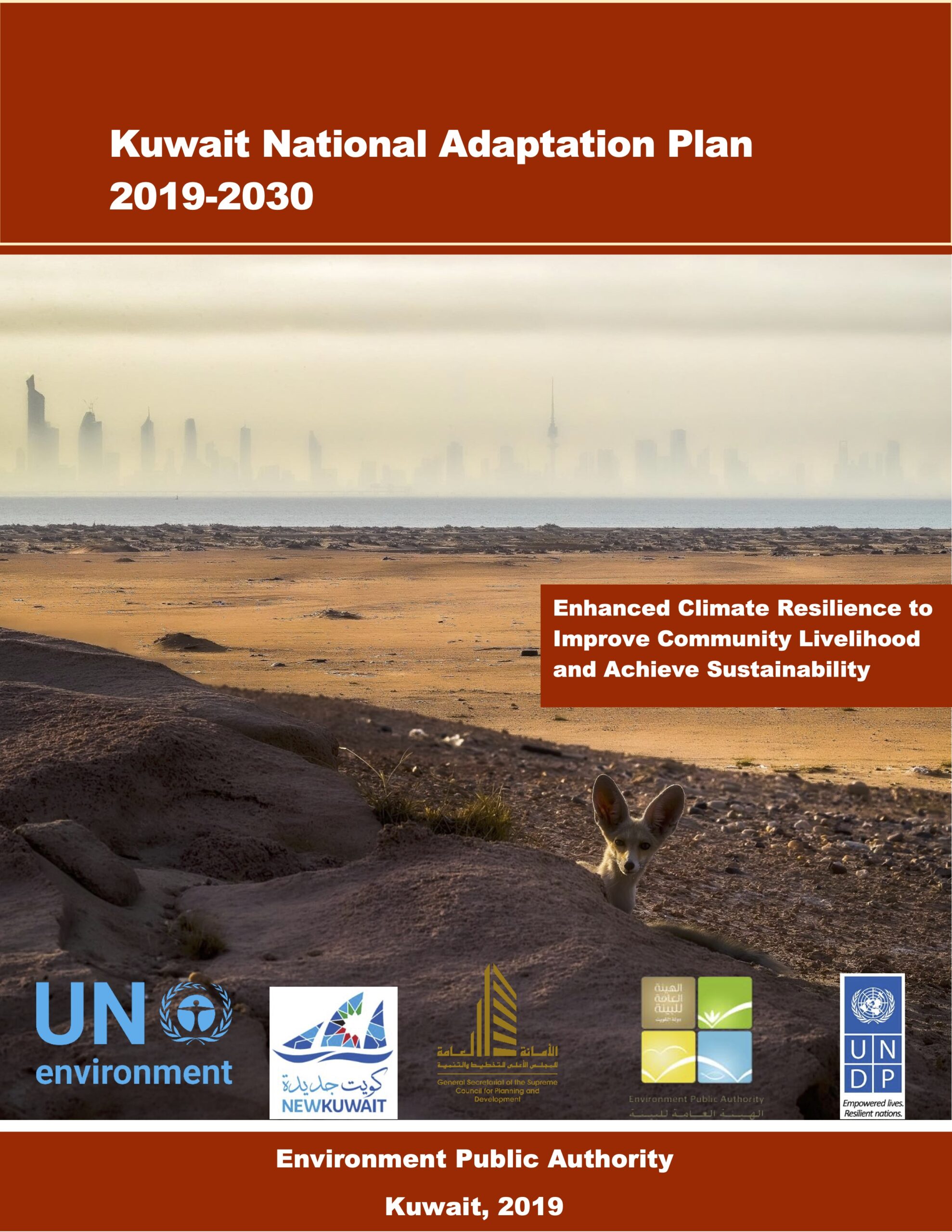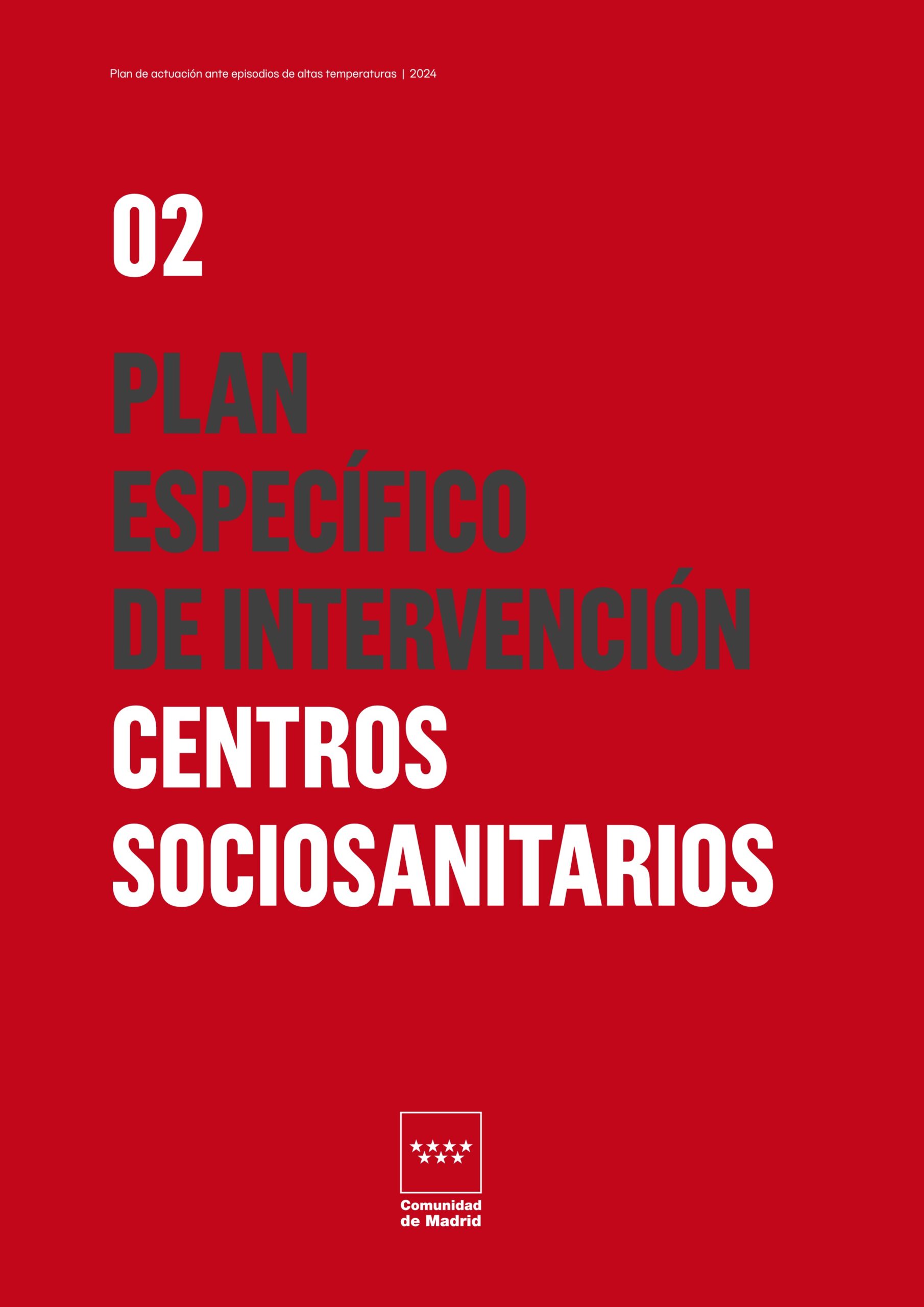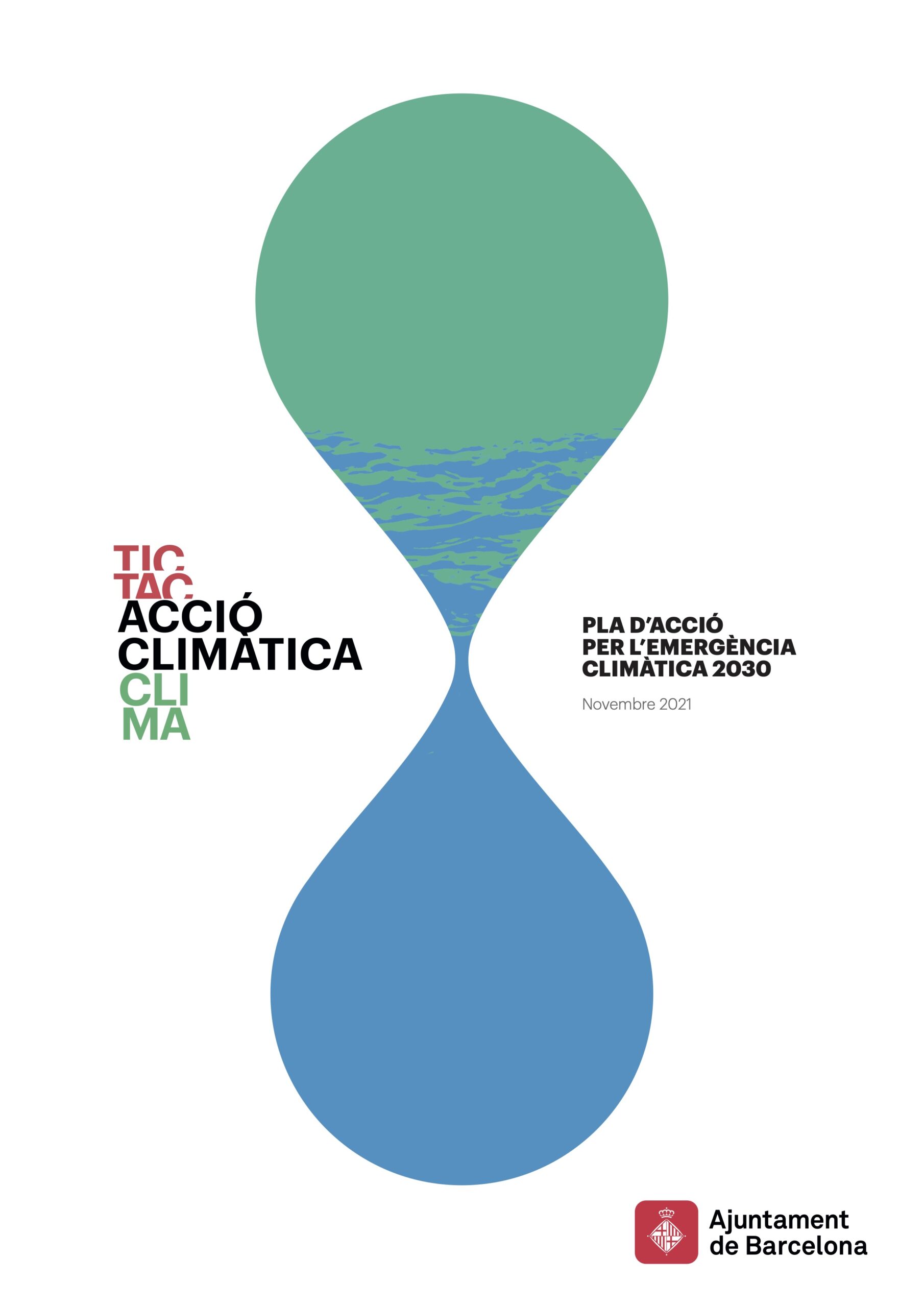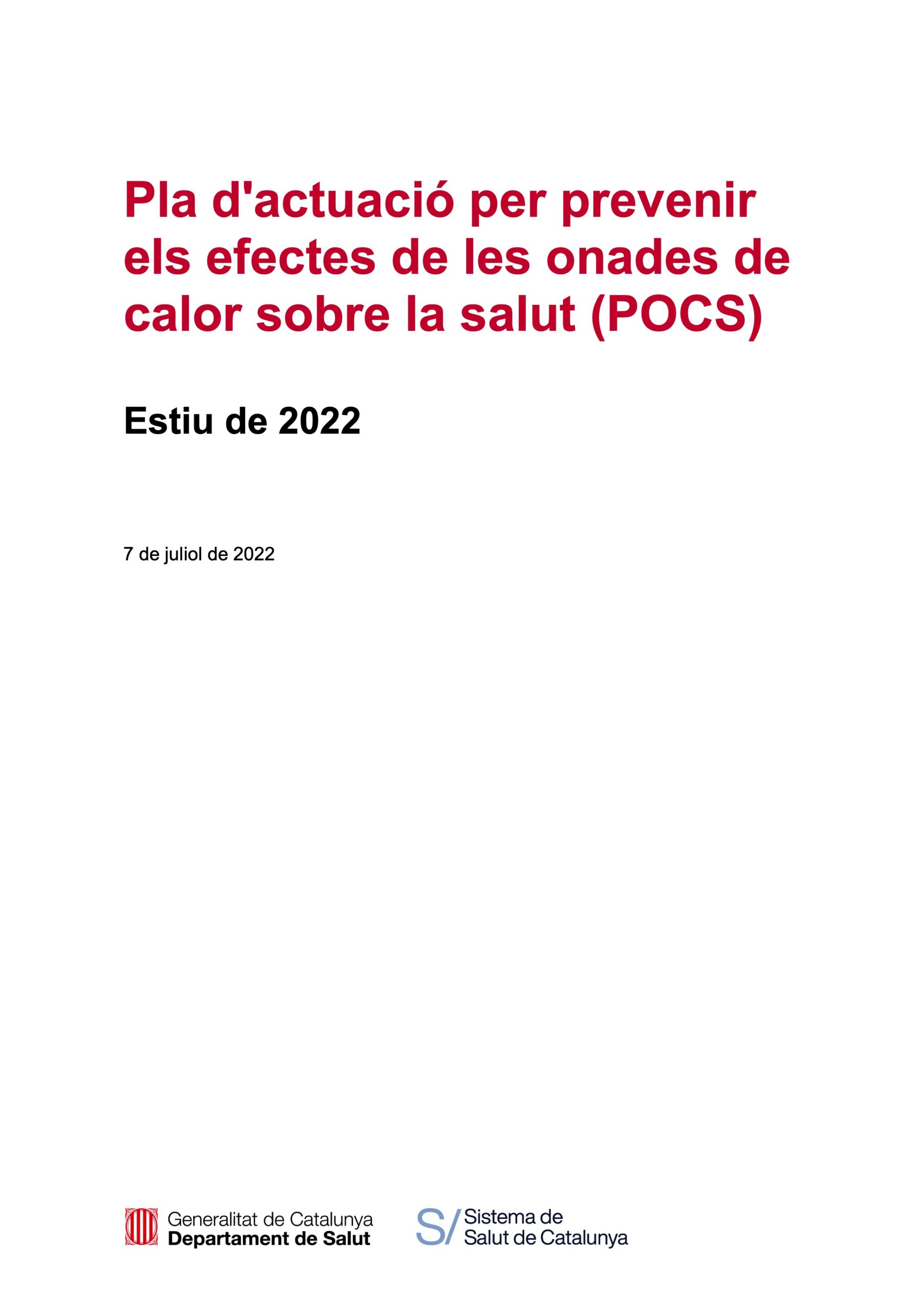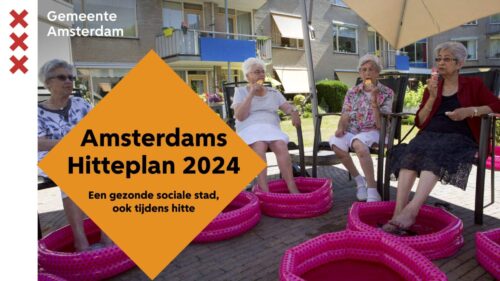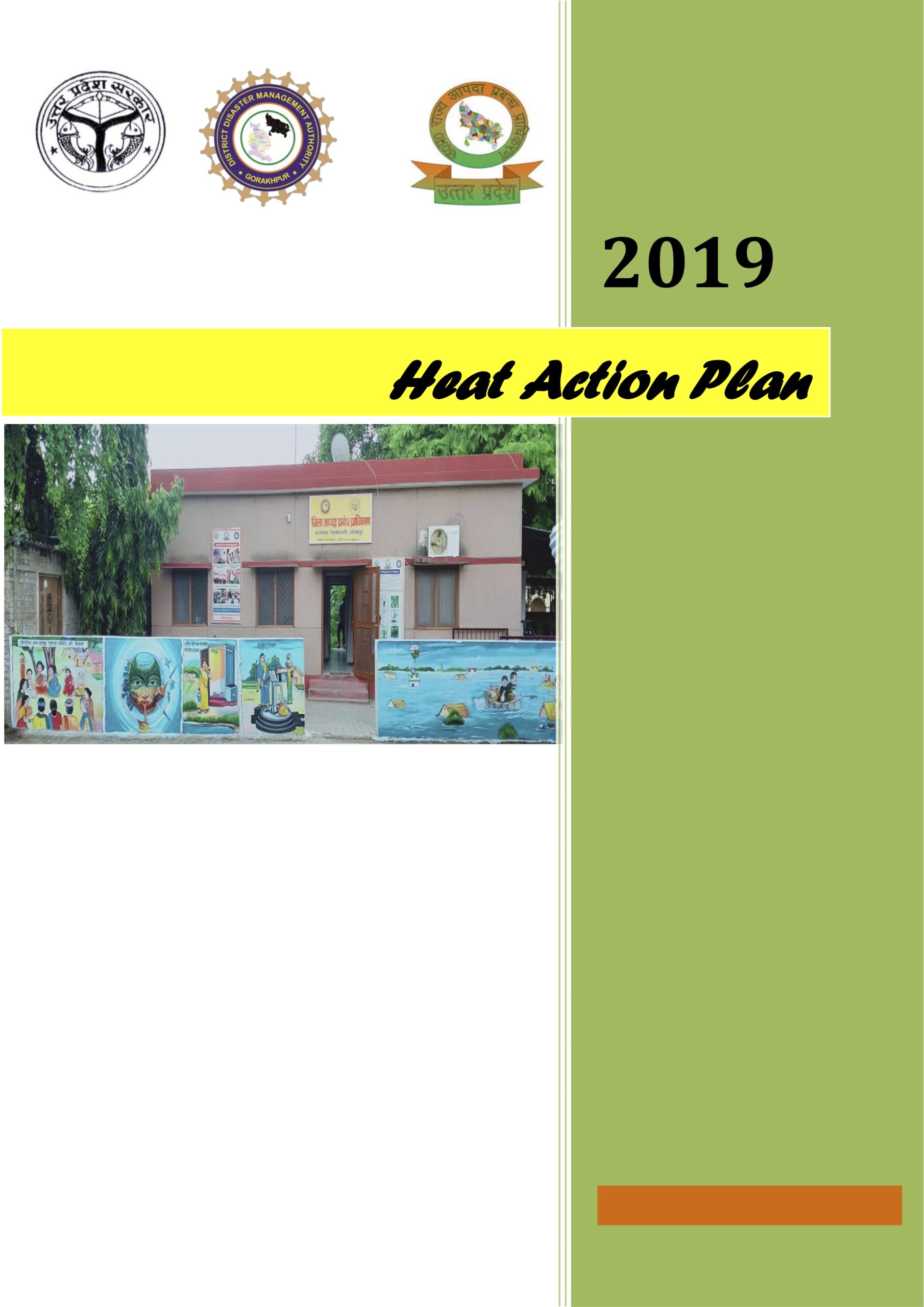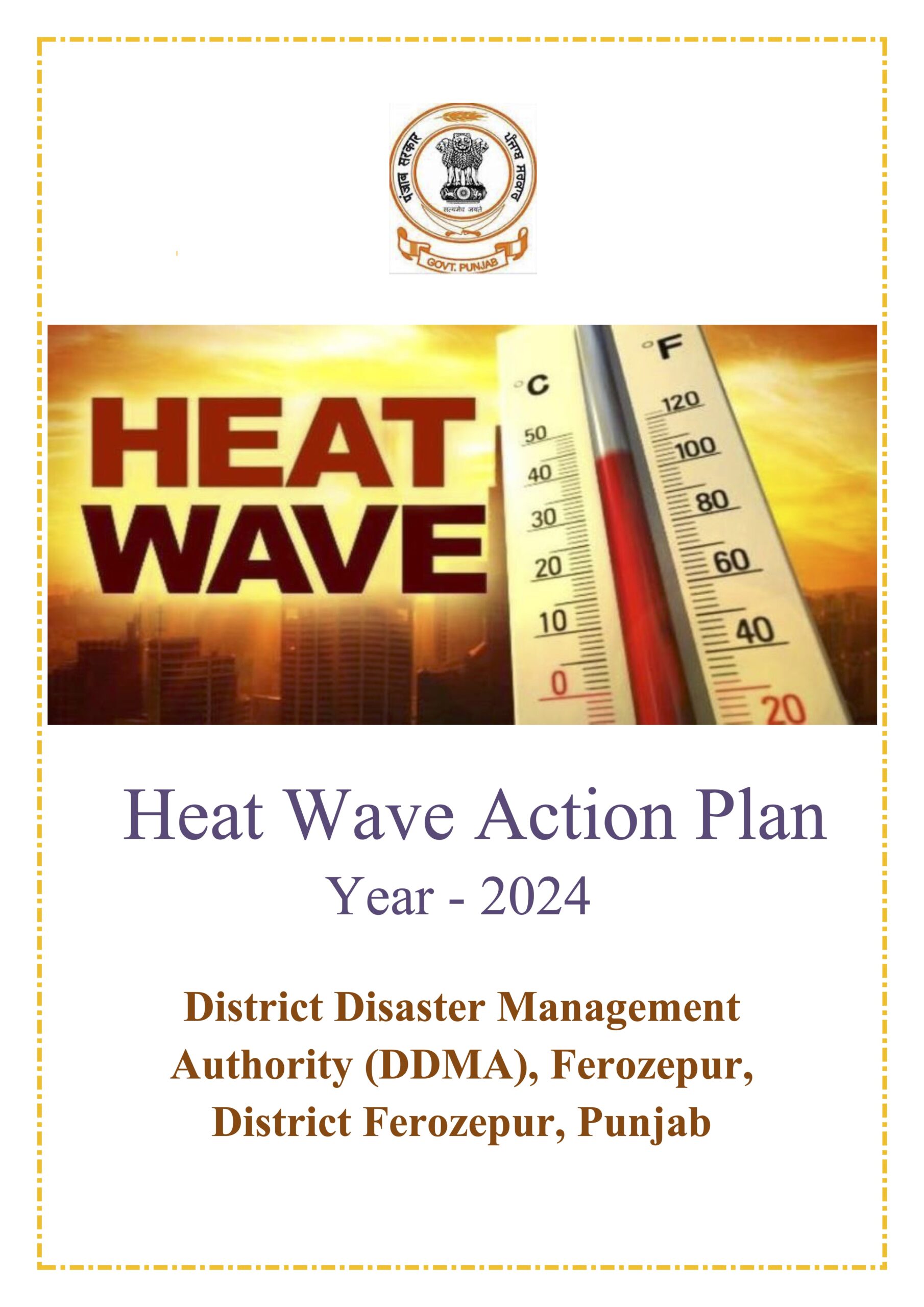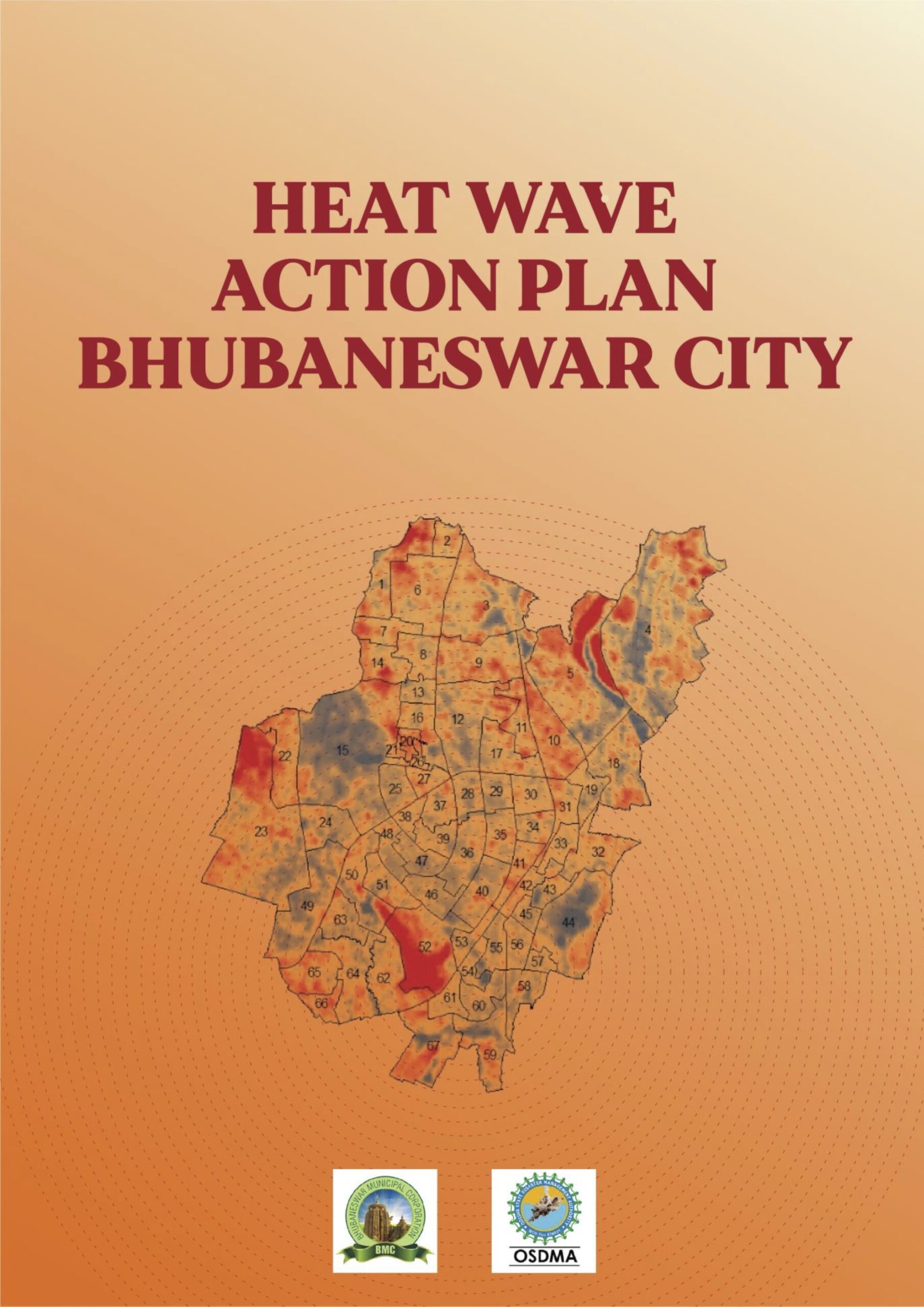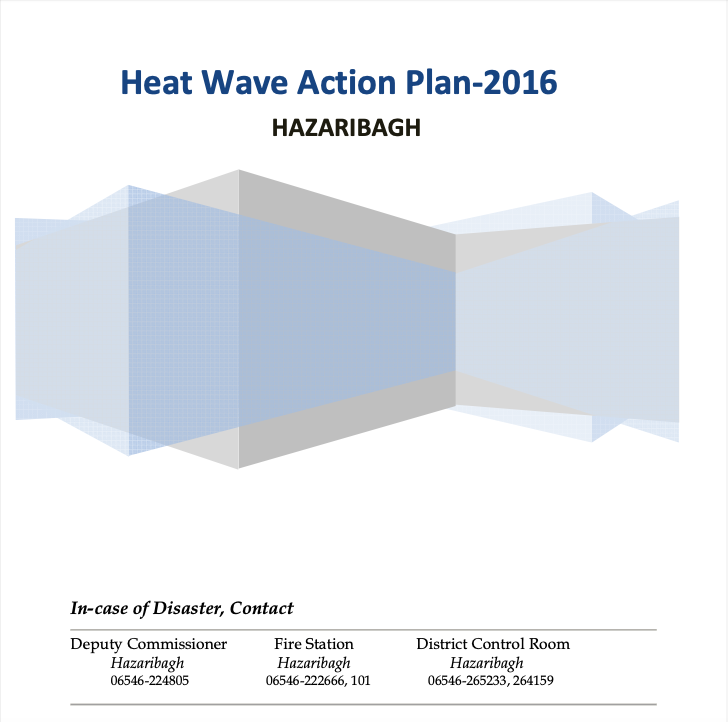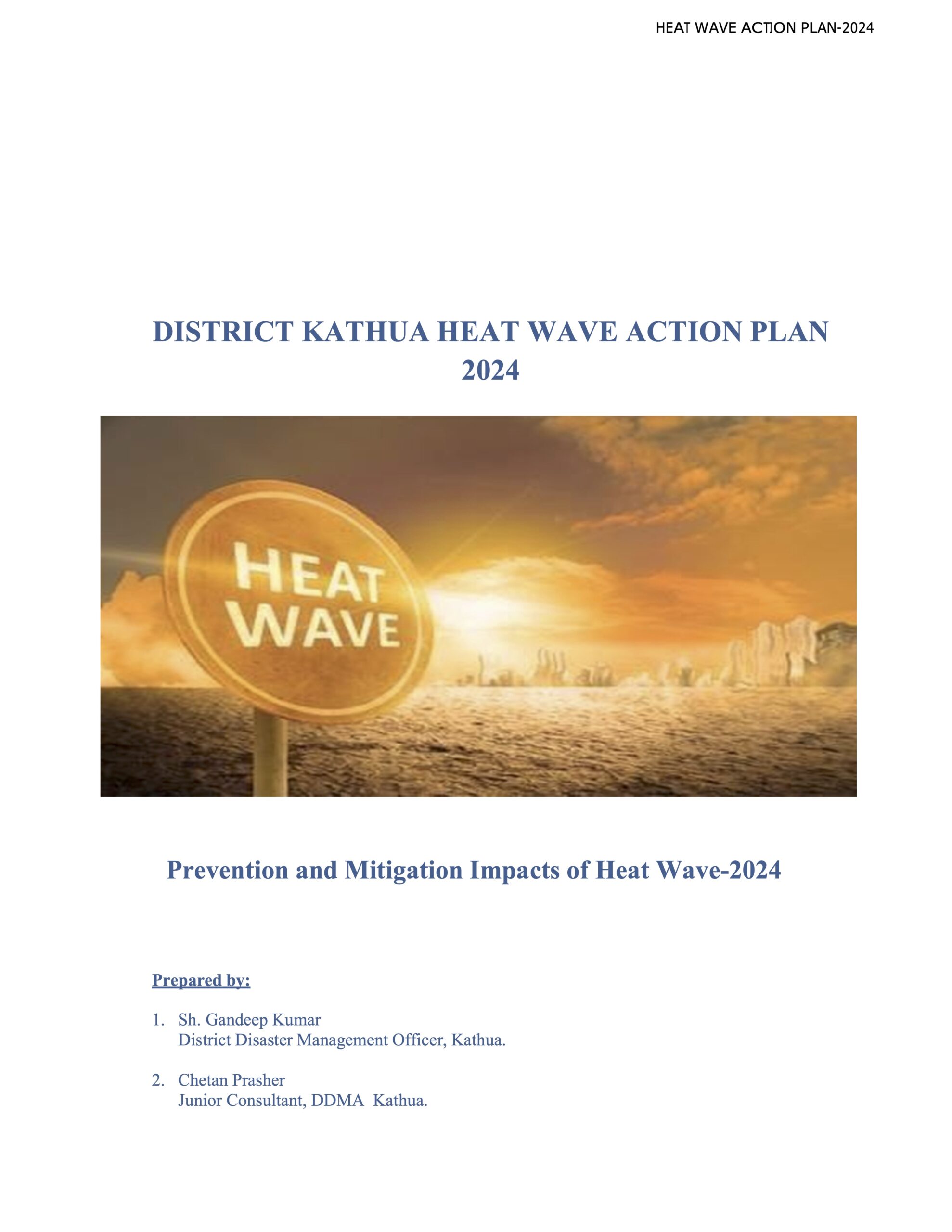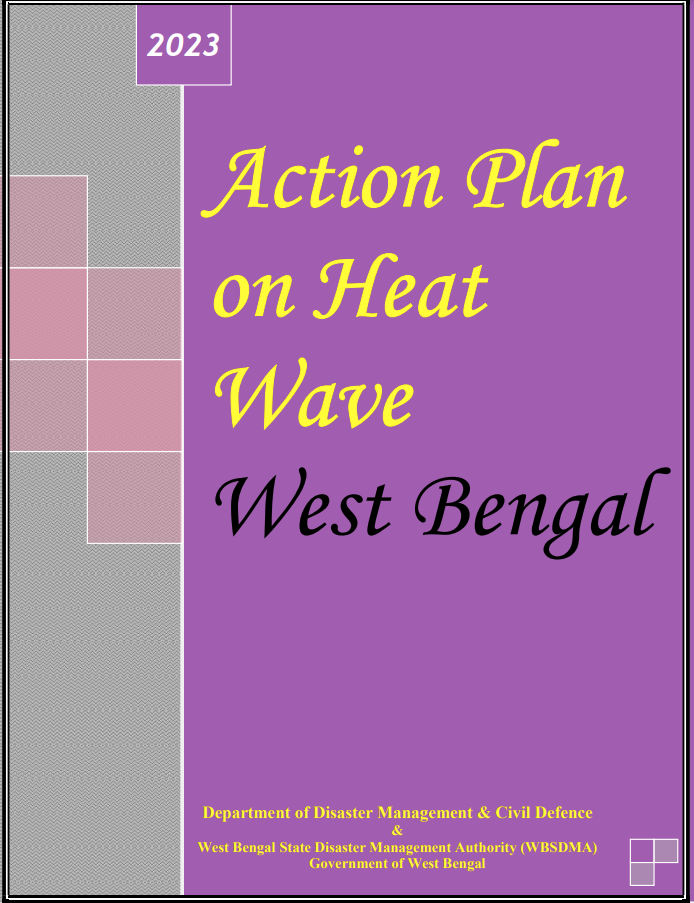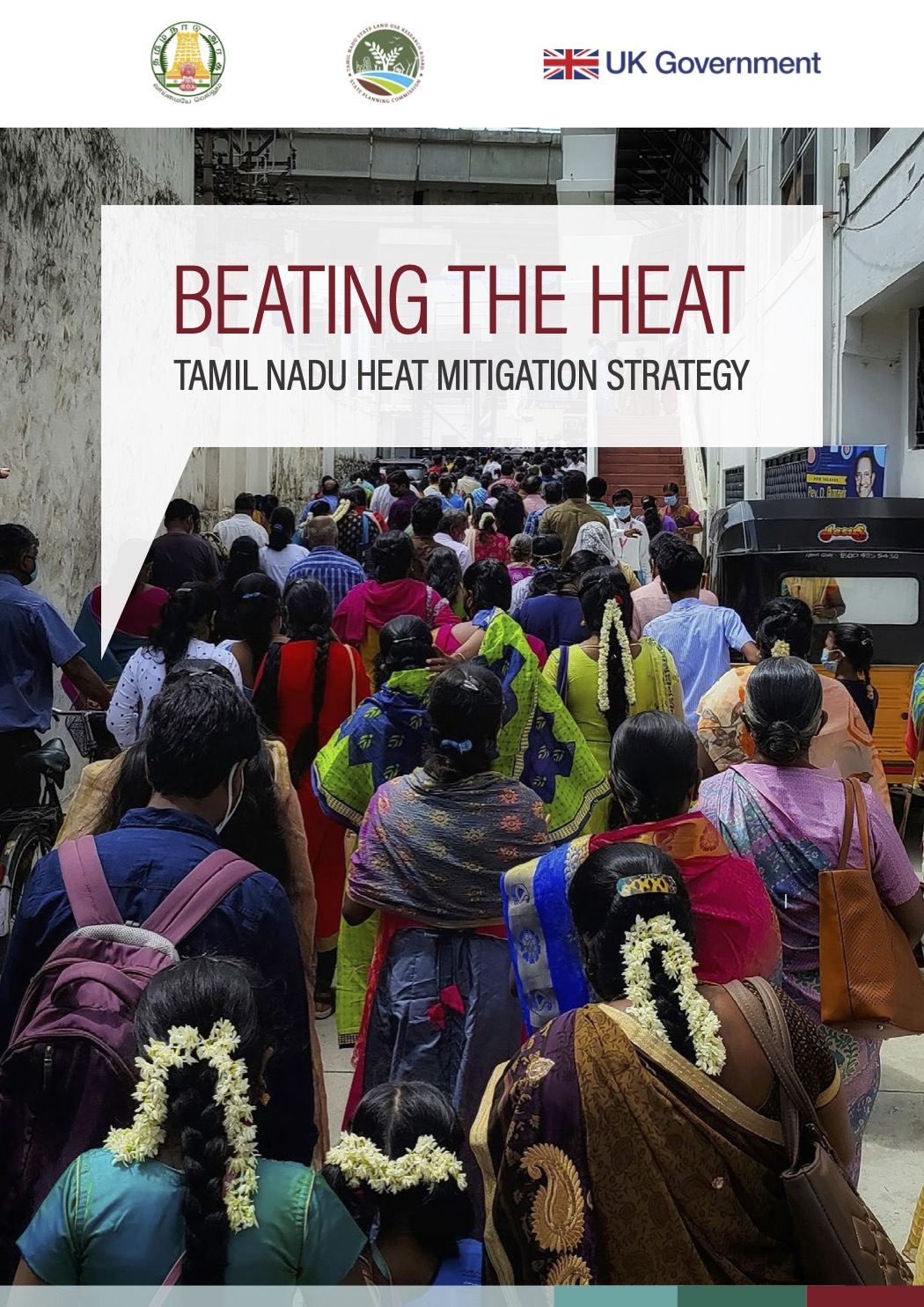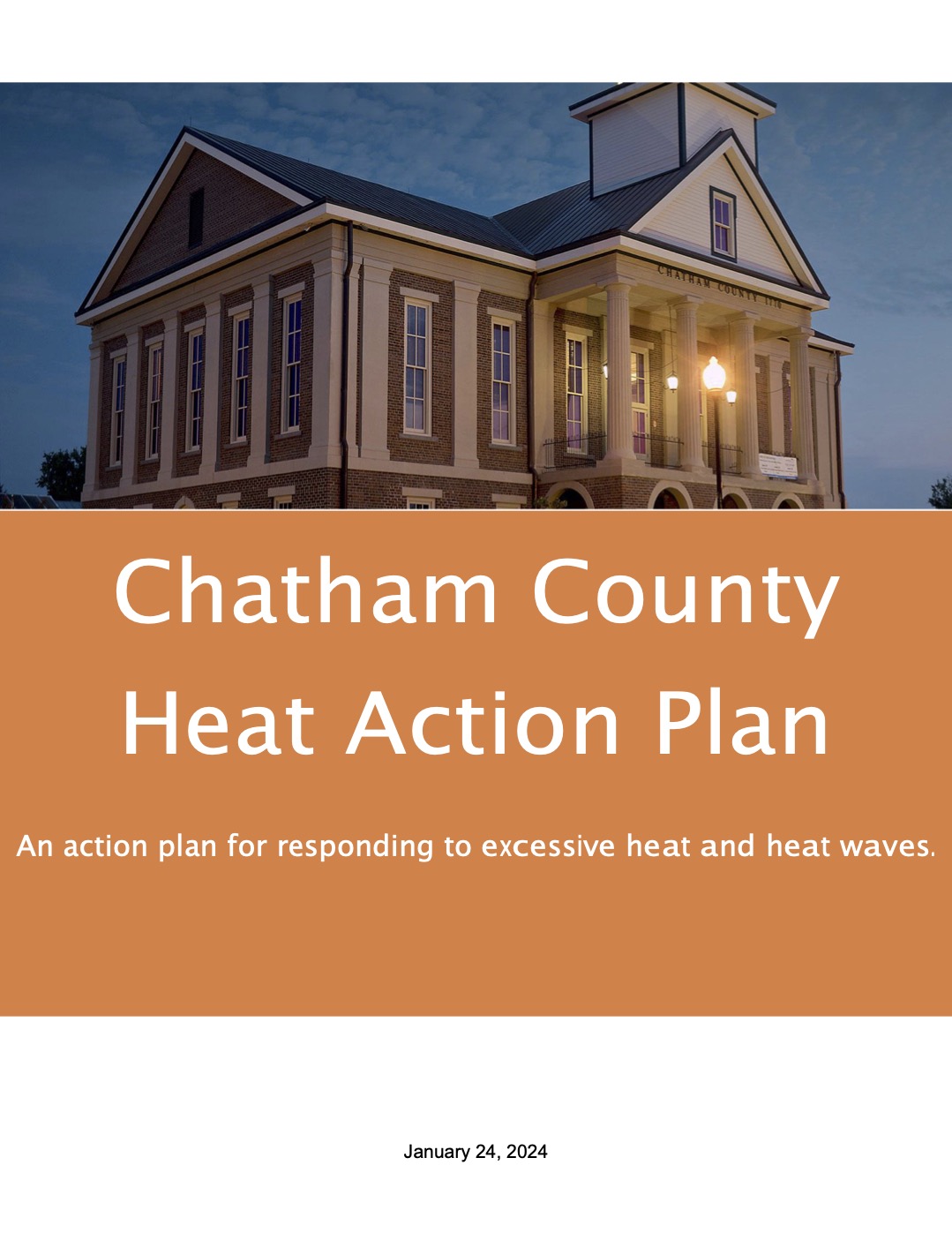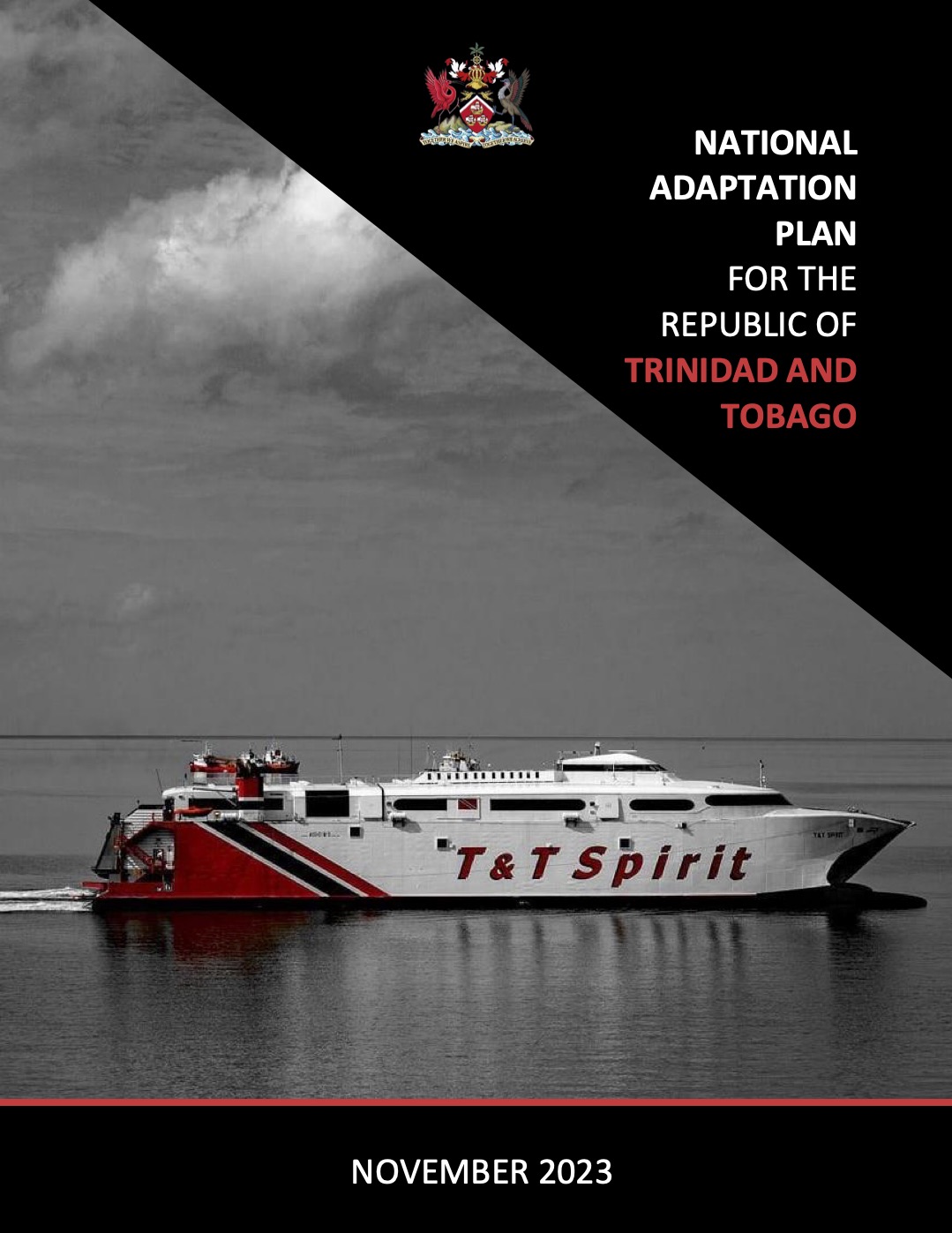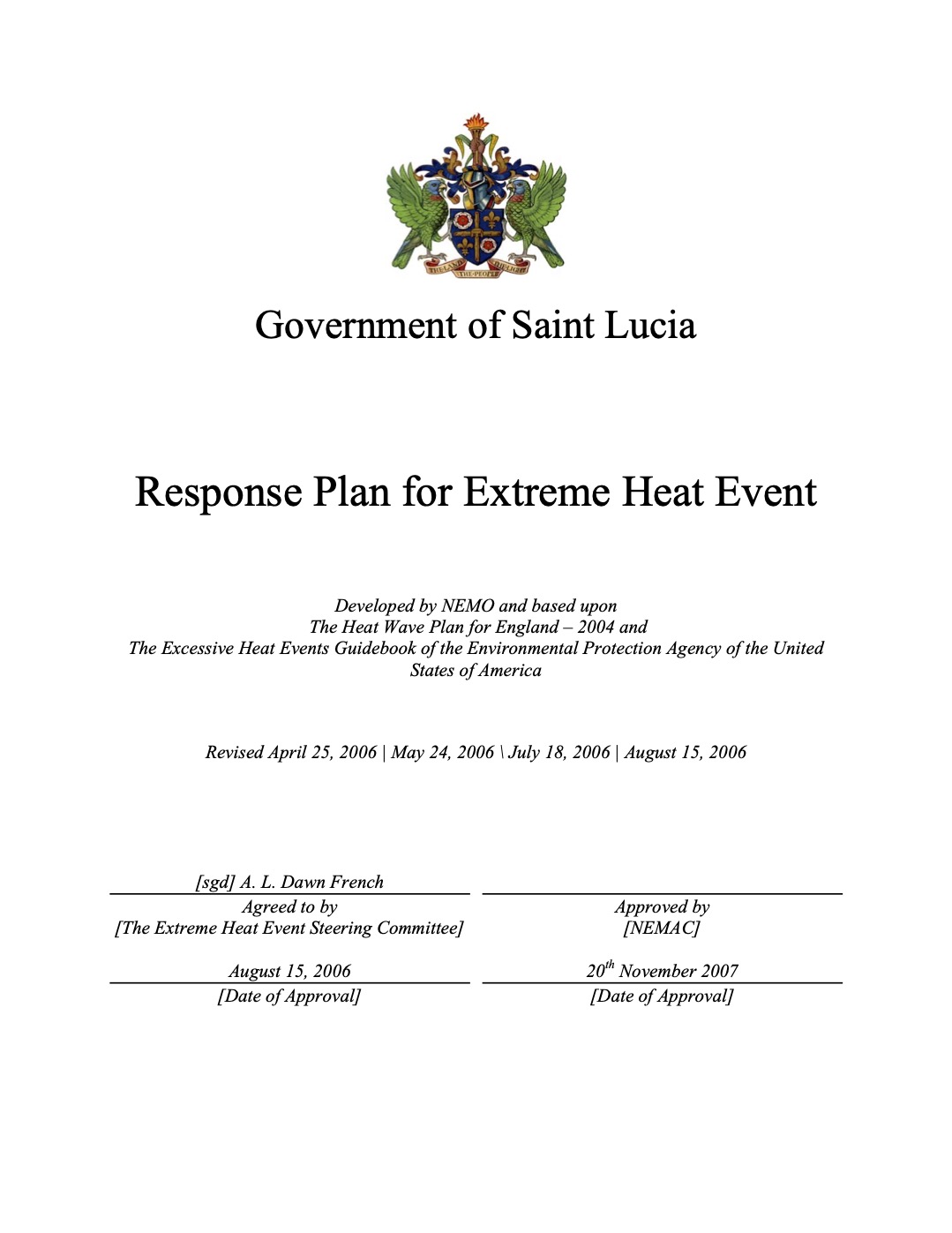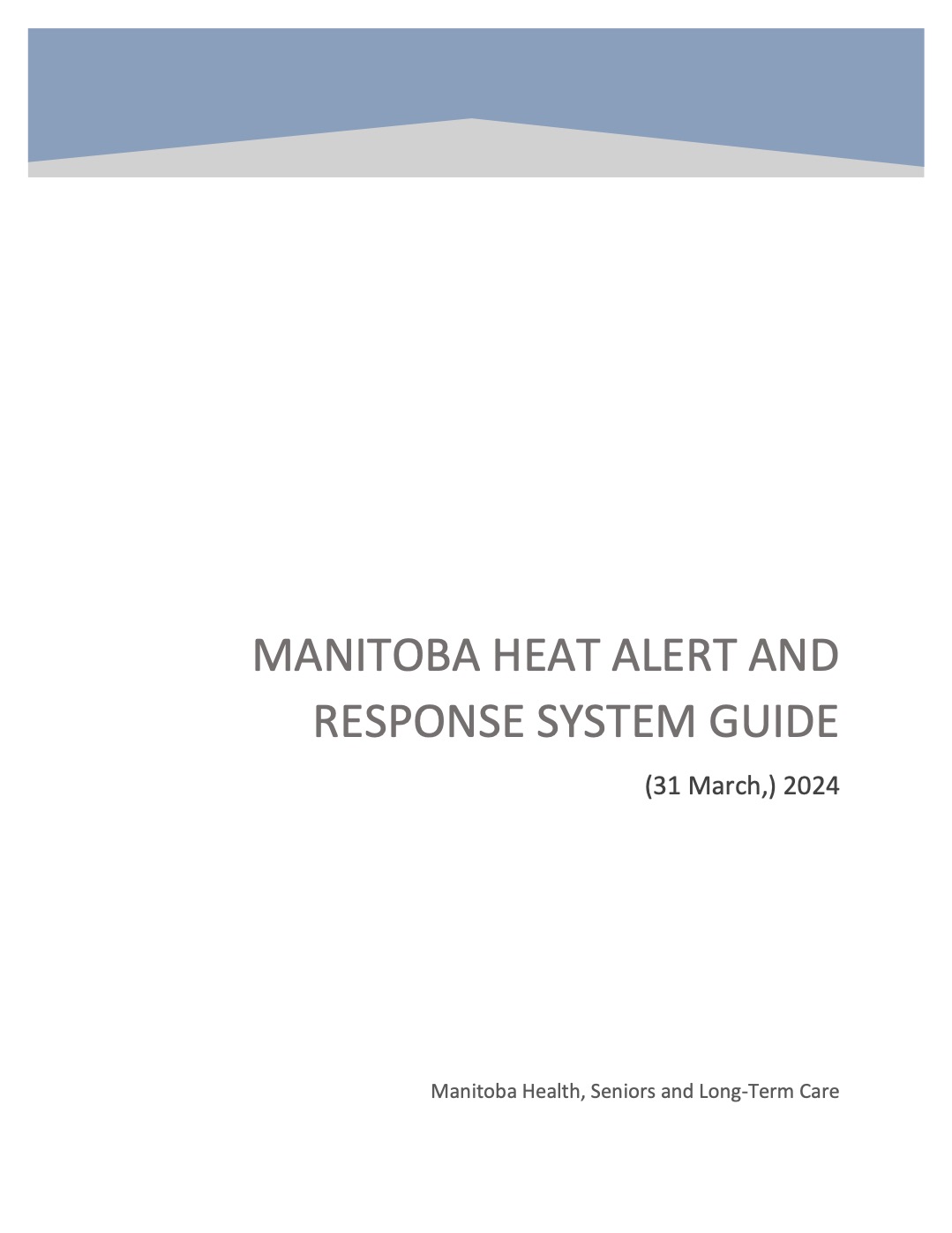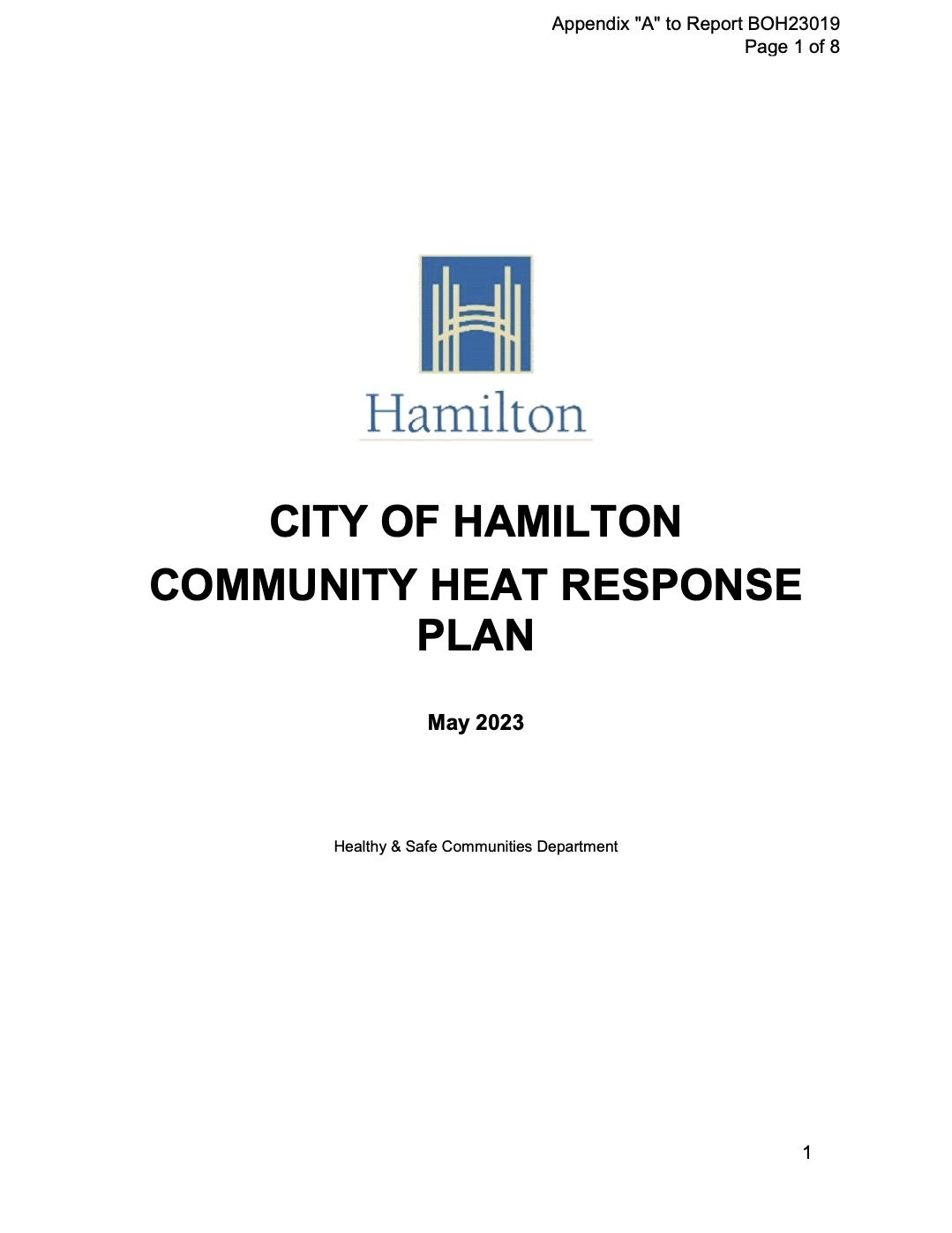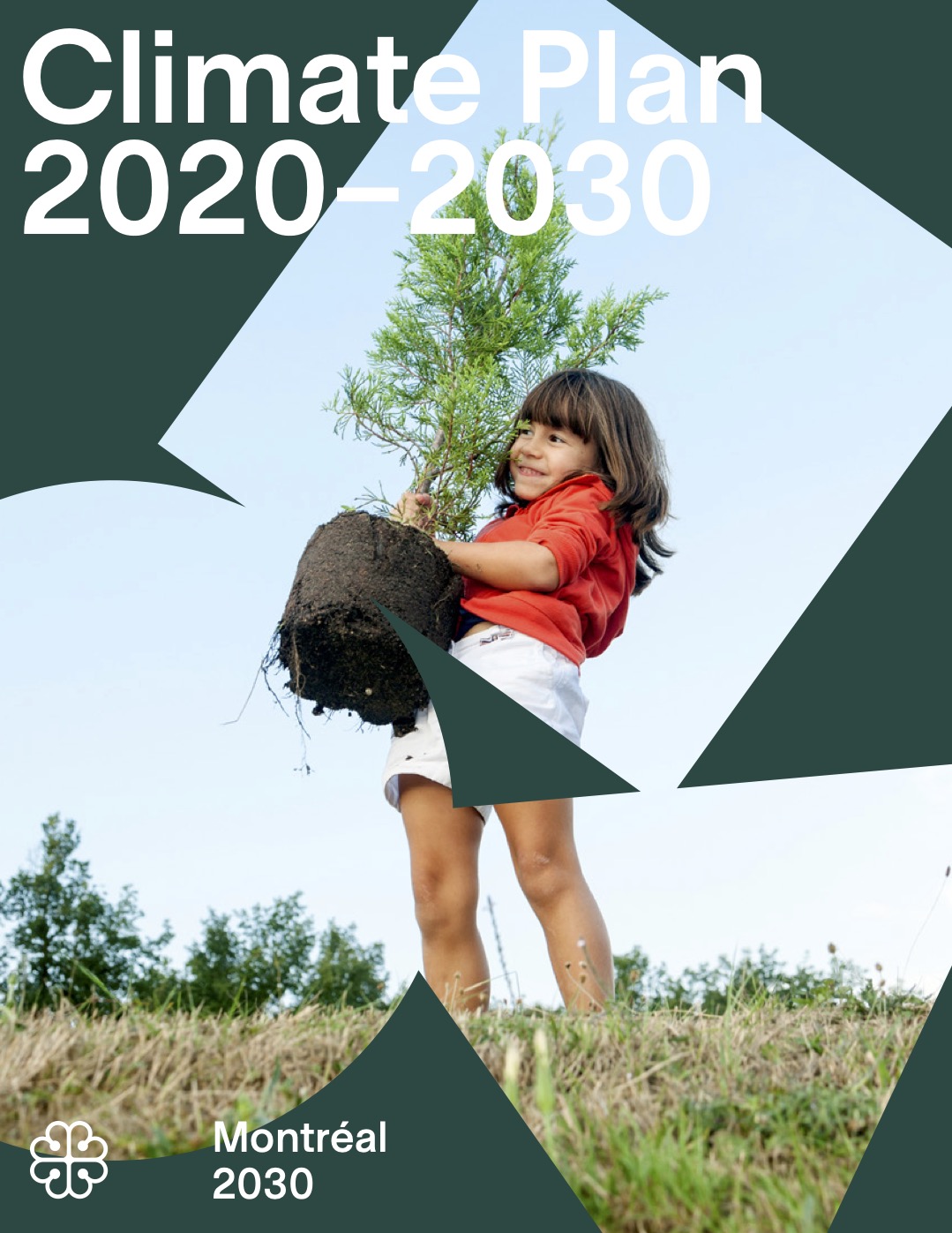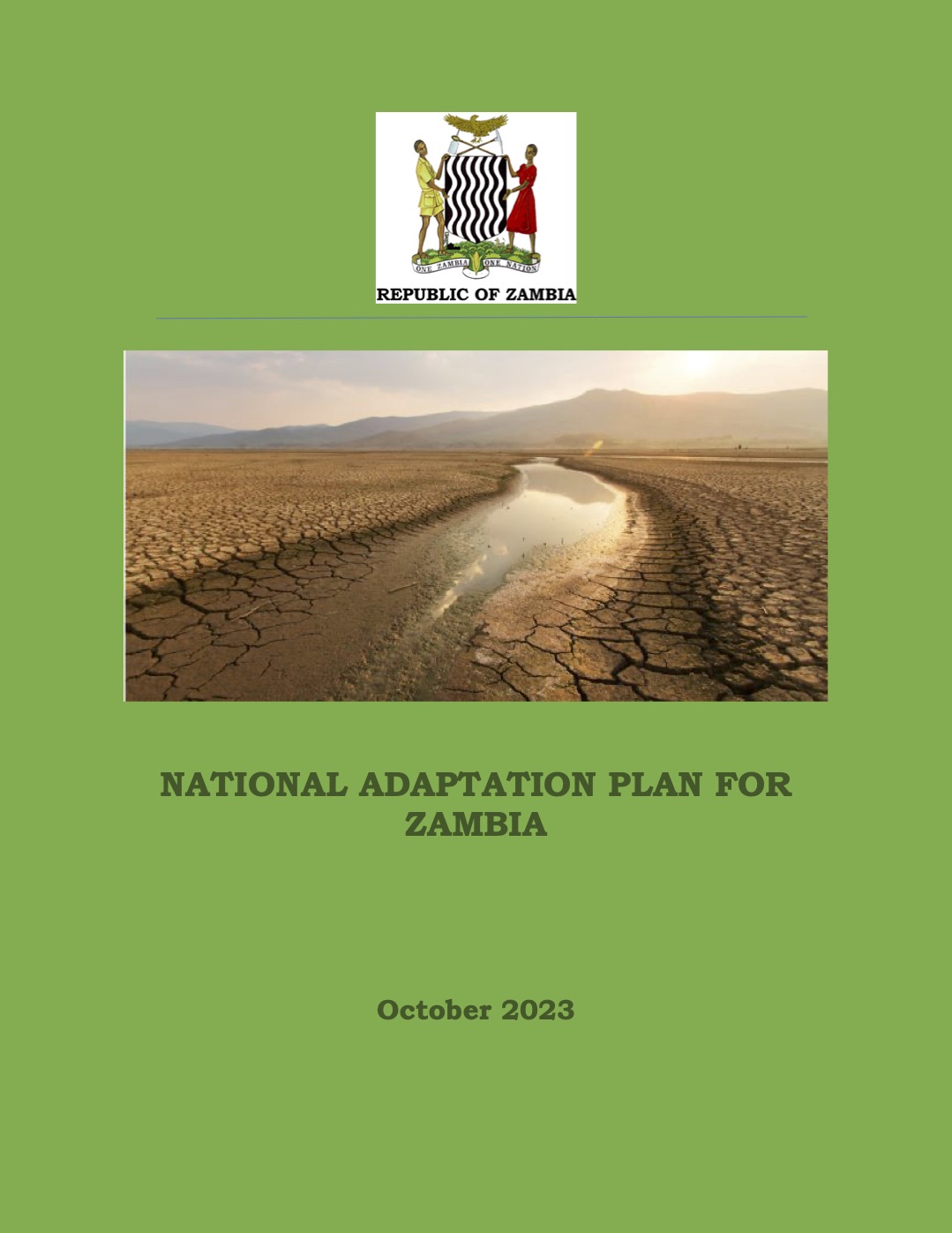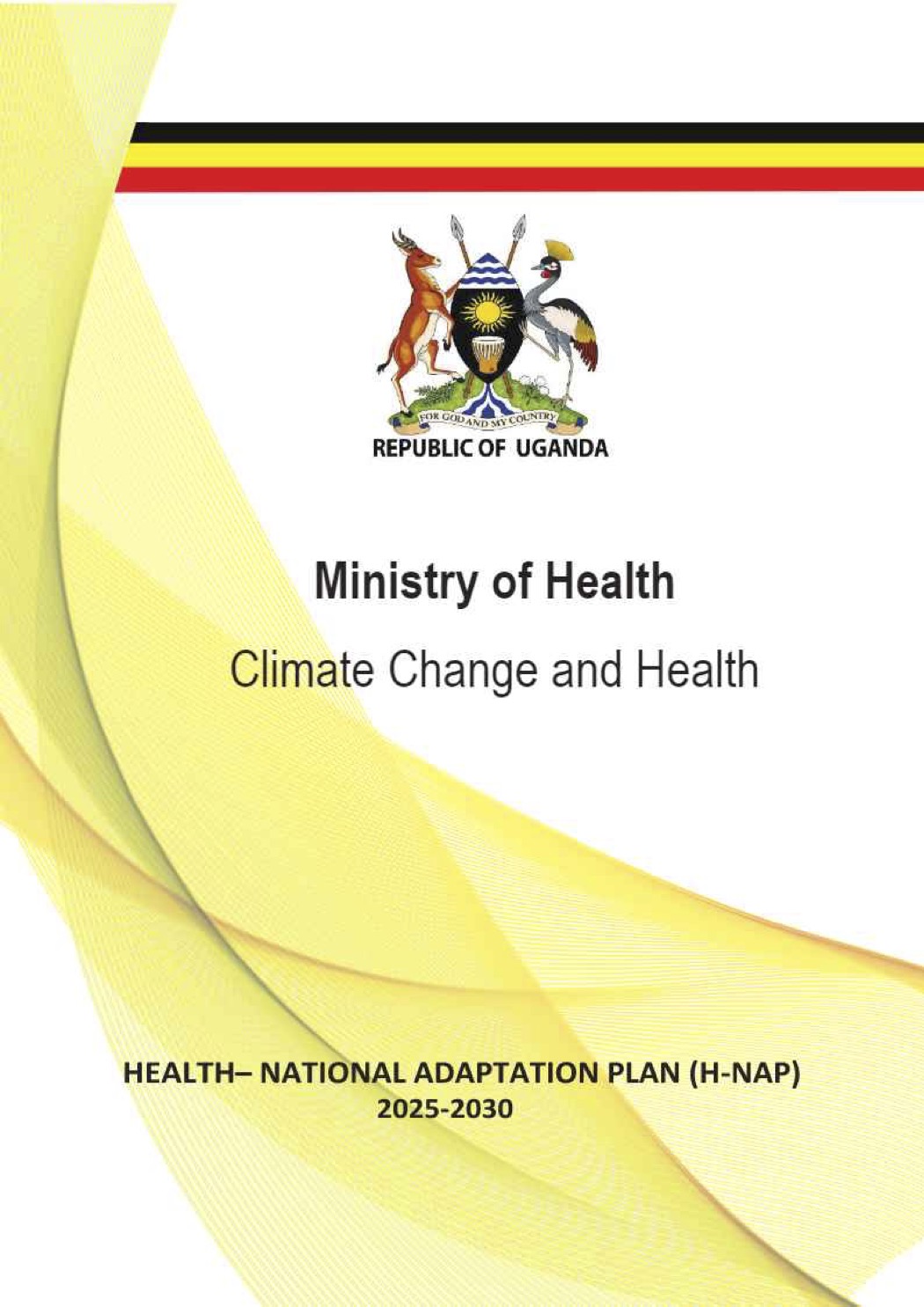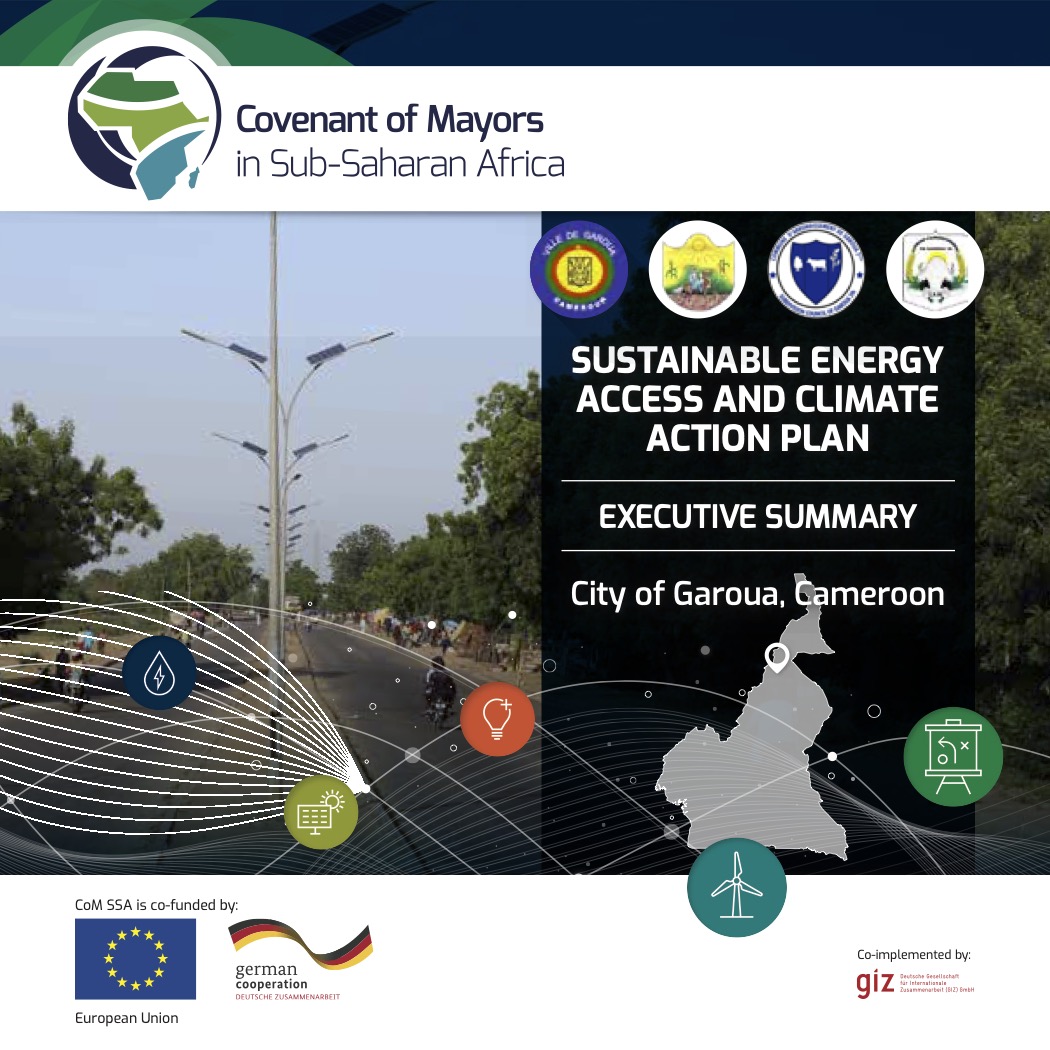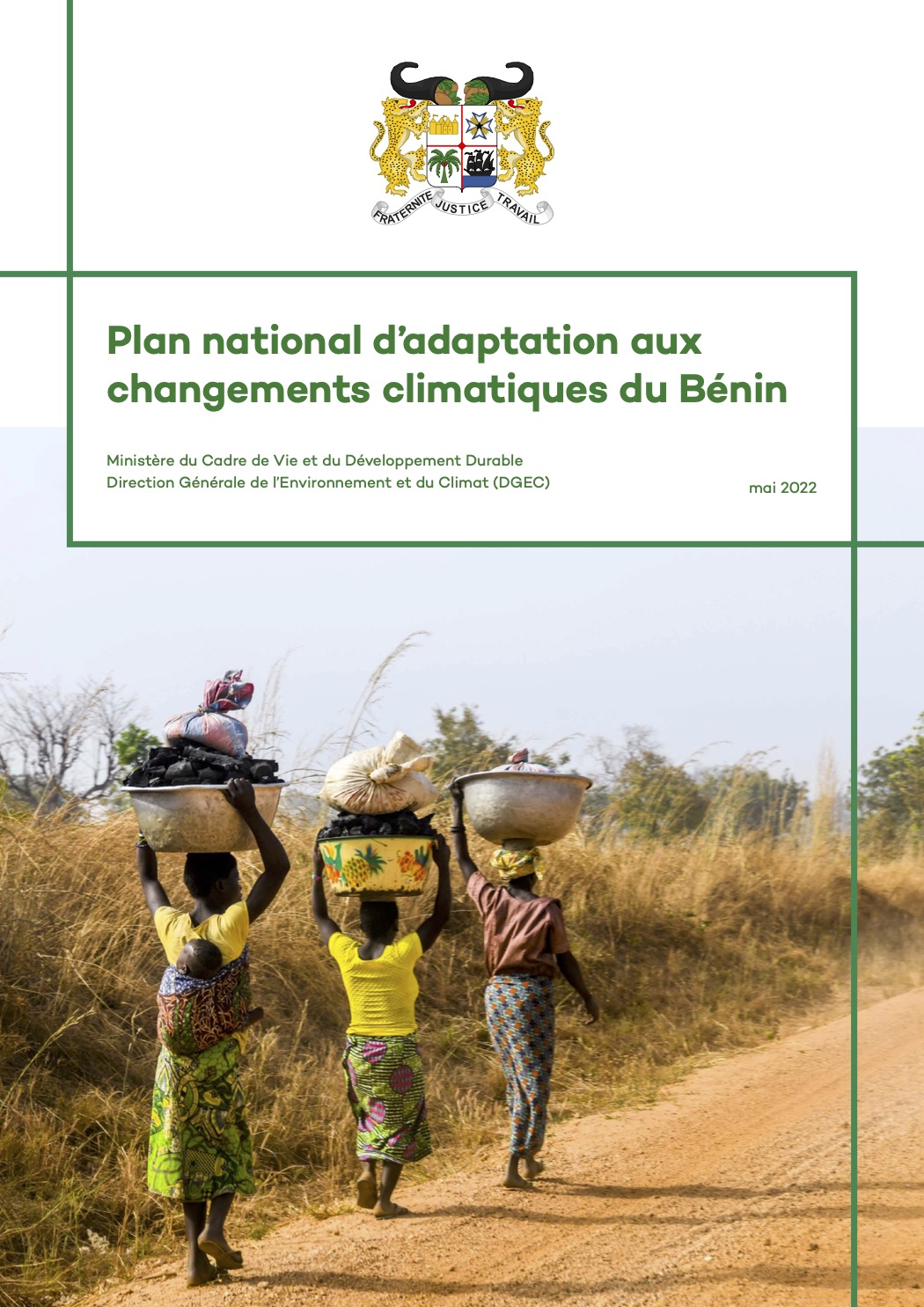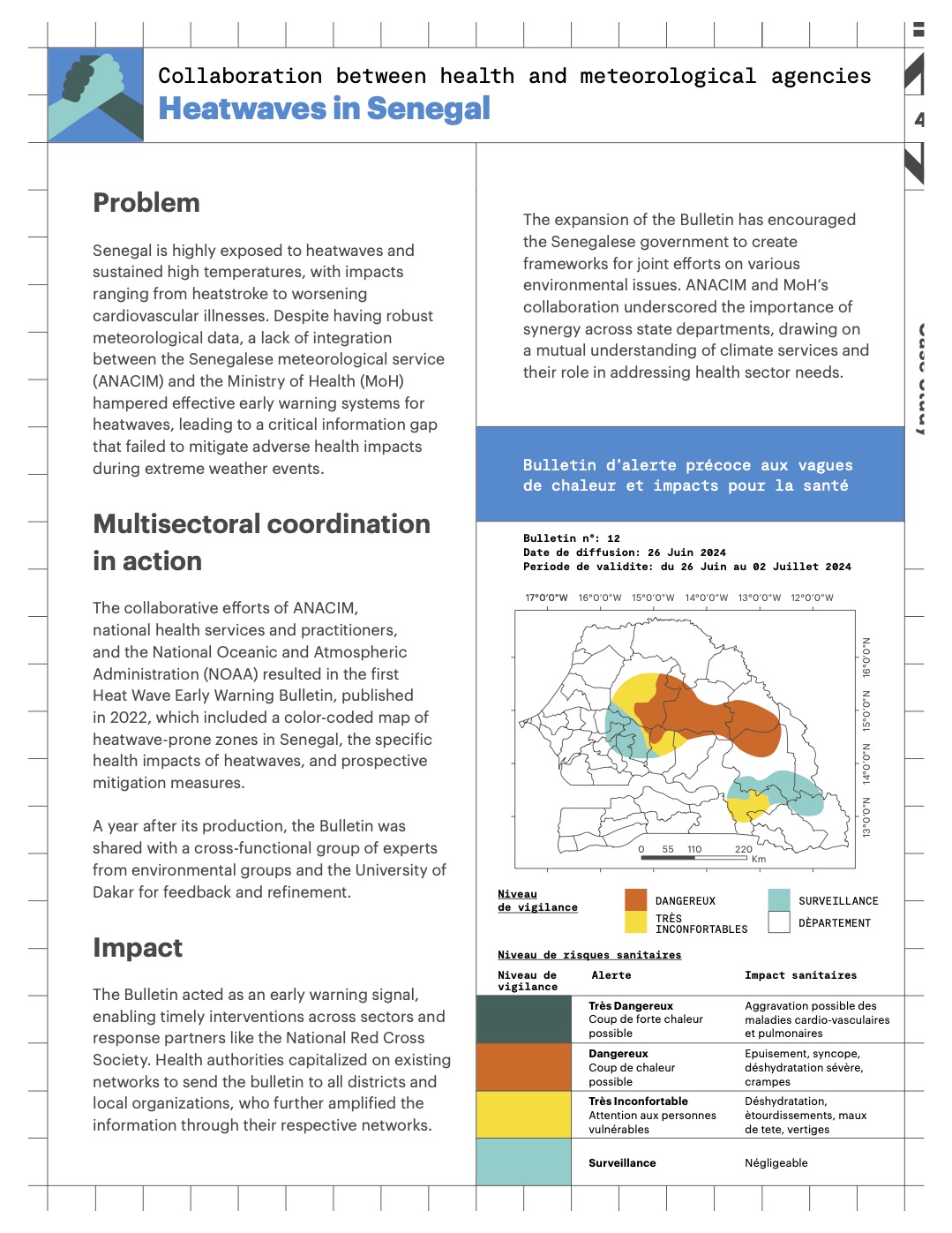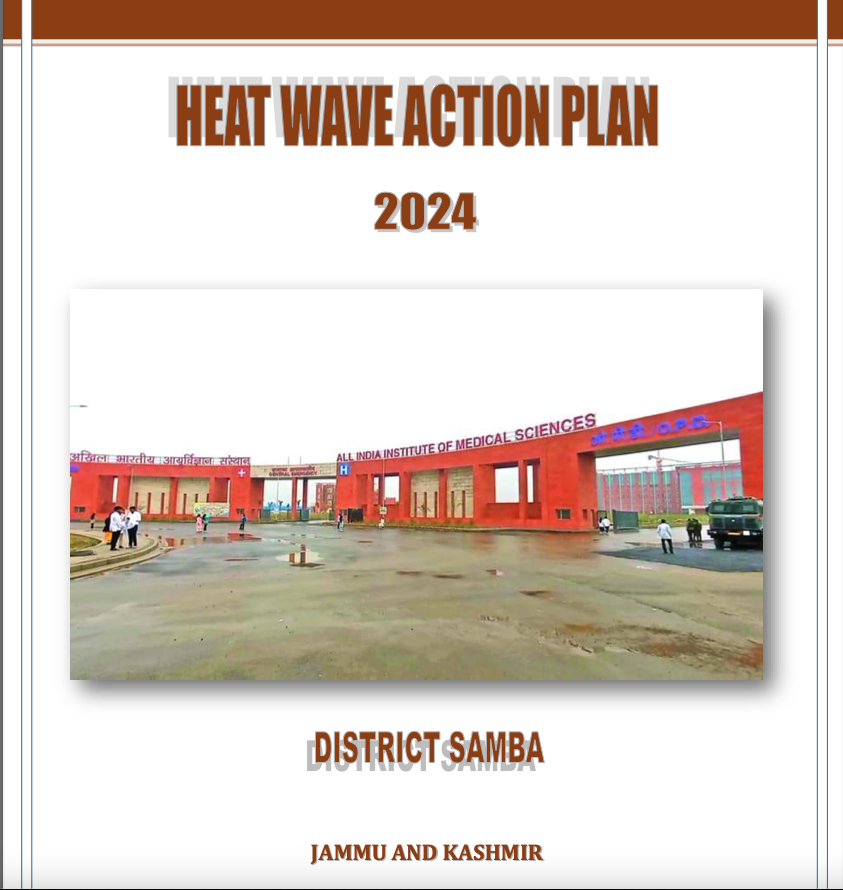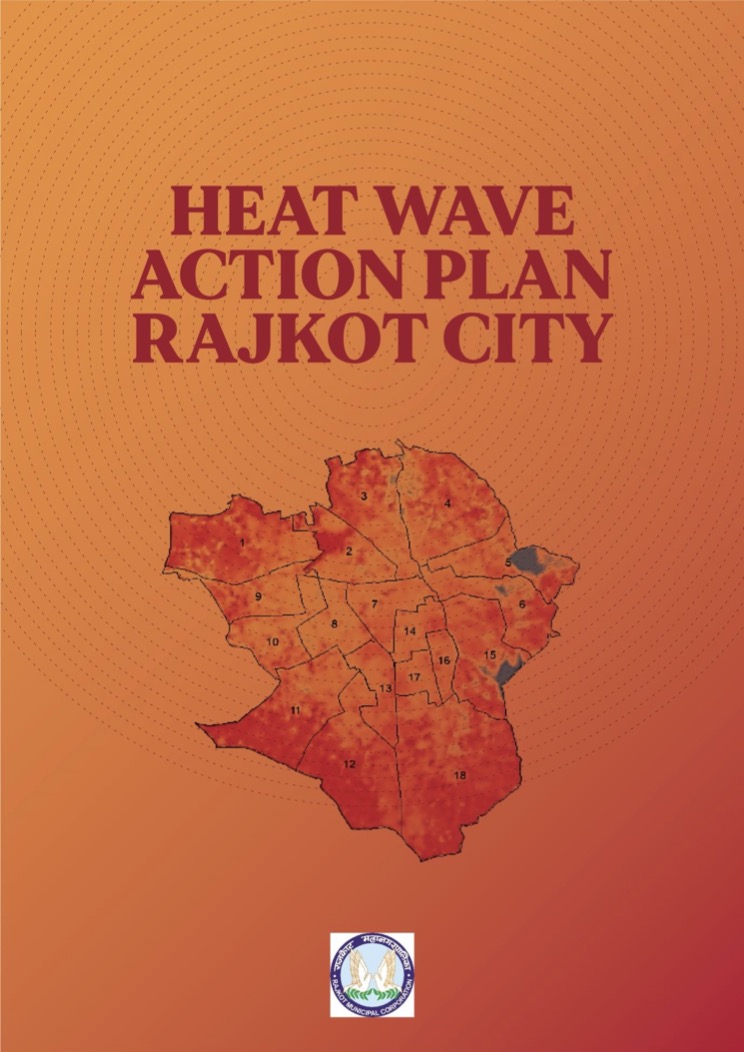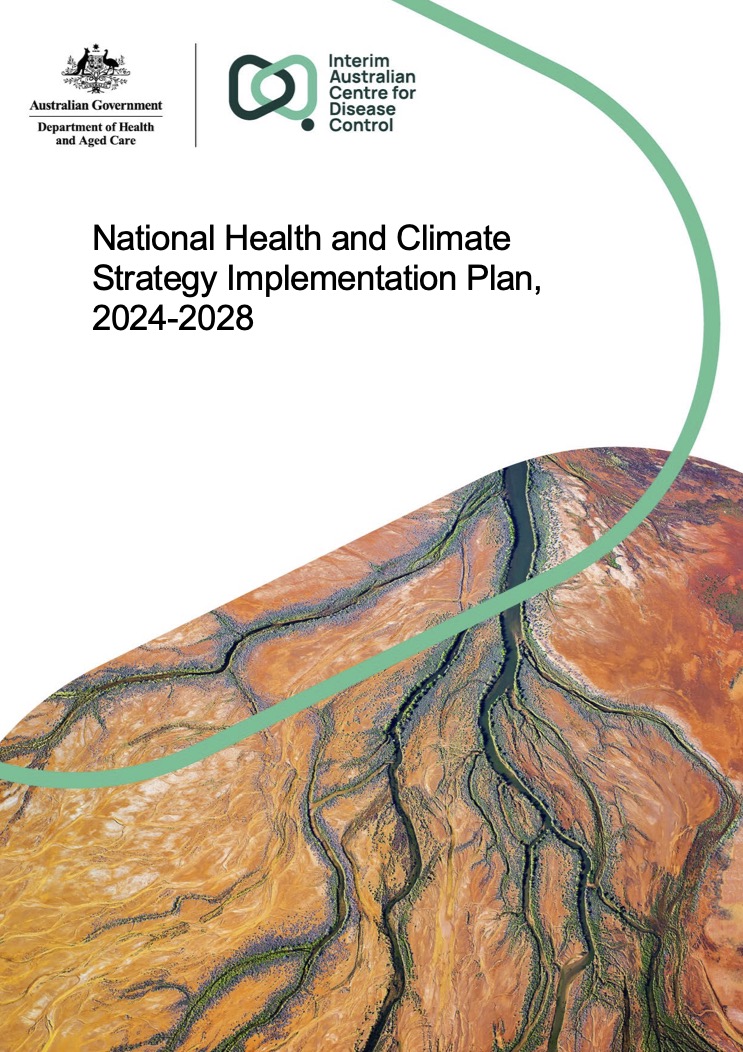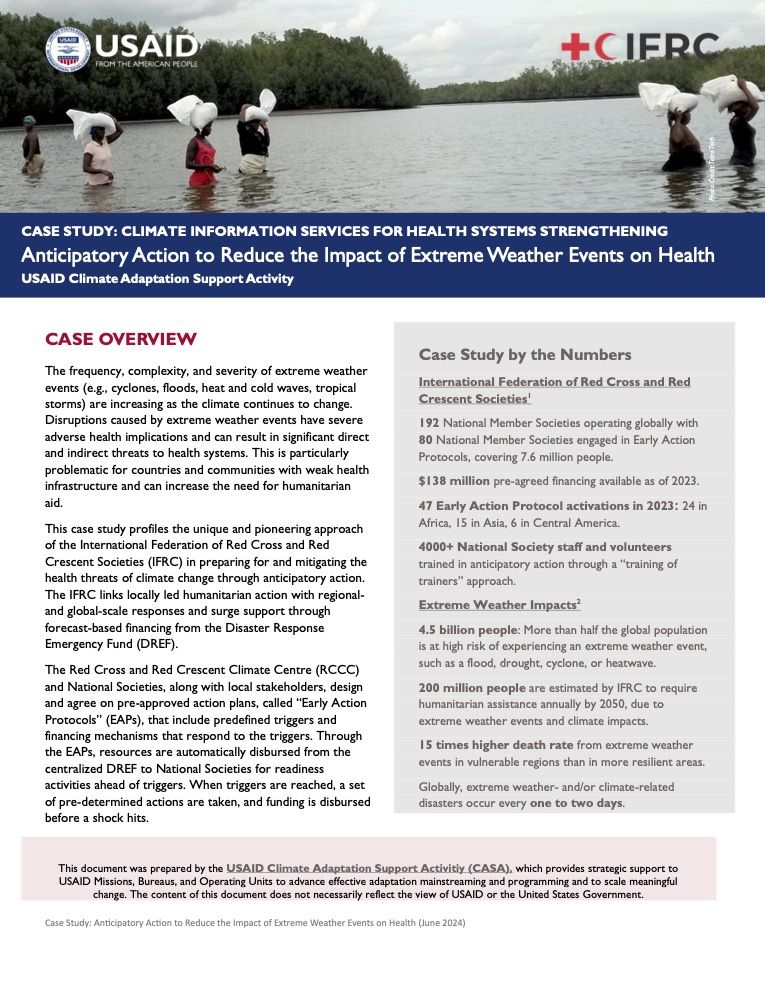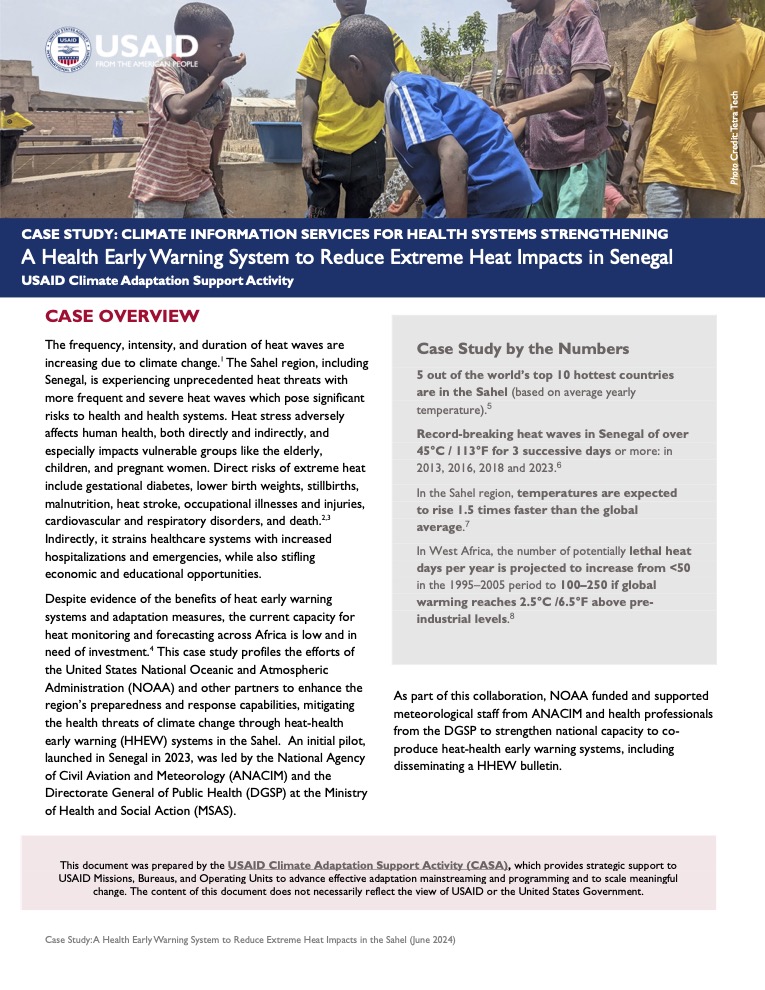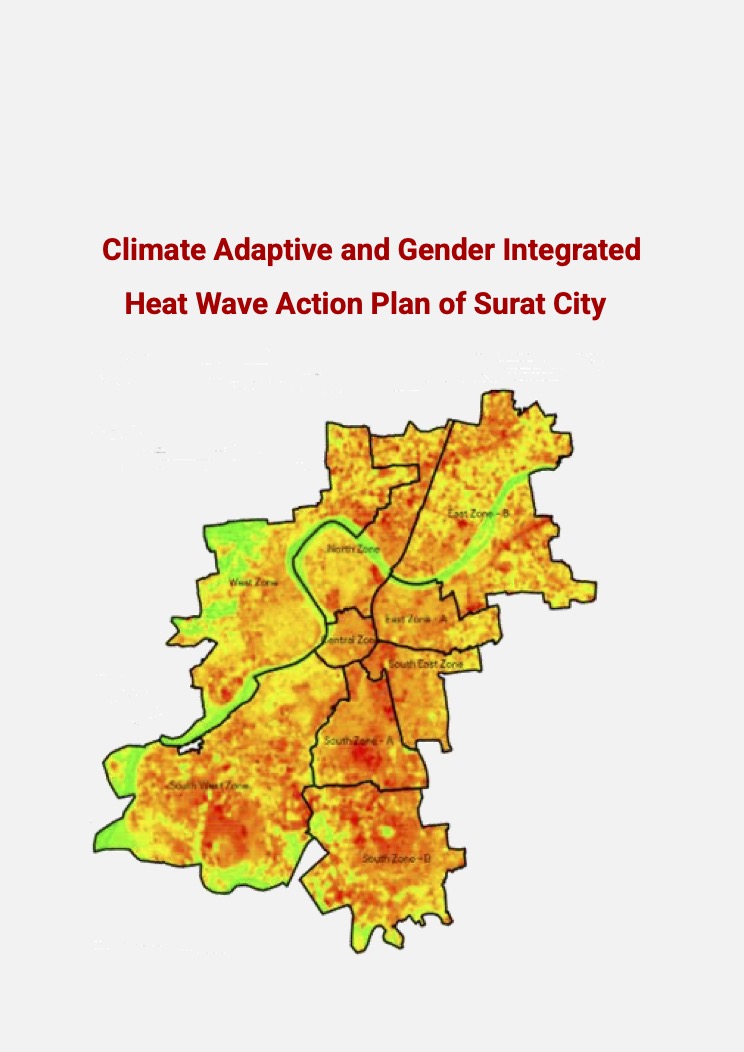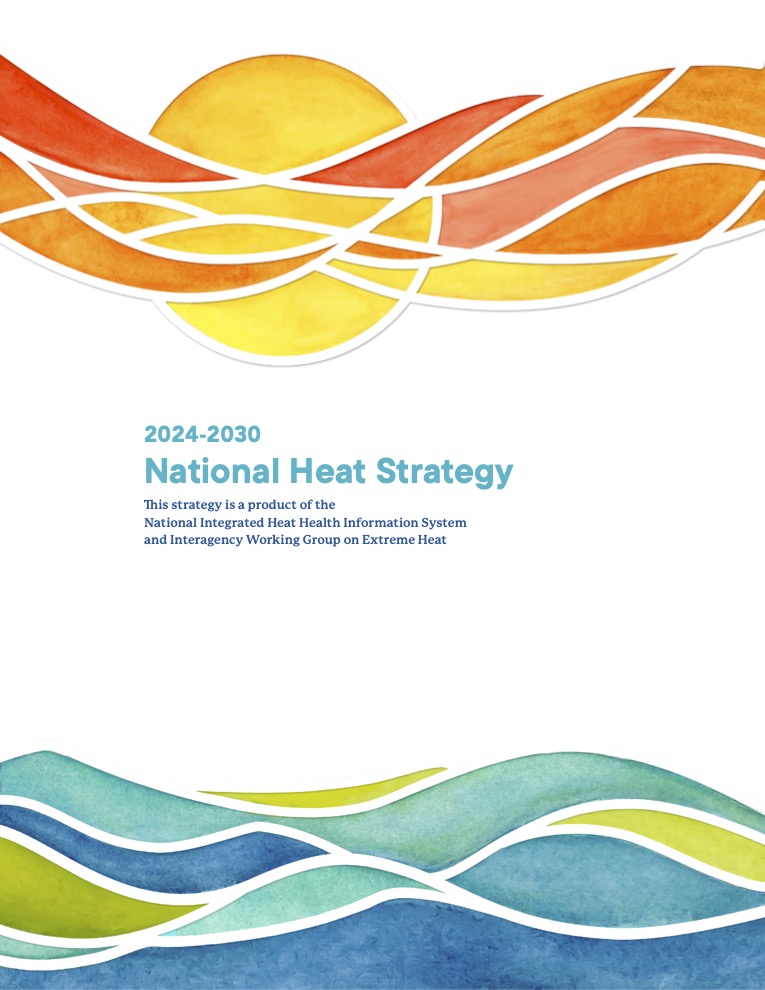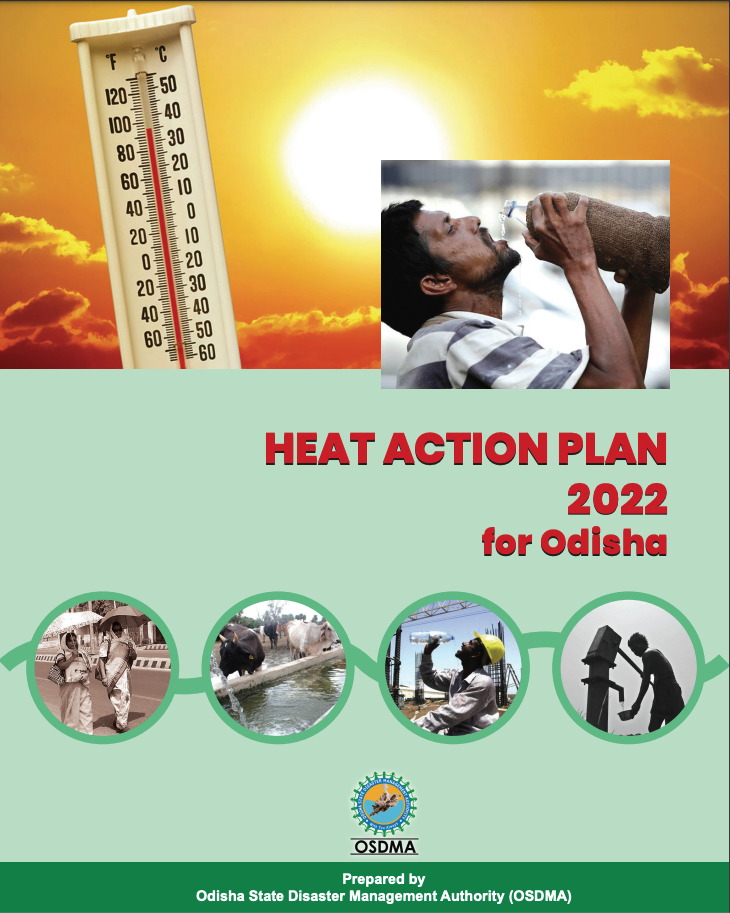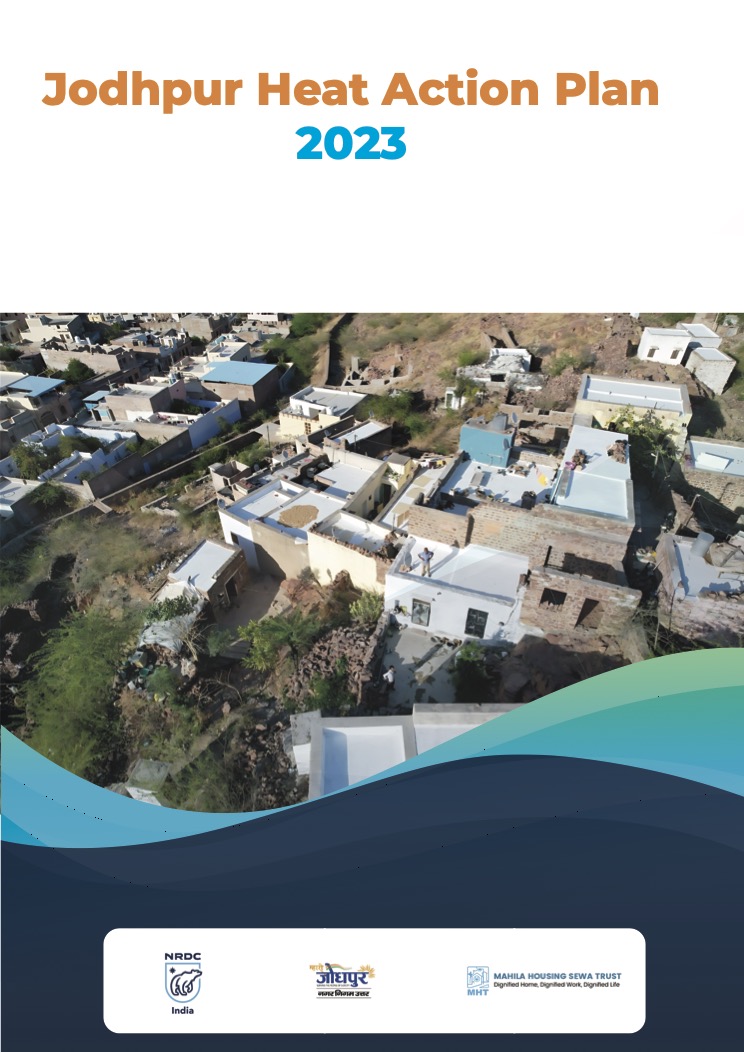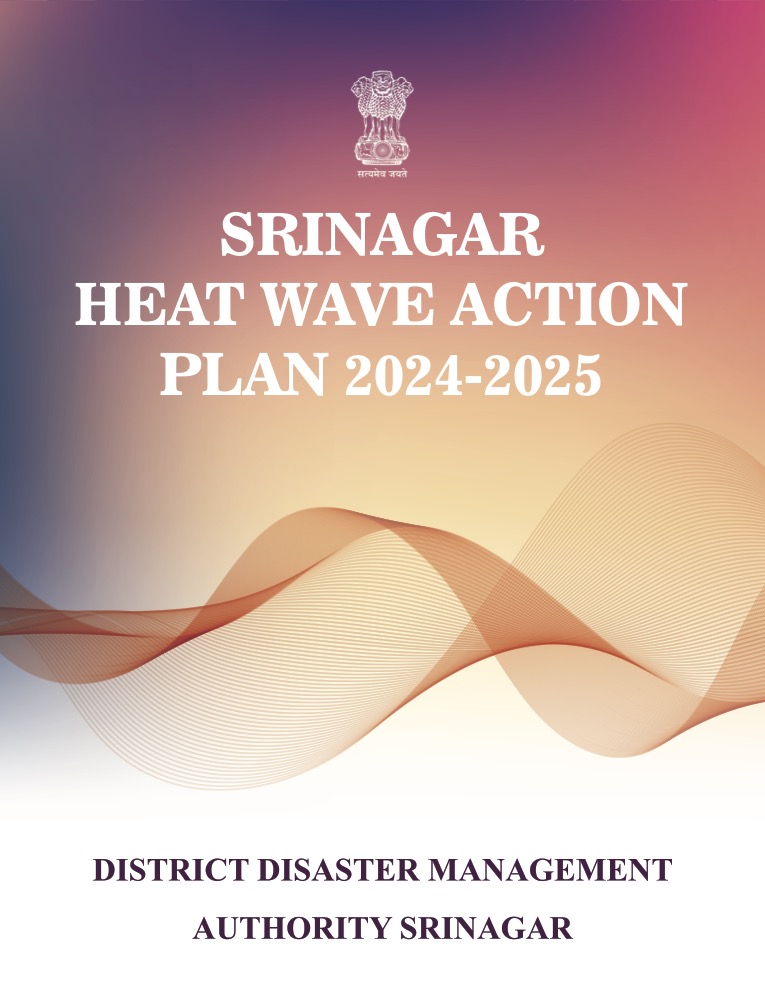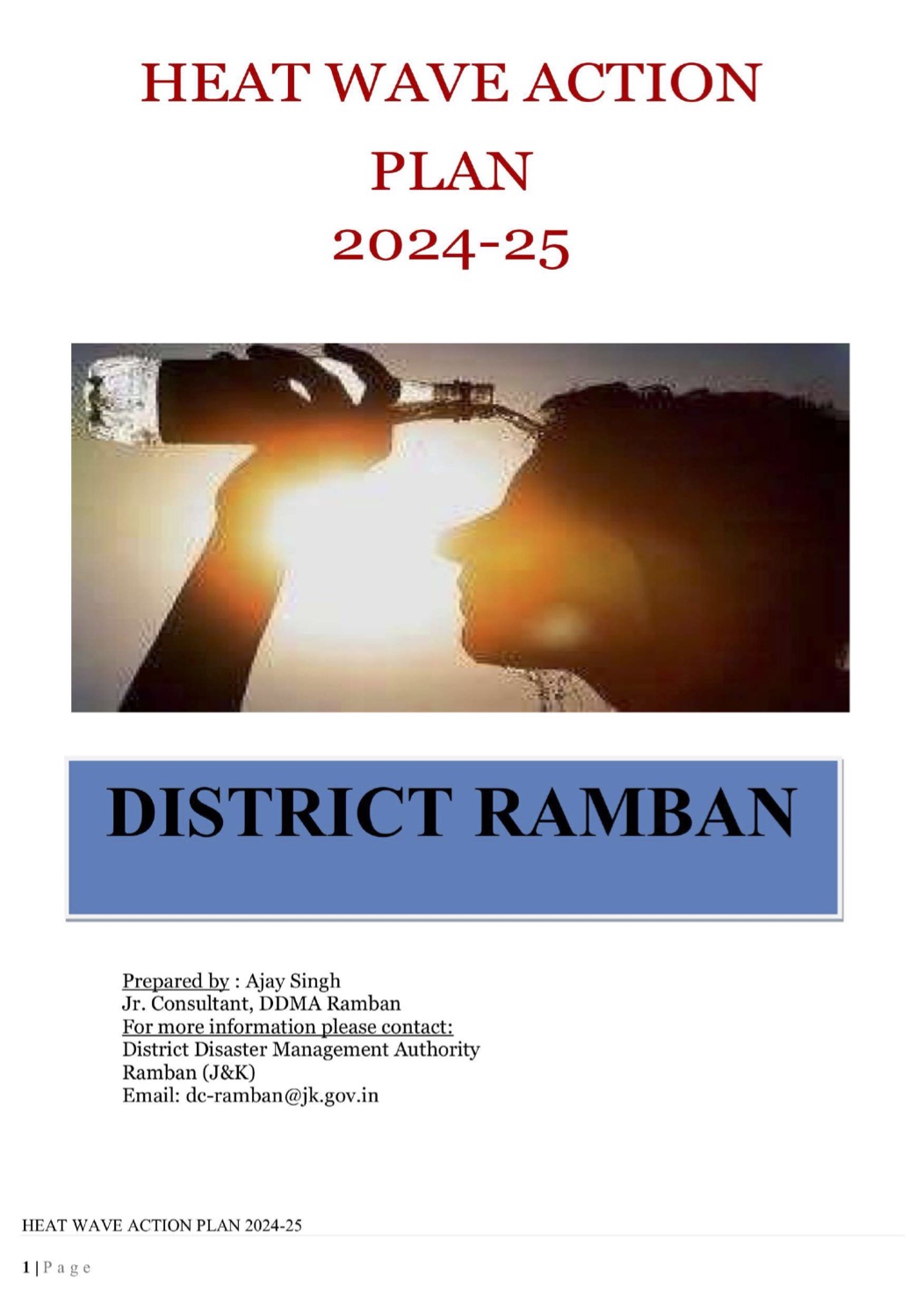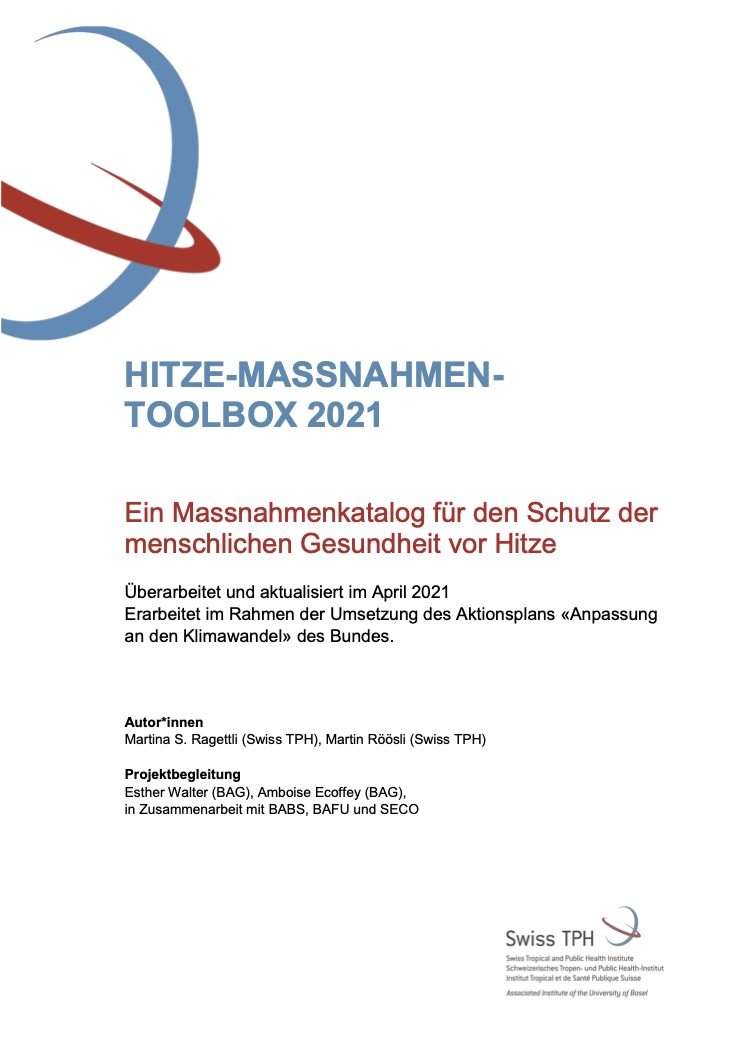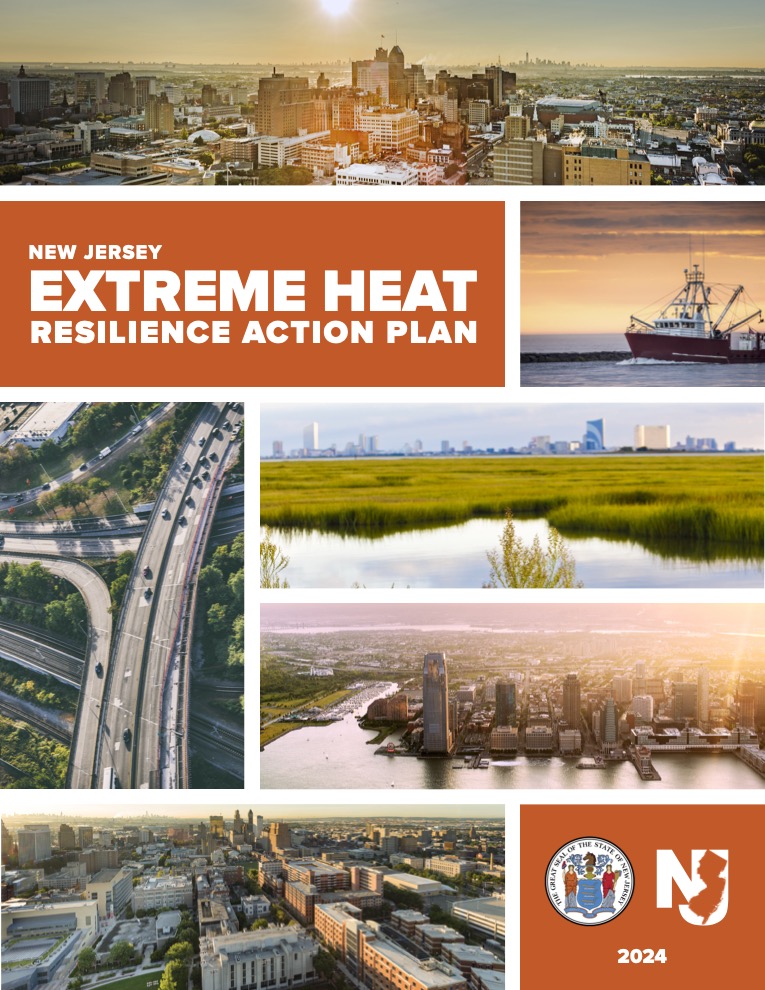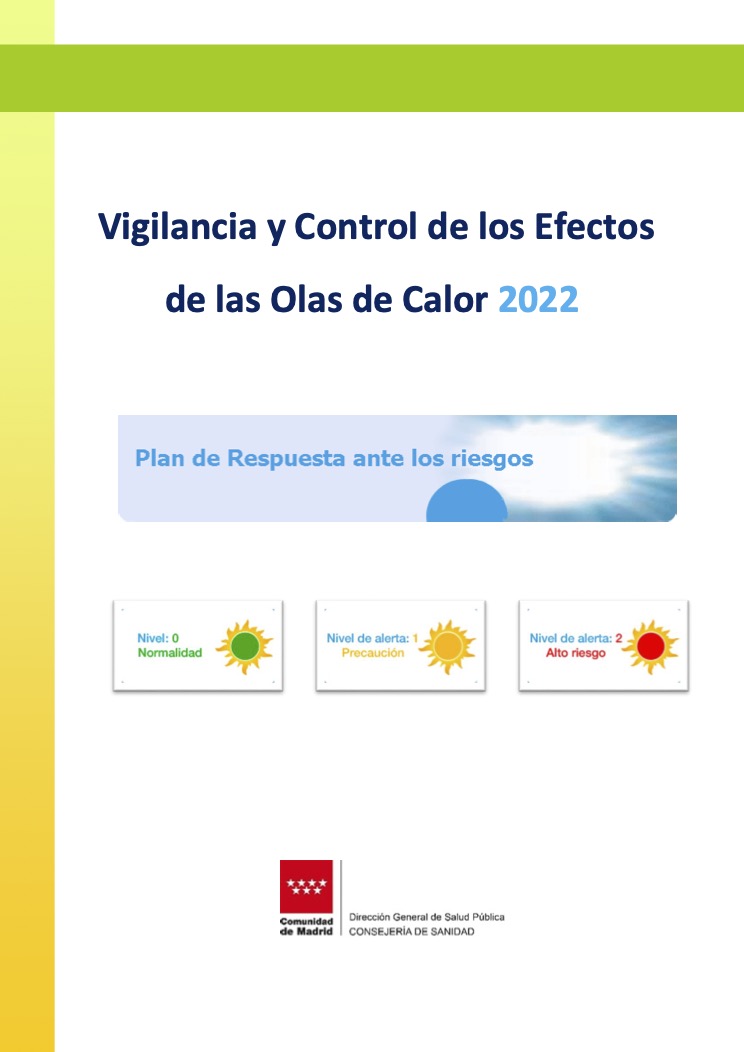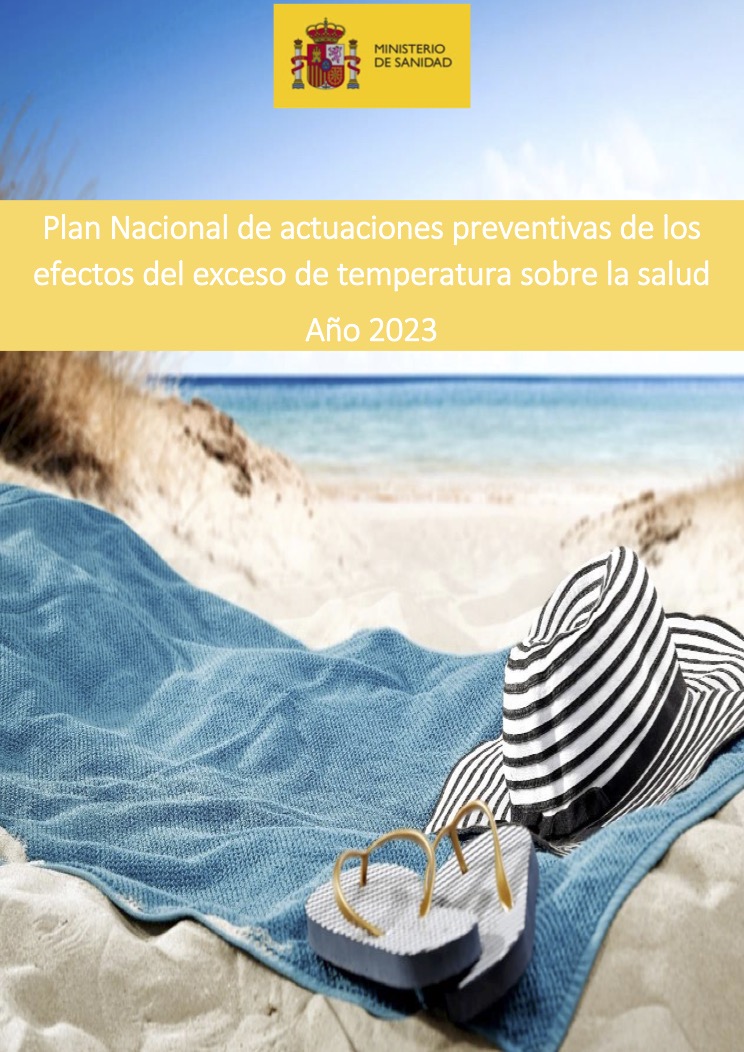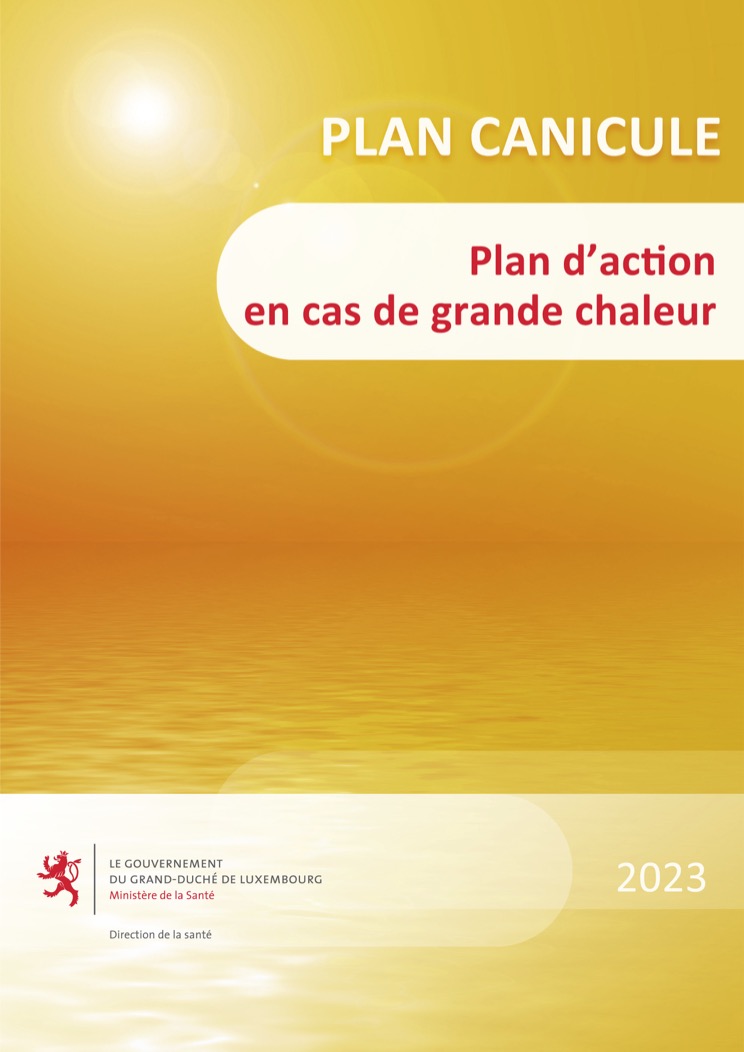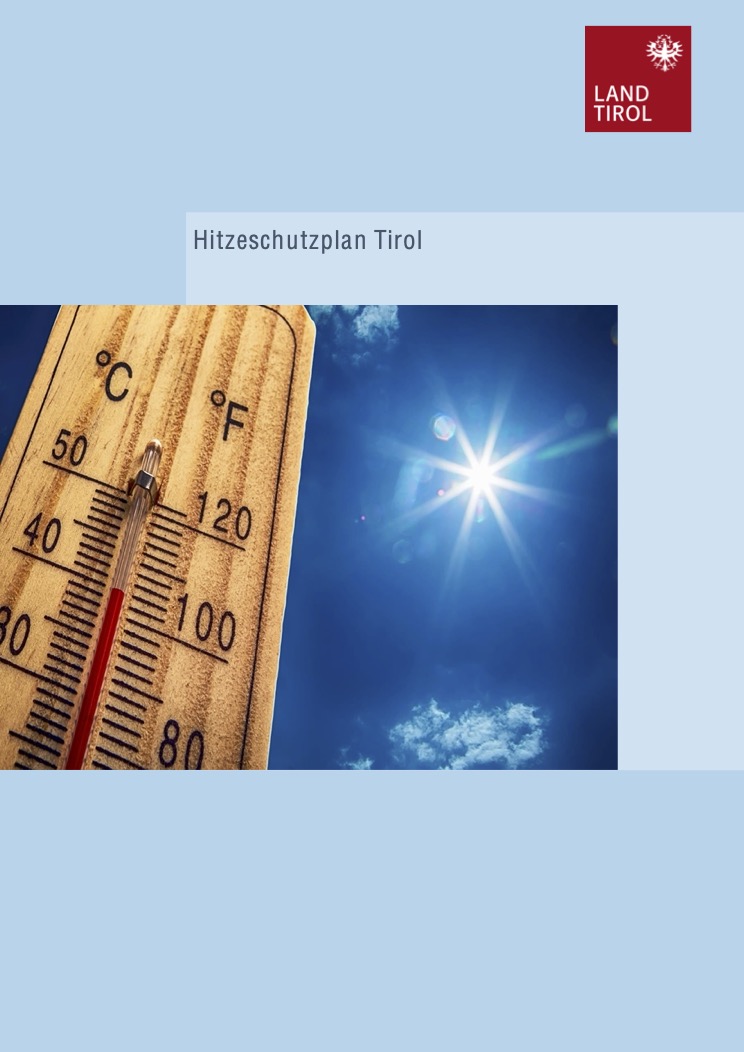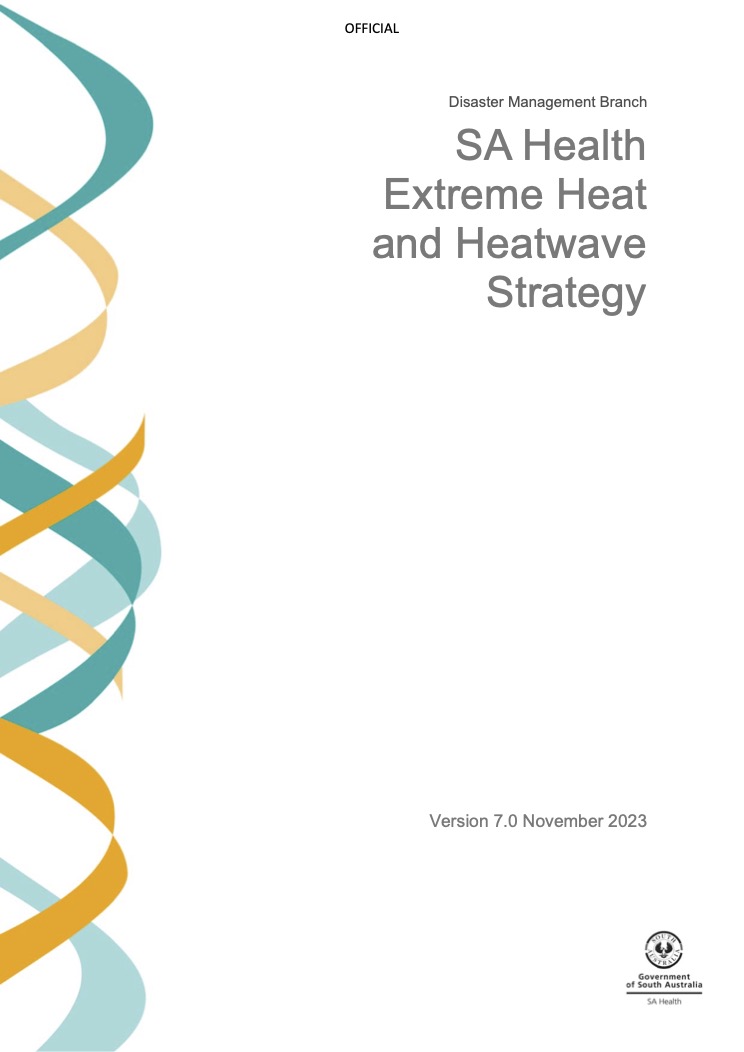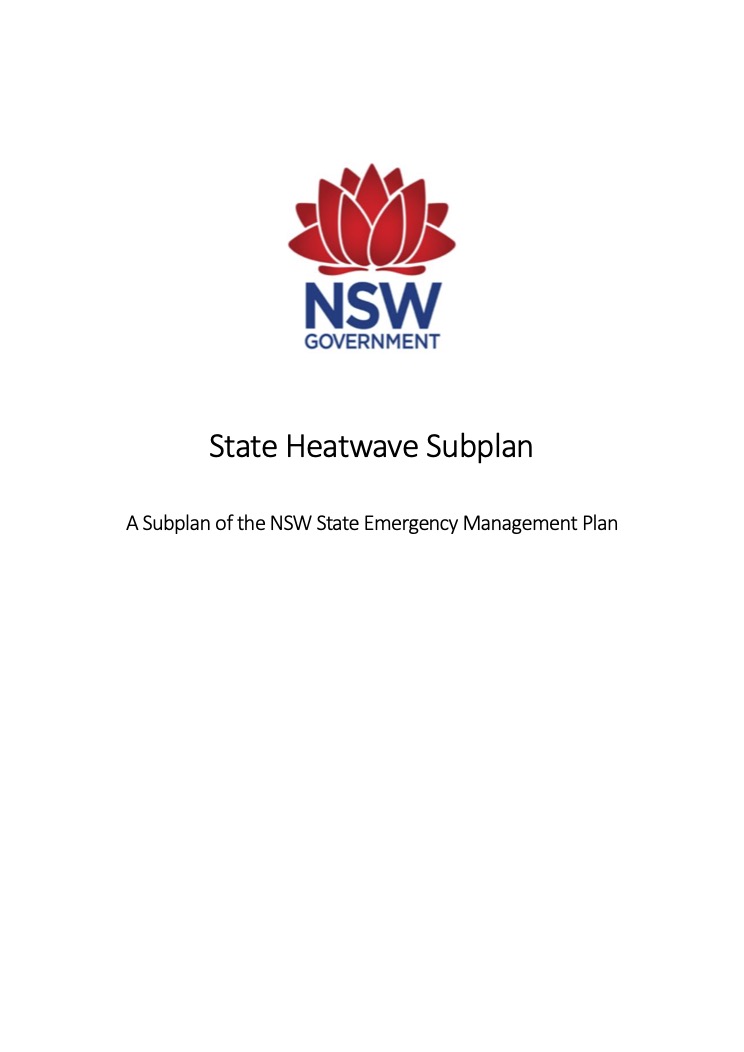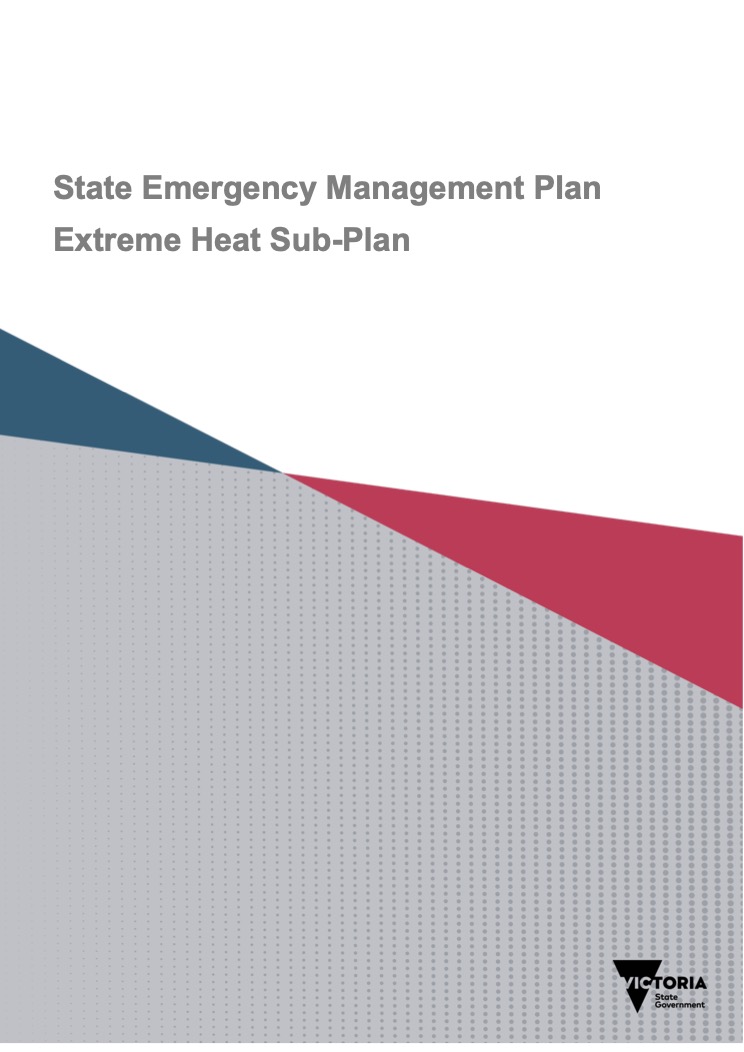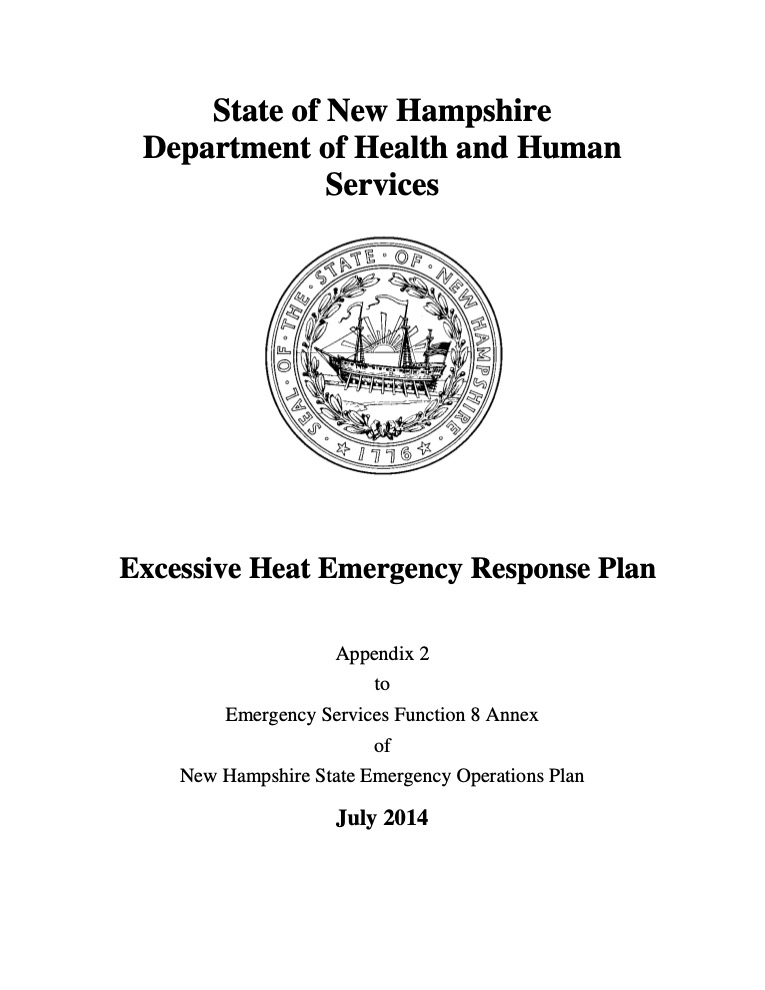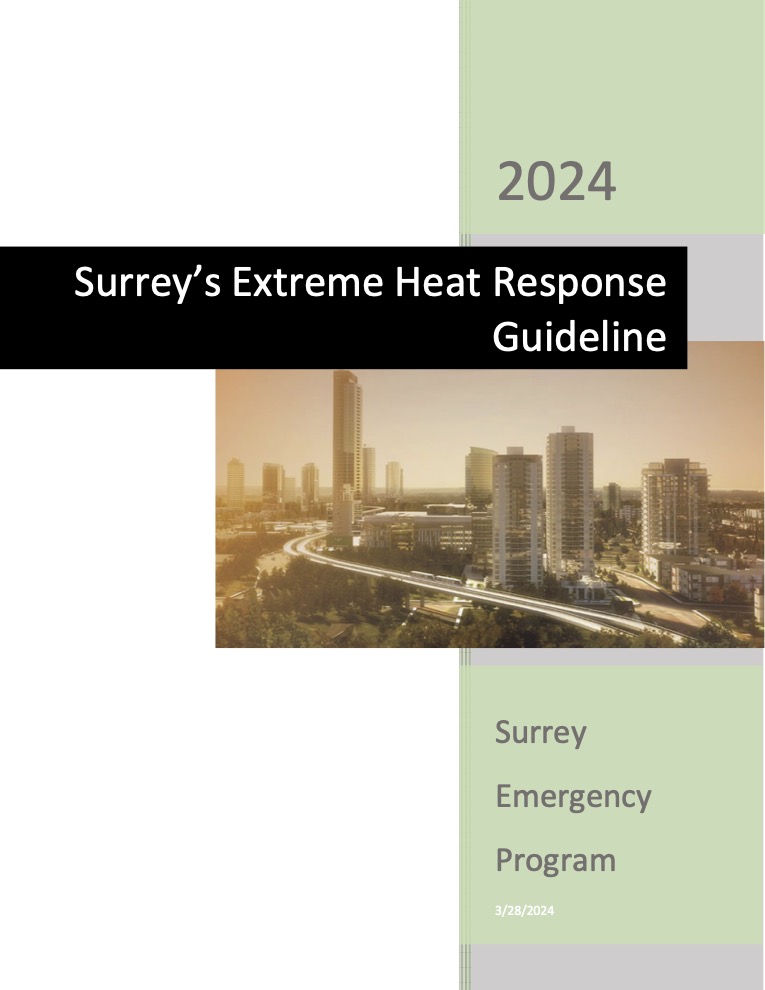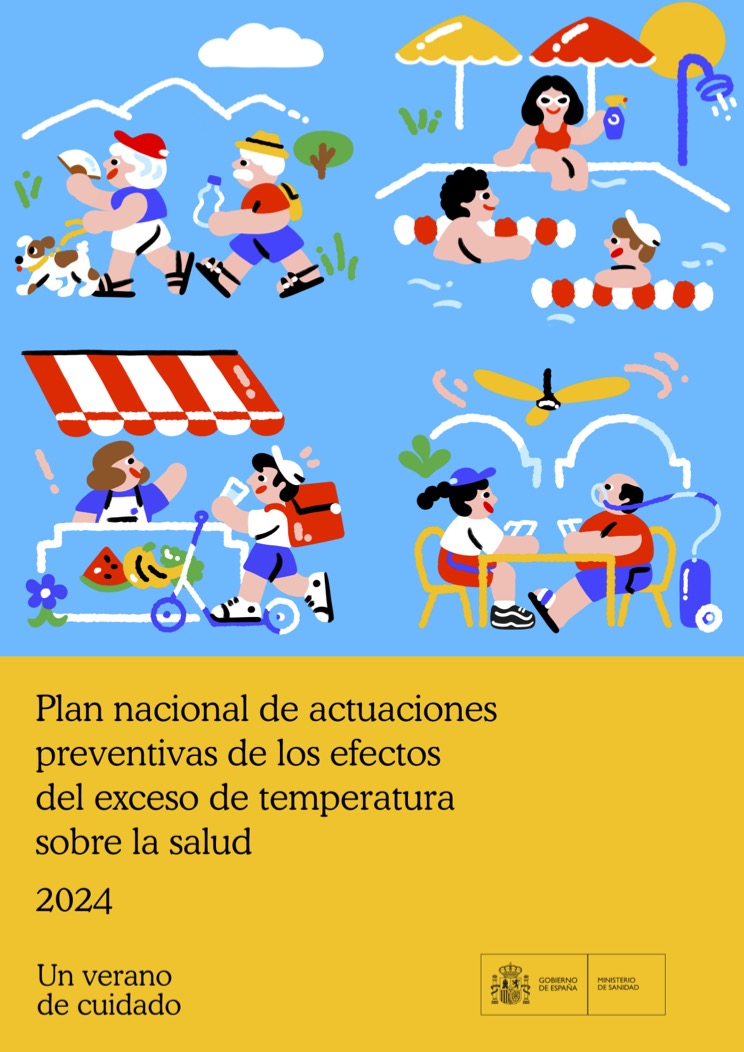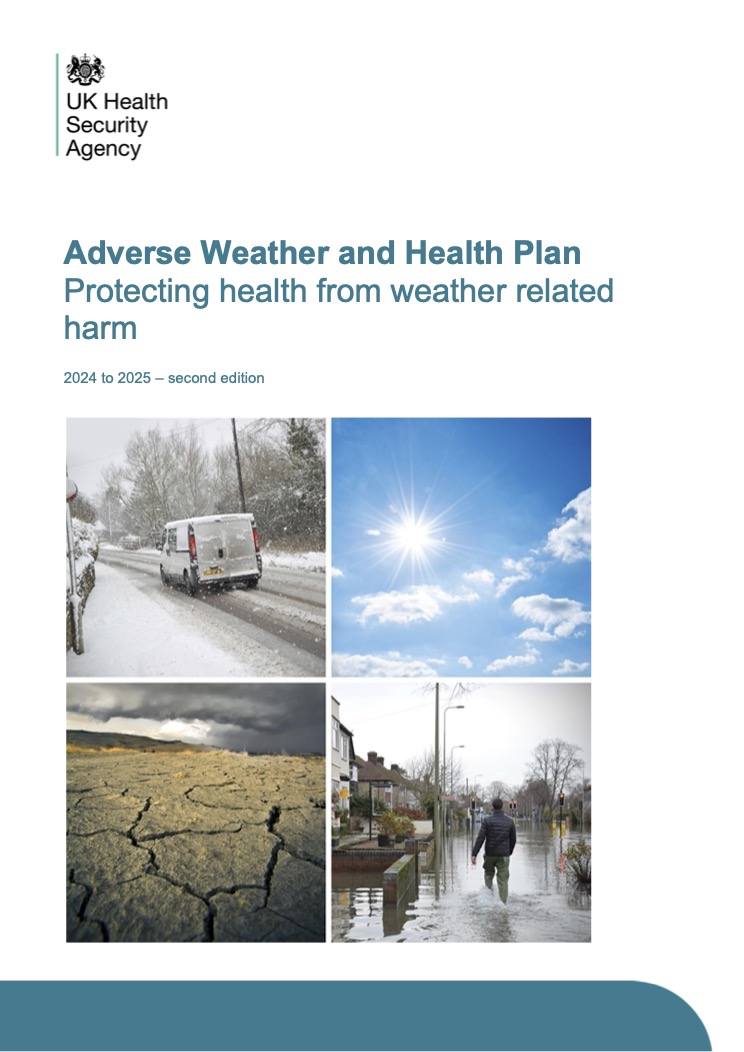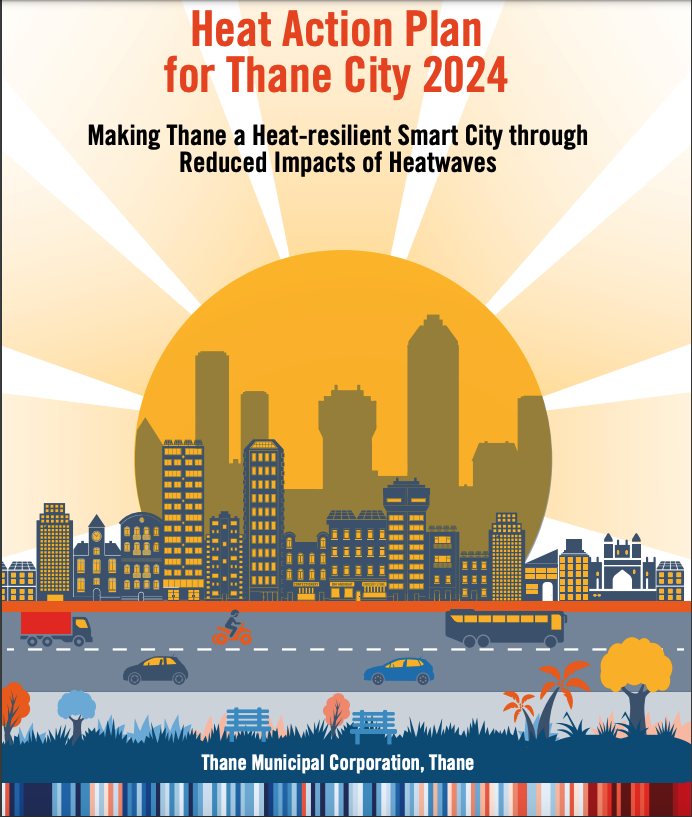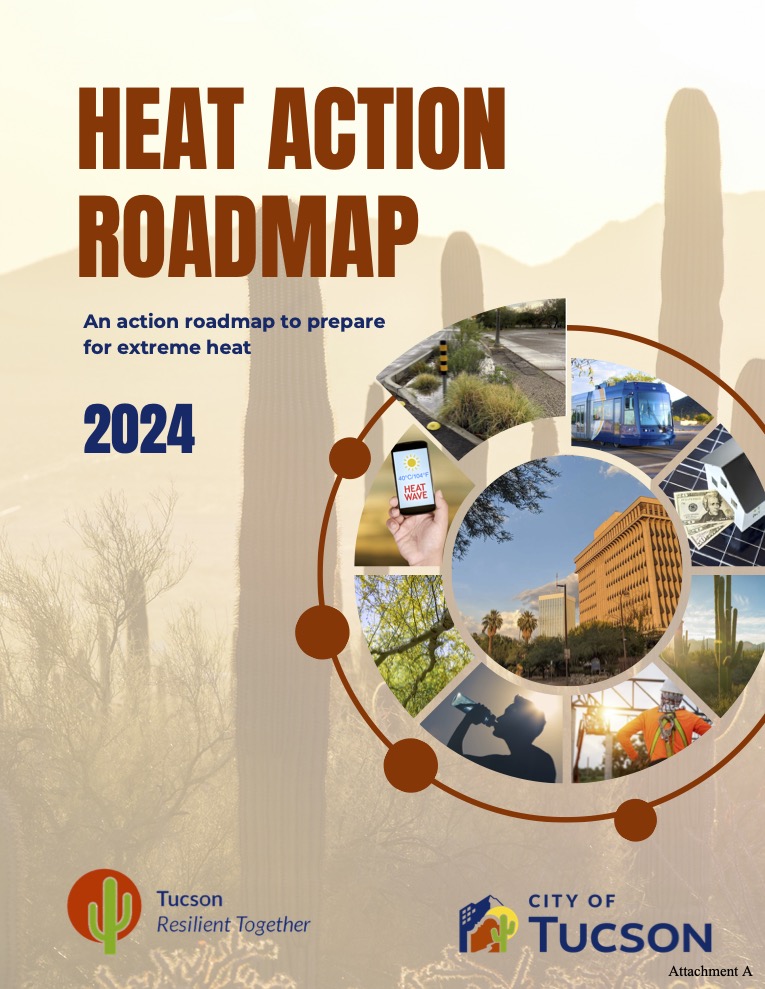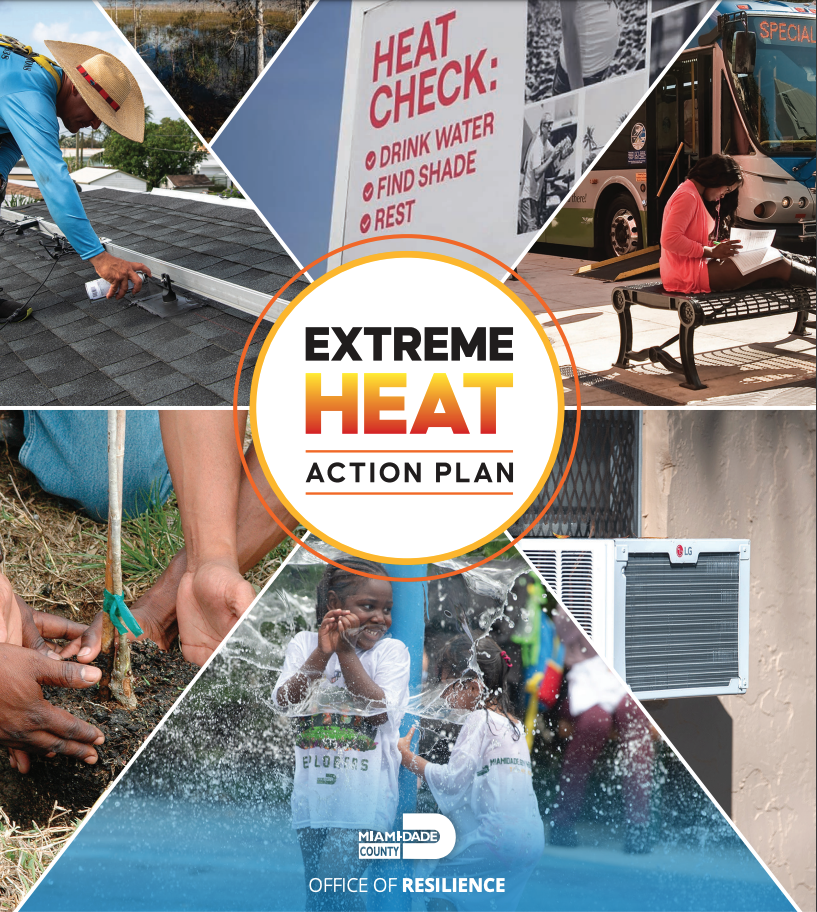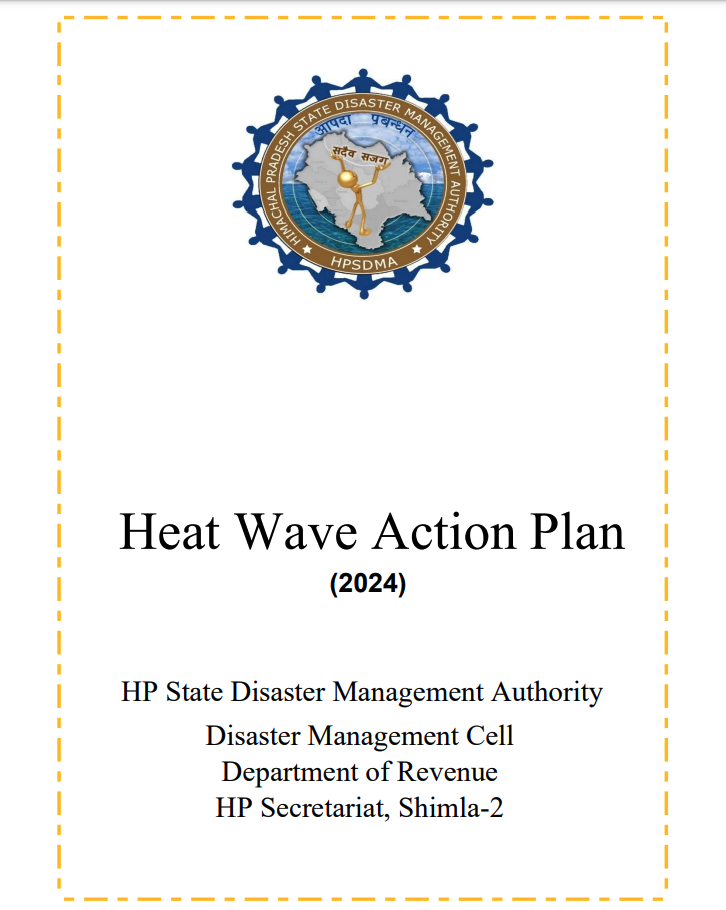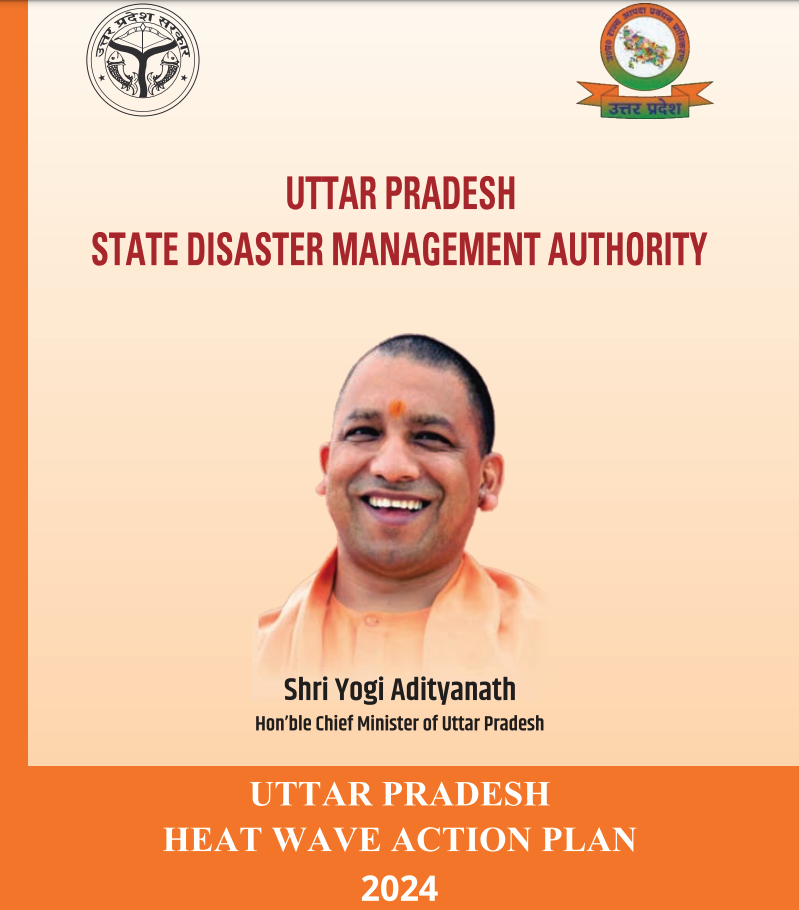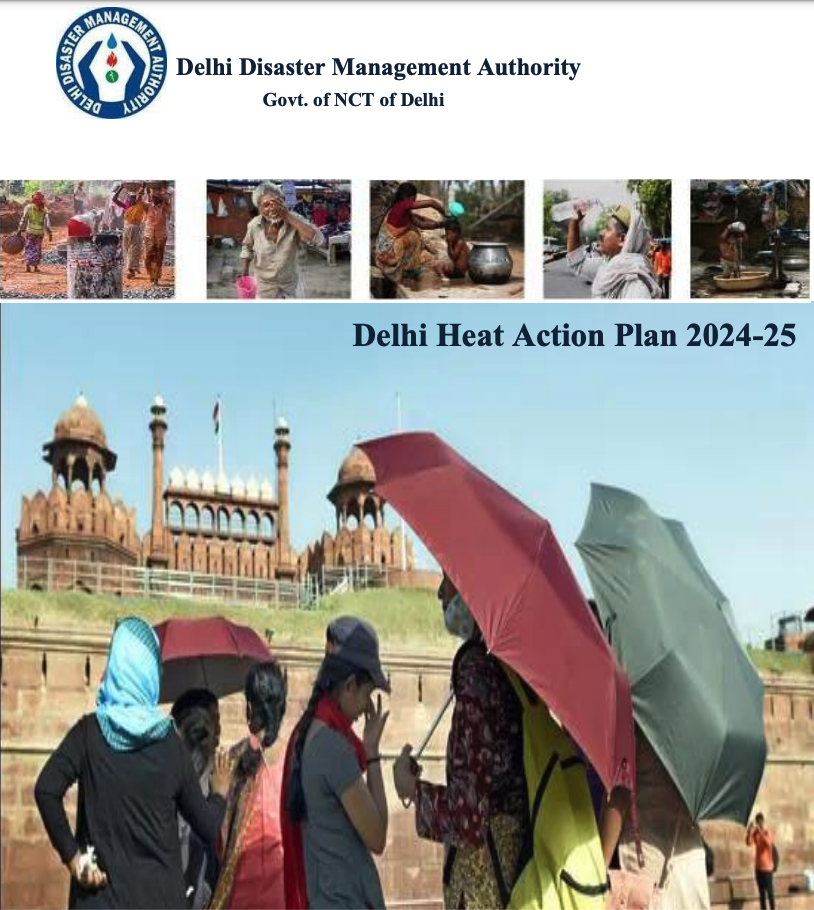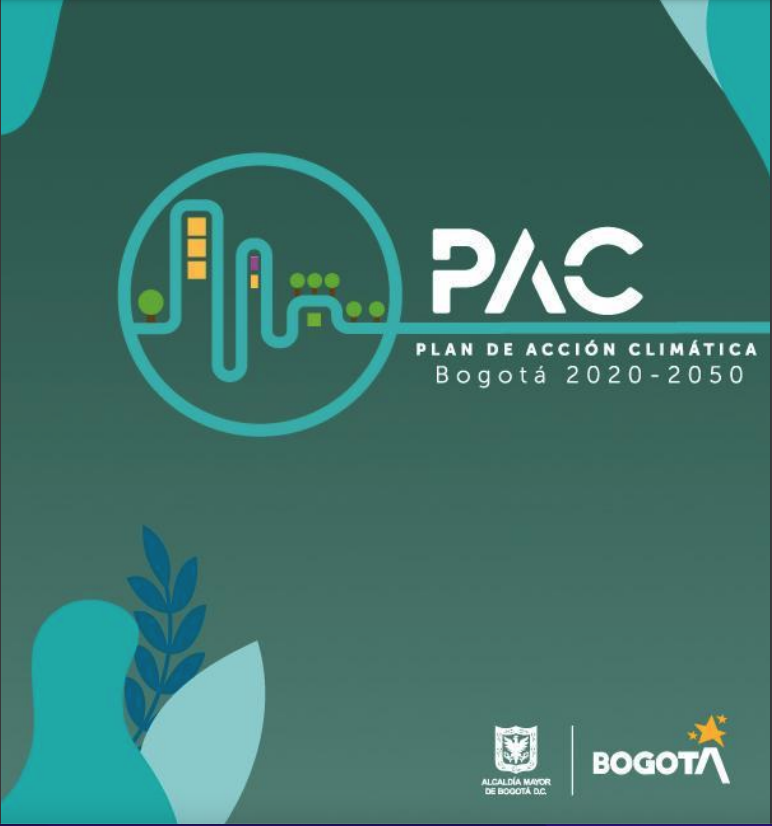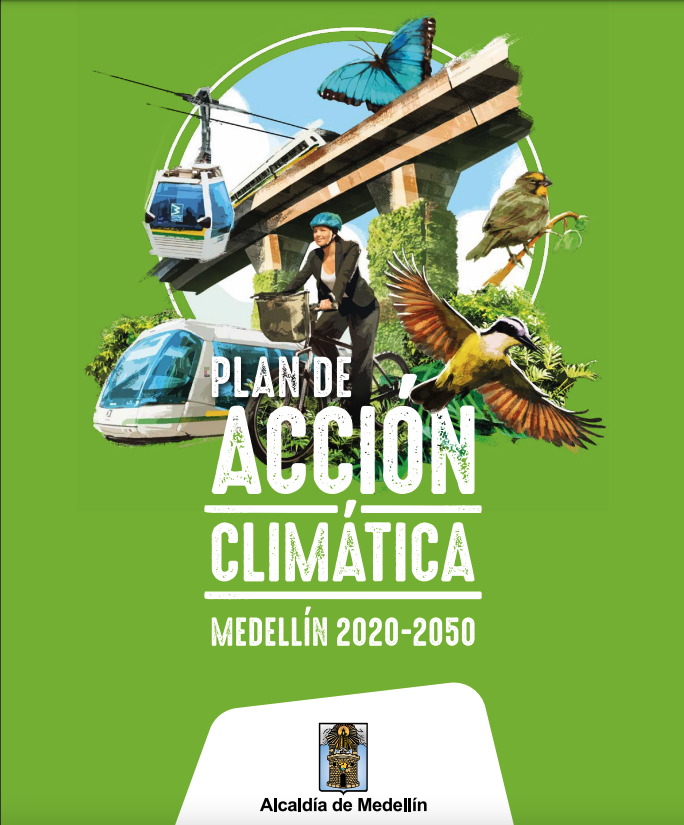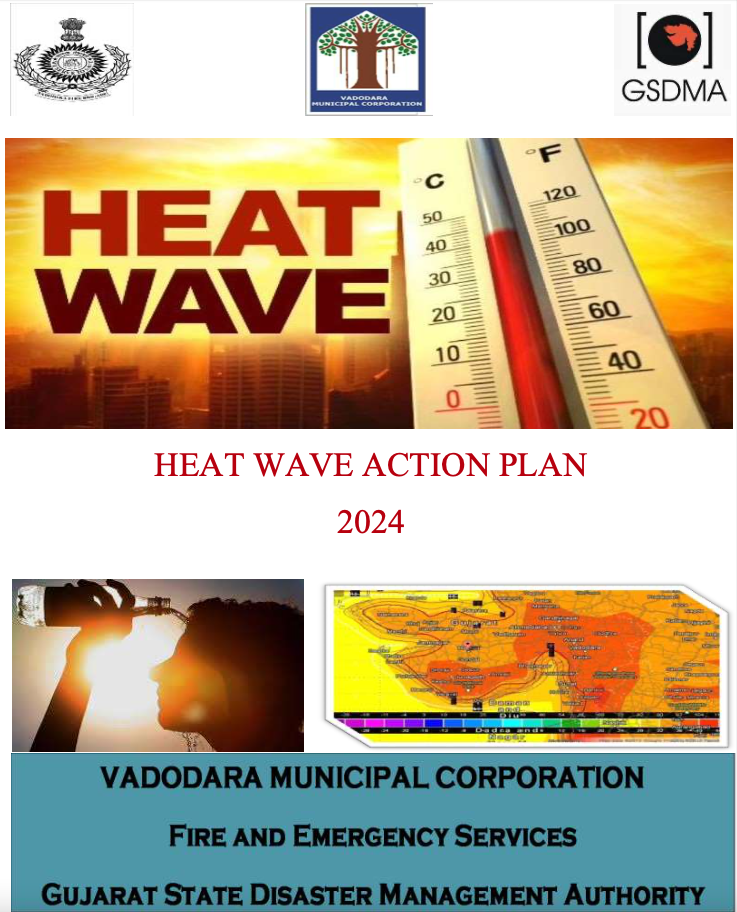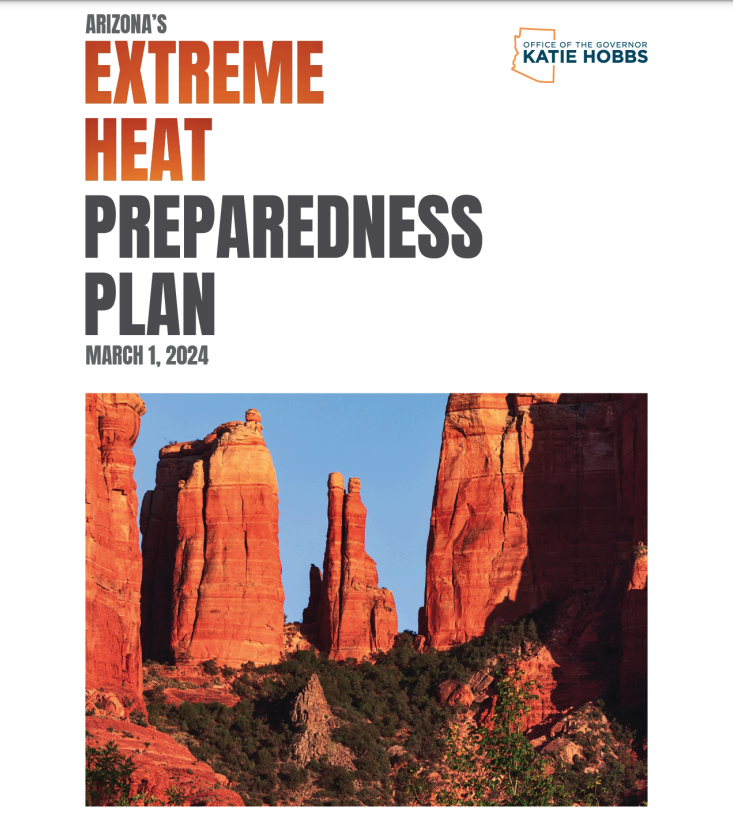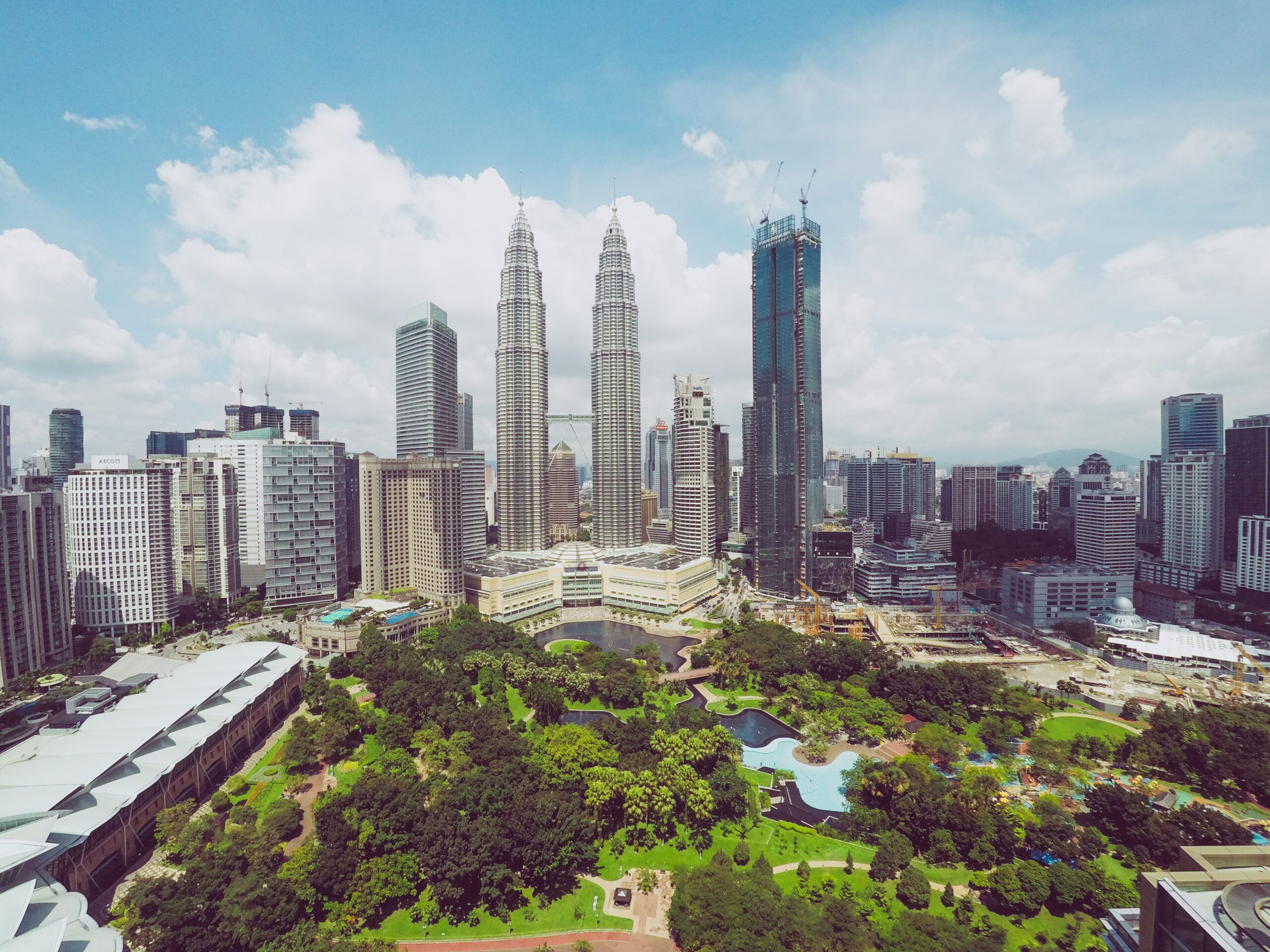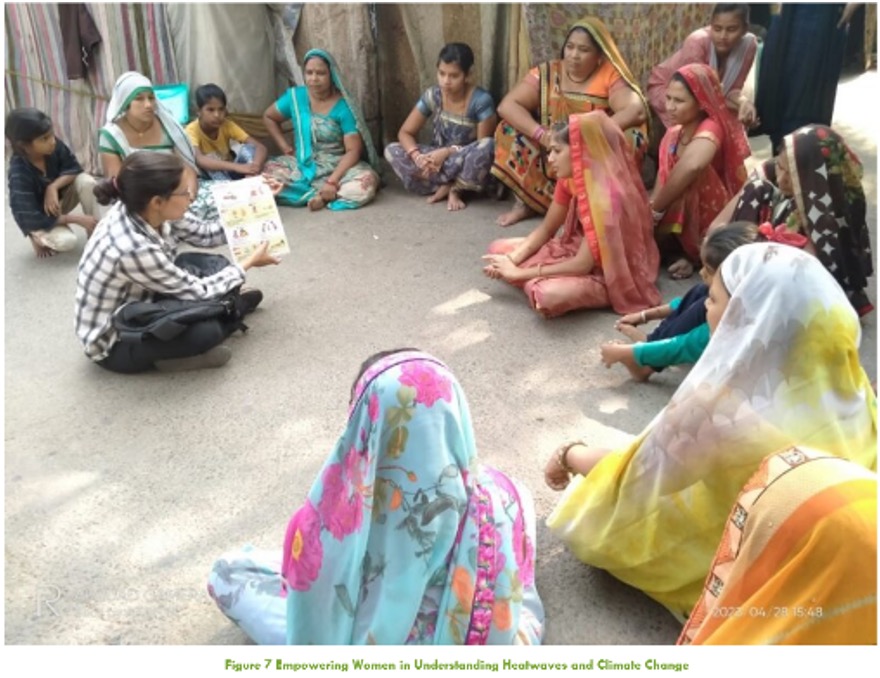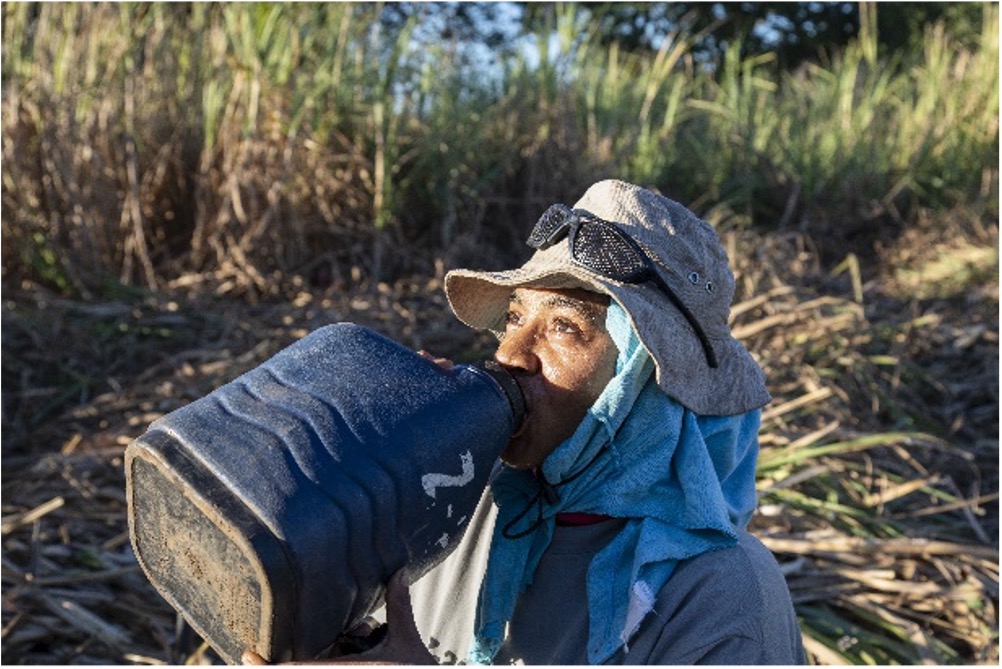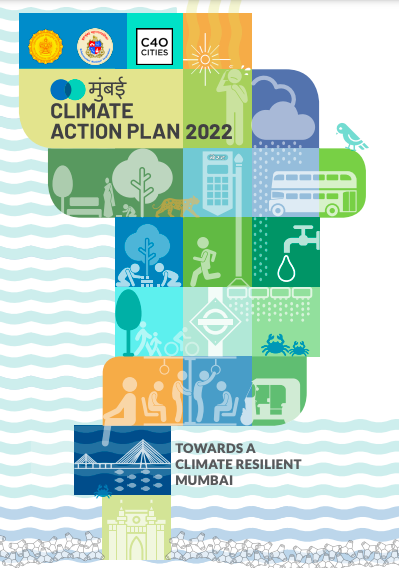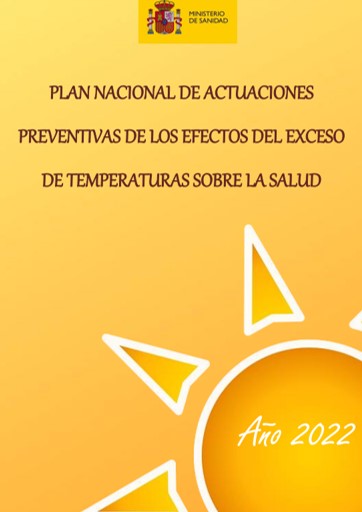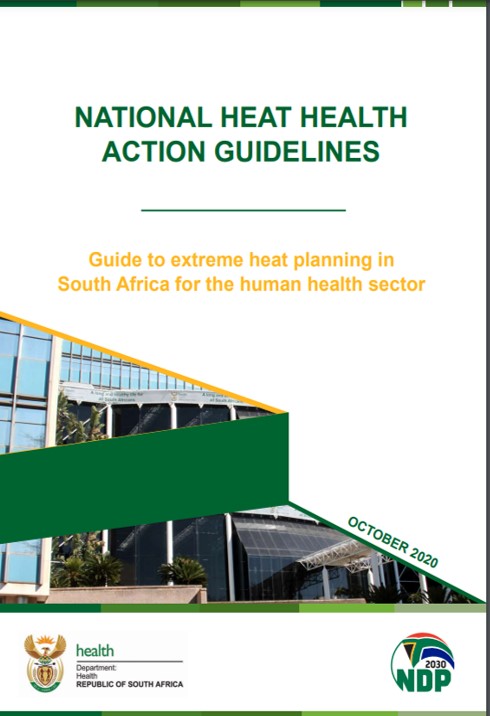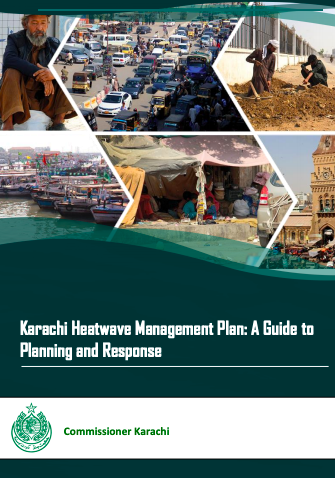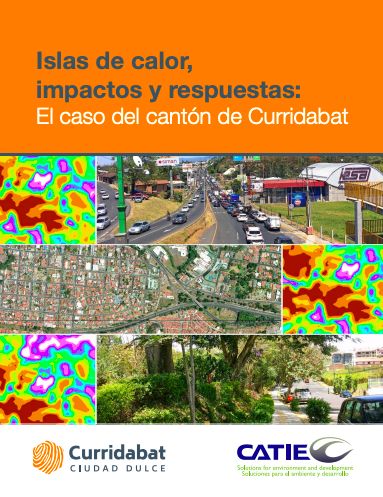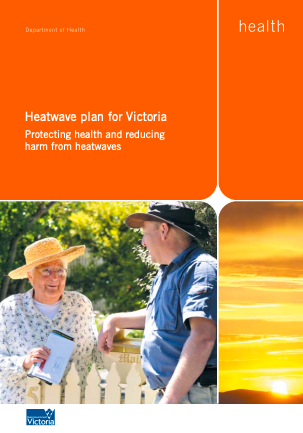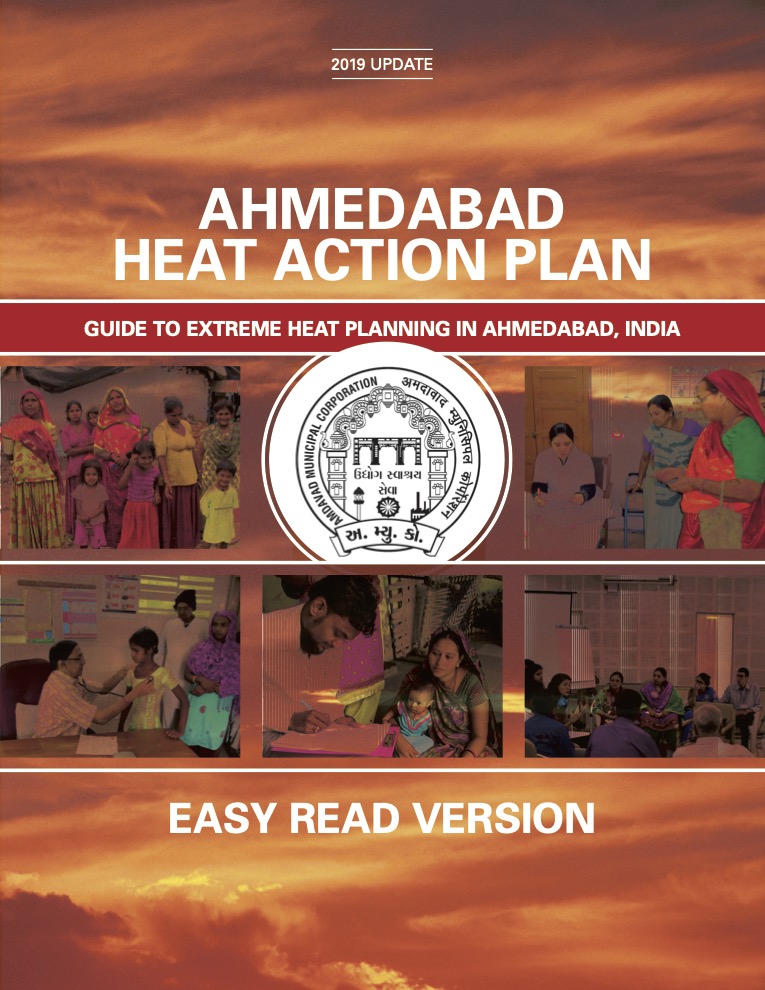Case Study
Prepare Center | Global Disaster Preparedness Center | 2025
Action Plan
Varanasi Nagar Nigam, Department of Medical Health & Family Welfare, Mahila Housing Trust (MHT), NRDC India & Indian Institute of Public Health Gandhinagar (IIPHG) | 2025
Action Plan
Churu District Collector, Mahila Housing Trust (MHT) & Natural Resources Defense Council (NRDC) | 2025
Case Study
United States Environmental Protection Agency (EPA) | 2018
Action Plan
Action Plan
Western Sydney Regional Organisation of Councils (WSROC) | 2024
Action Plan
Government of the Republic of the Marshall Islands | 2022
Action Plan
Protecting the public and minimizing health effects from heat: towards…
World Health Organization (WHO) | 2013
Action Plan
Managing Heat Stress at Workplace - Brunei
Safety Health and Environment National Authority (SHENA) | 2024
Action Plan
Department of Health (Disaster Preparedness and Management Unit) | 2023
Action Plan
Tasmanian Government Department of Health | 2016
Action Plan
Yemen Family Care Association (YFCA) | 2023
Action Plan
Dubai Municipality Health and Safety Department | 2019
Action Plan
World Health Organization (WHO) & Health Cluster Turkiye Hub | 2024
Action Plan
Human Resources and Social Development, National Council for Occupational Safety and Health & SaudiNCOSH | 2024
Action Plan
National Disaster Management Authority of Pakistan | 2024
Action. Plan
Action Plan
Comunidad de Madrid | 2024
Action Plan
Action Plan
Government of Catalonia, Deaprtment of Health | 2022
Action Plan
Secretariat for Environmental Protection, City of Belgrade | 2015
Action Plan
Gemeente Amsterdam / Municipality of Amsterdam | 2024
Action Plan
District Disaster Management Authority (DDMA), Gorakhpur | 2019
Action Plan
District Disaster Management Authority (DDMA), Ferozepur, District Ferozepur, Punjab | 2024
Action Plan
Heat Wave Action Plan (Guide to Heat Wave Plan in…
District Disaster Management Authority | 2022
Action Plan
Integrated Research and Action for Development | 2024
Action Plan
District Disaster Management Authority | 2016
Action Plan
District Disaster Management Officer, Kathua | 2024
Action Plan
Department of Disaster Management & Civil Defence & West Bengal State Disaster Management Authority (WBSDMA) Government of West Bengal | 2023
Action Plan
Department of Tamil Nadu - State Planning Commission | 2024
Action Plan
Action Plan
Karnataka State Disaster Management Authority | 2024
Action Plan
Revenue (Disaster Management) Department | 2024
Action Plan
Action Plan
Action Plan
Government of the Republic of Trinidad and Tobago (GORTT) | 2023
Action Plan
Saint Lucia's National Emergency Management Organisation (NEMO) | 2006
Action Plan
Regional Municipality of Waterloo | 2019
Action Plan
Action Plan
Action Plan
Action Plan
City of Vancouver | 2024
Action Plan
Ministry of Green Economy and Environment of Zambia | 2023
Action Plan
Action Plan
Addis Ababa Environmental Protection & C40 Cities Climate Leadership Group | 2021
Action Plan
The Covenant of Mayors in Sub-Saharan Africa (CoM SSA) | 2022
Action Plan
Direction Générale de l’Environnement et du Climat (DGEC) | 2022
Action Plan
Ministre de l’Environnement et des Energies Renouvelables | 2019
Case Study
Case Study
Development and implementation of a heat early warning system for…
Mahila Housing Sewa Trust (MHT) | 2023
Action Plan
District Disaster Management Authority Pulwama | 2024
Action Plan
Distric Disaster Management Authority Samba | 2024
Action Plan
District Disaster Management Authority Jammu & Kashmir | 2024
Action Plan
District Disaster Management Authority Kishtwar | 2024
Action Plan
Action Plan
Integrated Research and Action for Development (IRADe) | 2020
Plan
National Health, Sustainability and Climate (NHSC) Unit & Australian Centre for Disease Control (CDC) | 2024
Case Study
Case Study
Action Plan
UHCRCE, IRADe & APN | 2023
Action Plan
National Integrated Heat Health Information System & Interagency Working Group on Extreme Heat | 2024
Action Plan
Odisha State Disaster Management Authority (OSDMA) | 2022
Action Plan
NRDC India, Goverment of Jodhpur & Manila Housing Sewa Trust | 2023
Action Plan
Gujarat State Action Plan- Prevention and Mitigation of Impacts of…
Gujarat State Disaster Management Authority | 2020
Action Plan
Action Plan
District Disadter Management Authority Srinagar | 2024
Action Plan
District Disaster Management Authority | 2024
Action Plan
Swiss Tropical and Public Health Institute | 2021
Action Plan
Department of Environmental Protection New Jersey | 2024
Action Plan
Direccion General de Salud Pública Madrid | 2022
Action Plan
Action Plan
Plan de vigilancia y prevención de los efectos del exceso…
Gobierno de Extremadura España | 2013
Action Plan
Consejería de Salud Gobierno de Cantabria | 2022
Action plan
Ministerio de Sanidad España | 2023
Action Plan
Action Plan
The Government of the Grand Duchy of Luxembourg | 2023
Action Plan
Plan de Gestion des Vagues de Chaleur / France Heatwave…
Ministère de la Transition Écologique et de la Cohésion des Territoires | 2023
Action Plan
Office of the Tyrolean State Government | 2023
Action Plan
Action Plan
Action Plan
Emergency Management Victoria (EMV) | 2022
Action Plan
Steirischer Hitzeschutzplan / Styrian heat protection plan
Office of the Styrian State Government | 2023
Action Plan
Bundesministerium für Soziales, Gesundheit, Pflege und Konsumentenschutz (BMSGPK) | 2024
Action Plan
2024 Maryland Department of Health Extreme Heat Emergency Plan
Maryland Department of Health | 2024
Action Plan
State of New Hampshire Department of Health and Human Services | 2014
Action Plan
Action Plan
Public Health Sudbury & Districts & Greater Sudbury | 2023
Action Plan
Action Plan
Heat Action Plan
Keeping Metro Boston Cool: A Regional Heat Preparedness and Adaptation…
Metro Mayors Climate Taskforce & Metropolitan Area Planning Council | 2022
Action Plan
Ministerio de Sanidad | 2024
Action Plan
Hitzeschutzplan für Gesundheit des BMG / BMG's Heat Protection Plan
Bundesministerium für Gesundheit (BMG) | 2023
Action Plan
UK Health Security Agency | 2024
Action Plan
City of Toronto Heat Relief Strategy 2024
Hot Weather Response Coordinating Committee & City of Toronto | 2024
Action Plan
Thane Municipal Corporation & Delhi: Council on Energy, Environment and Water (CEEW). | 2024
Action Plan
Action Plan
Action Plan
Himachal Pradesh Disaster Management Authority | 2024
Action Plan
Uttar Pradesh State Disaster Management Authority | 2024
Action Plan
Action Plan
Secretaria de Ambiente Bogotá | 2021
Action Plan
Alcadía de Medellín | 2020
Action Plan
Ministry of Health BC & BC Center for Disease Control | 2023
Action Plan
Vadodara Municipal Corporation, Fire and Emergency Services & Gujarat State Disaster Management Authority | 2024
EAP
Action Plan
Governor’s Office of Resiliency (OOR), Emergency Management and Military Affairs (DEMA), Department of Economic Security (DES), Department of Health Services (ADHS), Department of Administration (ADOA), Industrial Commission (IC), Department of Housing (DOH) & Residential Utility Consumer Office (RUCO) | 2024
Plan
Case Study
Case Study
Sustainable Environment and Ecological Development Society (SEEDS) | 2023
Case Study
La Isla Network | 2023
Case Study
Mahila Housing Trust (MHT) | 2023
Case Study
Case Study
Handheld access to actionable heat risk and response information in…
World Meteorological Organization (WMO) | 2023
Case Study
Early warning system for extreme temperatures in Argentina
World Meteorological Organization (WMO) | 2023
Action Plan
Myanmar National Adaptation Programme of Action to Climate Change
National Environmental Conservation Committee, Ministry of Environmental Conservation and Forestry | 2012
Action Plan
Action Plan
MInisterio de Sanidad | 2022
Action Plan
Gobierno de la Ciudad de Mexico
action-plan
Prefeitura da Cidade do Rio de Janeiro, Centro Clima/ COPPE | 2016
Action Plan
State of California | 2022
Action Plan
Action Plan
Provincial Disaster Management Authority - Khyber Pakhtunkhwa | 2022
Action Plan
Ministry of Health and Public Welfare, Government of India | 2021
Case Study
Combating the heat island effect and poor air quality with…
European Climate and Health Observatory | 2014
Case Study
Berlin Biotope Area Factor – Implementation of guidelines helping to…
European Climate and Health Observatory | 2020
Case Study
Operation of the Portuguese Contingency Heatwaves Plan
European Climate and Health Observatory | 2015
Case Study
Operation of the Austrian Heat Protection Plan
European Climate and Health Observatory | 2017
Case Study
Case Study
Social vulnerability to heatwaves – from assessment to implementation of…
European Climate and Health Observatory | 2018
Case Study
Adapting to the impacts of heatwaves in a changing climate…
European Climate and Health Observatory | 2020
Case Study
Heat acclimatization and vulnerabilities of people living in the Sahel:…
Institut de Recherche pour le Développement | 2018
Case Study
Action Plan
Action Plan (FR)
Action Plan (FR)
Genève: Plan canicule pour les aîné-e-s (Geneva Heatwave plan for…
Ville de Genève | 2020
Action Plan
Western Sydney Regional Organisation of Councils | 2018
Case Study
Case Study
Case Study
Case Study
Case Study
Case Study
Case Study (ES)
Municipalidad de Curridabat | 2019
Action Plan
Portugal Plano de Contingência para Temperaturas Extremas Adversas – Módulo…
Direção-Geral da Saúde | 2014
Action Plan
Brasilia DF Plano de Contingência para Emergência em Saúde Pública…
Ministério da Saúde | 2015
Action Plan
Plan de Contingencia Fenómeno Hidrometeorologico 2013
Gobierno del Estado de Quintana Roo | 2013
Action Plan
Municipalidad de La Plata | 2014
Action Plan
State of Victoria, Department of Health | 2011
Case Study
Action Plan
Public Health England, Department of Health and Social Care, and NHS England | 2018
Action Plan
Action Plan
Action Plan
Arizona Department of Health Services, Arizona State University, University of Arizona | 2017
Action Plan
Austria National Heat Plan (Gesamtstaatlicher Hitzeschutzplan)
Ministerium Frauen Gesundheit | 2017
Action Plan
Municipal Heat Response Planning in British Columbia, Canada
BC Centre for Disease Control | 2017
Action Plan
Action Plan
Amdavad Municipal Corporation, NRDC, Indian Institutes of Public Health, Mount Sinai, University of Washington | 2019
Action Plan
Heat Action Plan for Odisha, 2020
Odisha State Disaster Management Authority (OSDMA) | 2020
Action Plan
Rajasthan Draft Heat Action Plan
RSPCB, DMRD, Govt. of Rajasthan, UNICEF Rajasthan and IIPH-Gandhinagar Initiative | 2017
Action Plan
Tamil Nadu Heat Wave Action Plan 2019
Commissionerate of Revenue Administration andDisaster Management | 2019
Action Plan
Telangana State Heatwave Action Plan
Revenue (Disaster Management) Department,Government of Telangana | 2021
Action Plan (IT)
Italy National Heat Health Plan (Piano operativo nazionale di prevenzione…
Ministero della Salute | 2020
Action Plan
World Health Organization (WHO) Europe | 2011
Action Plan
Spain National Heat Health Plan (Plan nacional de actuaciones preventivas…
Ministerio de Sanidad | 2020
Action Plan
Extremadura Heat Health Plan (Plan de vigilancia y prevención de…
Gobierno de Extremadura Consejería de Salud y Política Social | 2013
Action Plan
Netherlands National Heatwave Plan (Nationaal Hitteplan)
Rijksinstituut voor Volksgezondheid en Milieu | 2015
Case Study
Hermosillo, Mexico, Captures Heat-Related Illnesses at Medical Facilities Using New…
Commission for Environmental Cooperation (CEC)
Case Study
How hot will it be? Translating climate model outputs for…
World Health Organization (WHO), World Meteorological Organization (WMO) | 2018
Action Plan
Implementation of the Heat-Health Action Plan of North Macedonia (2014)
Climate ADAPT | 2011
Case Study
Innovative Heat Wave Early Warning System And Action Plan In…
World Health Organization (WHO), World Meteorological Organization (WMO) | 2018
Case Study
Iterative Development And Testing Of A Heat Warning And Information…
World Health Organization (WHO), World Meteorological Organization (WMO) | 2018
Case Study
Knowing When Cold Winters And Warm Summers Can Reduce Ambulatory…
World Health Organization (WHO), World Meteorological Organization (WMO) | 2018
Case Study
Case Study
Protecting The Elderly From Heat And Cold Stress In Hong…
Hong Kong Observatory (HKO), Senior Citizen Home Safety Association (SCHSA) | 2018
Case Study
Supreme: An Integrated Heat Health Warning System For Quebec
Institut National de Santé Publique du Québec (INSPQ), the Ministry of Public Security (Québec), andEnvironment and Climate Change Canada’s (ECCC) Meteorological Service of Canada (MSC) | 2018
Case Study
Case Study
Case Study
Case Study
Case Study
Case Study
Augmenting Syndromic Surveillance for Real-time Situational Awareness During Extreme Heat…
Commission for Environmental Cooperation (CEC)
Case Study
Case Study
Building Evidence That Effective Heat Alert Systems Save Lives In…
World Health Organization (WHO), World Meteorological Organization (WMO) | 2018
Case Study
Catalyzing Investment and Building Capacity in Las Cruces
U.S. Climate Resilience Toolkit
Case Study
Cctalk! Communicating Effectively With High-Risk Populations In Austria: A Five-Step…
World Health Organization (WHO), World Meteorological Organization (WMO) | 2018
Case Study
Case Study
Case Study
Case Study
Case Study
Case Study
Case Study
Developing an Early Warning System to Prevent Heat Illness
U.S. Climate Resilience Toolkit
Case Study
Enhancing Syndromic Surveillance for Heat-Related Illness in Michigan with Improved…
Commission for Environmental Cooperation (CEC)
Case Study
Case Study
Case Study
Finding The Right Thresholds To Trigger Action In Heat Wave…
World Health Organization (WHO), World Meteorological Organization (WMO) | 2018
Case Study
Case Study
Heat Wave And Health Risk Early Warning Systems In China
World Health Organization (WHO), World Meteorological Organization (WMO) | 2018
Case Study
Prepare Center | Global Disaster Preparedness Center | 2025
Telecross REDi heatwave service delivers daily phone check-ins to elderly, isolated, and health-compromised individuals during extreme heat events. Triggered by heat alerts from meteorological authorities, trained volunteers assess wellbeing, share heat safety advice, and initiate emergency responses if needed. The service uses data-driven tools to identify high-risk areas and prioritize outreach, ensuring resources are directed where most needed. Volunteers are equipped with guidelines for identifying heat stress and are supported by escalation protocols involving emergency services if clients do not respond or report symptoms. Operating each summer season, the program adapts to prolonged heat periods and is backed by strong privacy safeguards and continuous evaluation. It enhances personal safety while reducing pressure on emergency systems. With strong interagency collaboration and a foundation in community trust, Telecross REDi exemplifies a scalable model for climate resilience through personalized, low-tech interventions that strengthen public health infrastructure in the face of rising heat extremes.
Action Plan
Varanasi Nagar Nigam, Department of Medical Health & Family Welfare, Mahila Housing Trust (MHT), NRDC India & Indian Institute of Public Health Gandhinagar (IIPHG) | 2025
The Varanasi Heat Action Plan is a collaborative initiative between the Varanasi Nagar Nigam, Department of Medical Health & Family Welfare, Mahila Housing Trust (MHT), NRDC India, and the Indian Institute of Public Health Gandhinagar (IIPHG). This comprehensive plan aims to protect communities from the escalating risks of extreme heat by implementing science-backed, equity-focused interventions. Key features include ward-level heat vulnerability mapping, future climate trend projections (2025–2050), community-led cooling solutions, and targeted public health measures for high-footfall areas such as ghats and informal settlements. The plan emphasizes inclusive urban planning, integrating passive cooling techniques like cool roofs and reflective paints to mitigate urban heat island effects. By fostering strong interdepartmental coordination and community engagement, the Varanasi Heat Action Plan sets a precedent for climate-resilient urban governance in India.
Action Plan
Churu District Collector, Mahila Housing Trust (MHT) & Natural Resources Defense Council (NRDC) | 2025
The Churu Heat Action Plan, is a collaborative effort between the Churu District Collector, Mahila Housing Trust (MHT), and the Natural Resources Defense Council (NRDC) to address the escalating heat challenges in Churu, Rajasthan. Situated near the Thar Desert, Churu recorded a staggering 50.5°C in 2024, underscoring the urgent need for localized climate resilience strategies. The plan integrates granular, ward-level heat vulnerability mapping, guided by the IPCC’s risk framework, to develop science-backed, equity-focused interventions. It emphasizes community engagement, incorporating local wisdom and data to chart both short- and long-term actions. Key components include enhancing coordination among local, district, and state authorities, implementing passive cooling measures, and strengthening public health responses to heatwaves. This initiative marks a significant step toward safeguarding Churu’s communities from the adverse effects of rising temperatures.
Case Study
United States Environmental Protection Agency (EPA) | 2018
This case study showcases the use of green roofs in Kansas City to manage stormwater, reduce the urban heat island effect, and improve energy efficiency. By documenting the city’s efforts, including partnerships, costs, and measurable benefits, the report highlights how green infrastructure can serve as a sustainable urban planning tool. The study demonstrates reductions in rooftop temperatures, improved air quality, and long-term cost savings for buildings equipped with vegetated roofs. It serves as a practical resource for cities looking to invest in nature-based solutions for climate resilience and public health.
Action Plan
City of Chicago, U.S | 2012
The Chicago Climate Action Plan outlines the city’s comprehensive strategy to reduce greenhouse gas emissions, enhance climate resilience, and ensure environmental justice. The plan focuses on five key areas: buildings, energy, transportation, waste, and natural systems, with a strong emphasis on equity and community engagement. It sets ambitious targets to reach net-zero emissions by 2050 and includes initiatives to expand clean energy, green infrastructure, and job opportunities in sustainability. Through this plan, Chicago aims to become a national leader in urban climate solutions that benefit both people and the planet.
Action Plan
Western Sydney Regional Organisation of Councils (WSROC) | 2024
The Heat Smart City Plan for Greater Sydney, developed collaboratively across multiple sectors, addresses heat risks, highlights the need for coordinated management, and outlines actions for change by 2030. It sets key directions agreed upon with stakeholders, with the next step being the creation of an Implementation Plan to specify funding, timelines, and reporting.
Action Plan
Government of the Republic of the Marshall Islands | 2022
The National Climate Change and Health Policy and Revised Action Plan of the Republic of the Marshall Islands outlines strategies to strengthen health resilience against climate change impacts. It addresses key challenges such as rising sea levels, extreme weather events, and health vulnerabilities, focusing on enhancing community health systems, disaster preparedness, and adaptive capacity. Supported by the GCCA+ and EU’s SUPA initiative, the plan emphasizes sustainable development and cross-sector collaboration to protect public health in the face of evolving climate risks.
Action Plan
Protecting the public and minimizing health effects from heat: towards…
World Health Organization (WHO) | 2013
The technical report is intended to support efforts by the prefectural government of Hyogo (Japan) towards a comprehensive system for public health prevention of heat disorders. It is the result of an evidence-building process involving relevant stakeholders at the local and national level in Japan. The state of the science regarding public health action on heat waves is reflected only as required by practical purposes, and is based on published scientific literature, as well as the gathering of critical inputs from experts within and outside the World Health Organization (WHO).
Action Plan
Managing Heat Stress at Workplace - Brunei
Safety Health and Environment National Authority (SHENA) | 2024
The purpose of this industry guidance note (IGN) serves as a guidance and reference on matters pertaining to the management of heat stress in a workplace. Brunei’s climate is becoming warmer with a mean temperature increase of 0.25⁰C per decade (Brunei Darussalam National Council on Climate Change) and working in Brunei’s hot and humid weather can put employees at an increased risk of heat stress especially for outdoor workers.
Action Plan
Department of Health (Disaster Preparedness and Management Unit) | 2023
The State Hazard Plan – Heatwave outlines Western Australia’s comprehensive approach to managing heatwave emergencies. It details strategies for prevention, preparedness, response, and initial recovery, emphasizing coordination among government agencies, communities, and stakeholders to mitigate health risks and infrastructure impacts during extreme heat events. The plan assigns the Department of Health as the Hazard Management Agency, responsible for overseeing emergency management related to heatwaves, while individual agencies handle prevention, preparedness, and recovery efforts.
Action Plan
Tasmanian Government Department of Health | 2016
The Heatwave Ready Tasmania guide by the Tasmanian Department of Health offers comprehensive strategies to mitigate heat-related illnesses during extreme temperatures. It emphasizes the importance of staying hydrated, wearing appropriate clothing, and recognizing symptoms of heat stress. The guide also highlights the increased vulnerability of certain groups, such as the elderly, young children, and individuals with chronic illnesses, providing tailored advice to ensure their safety during heatwaves. By following these guidelines, Tasmanians can effectively prepare for and respond to hot weather conditions, safeguarding their health and well-being.
Action Plan
Yemen Family Care Association (YFCA) | 2023
The objective of this research is to highlight the climate-related hazards and their impacts on different sectors such as water, agriculture, coastal areas, livelihoods, and food security, and their impacts on vulnerable groups such as women, girls, children, people with disabilities, and elder people. It also sheds light on the climate-related conflicts, and mitigation and adaptation solutions that can be implemented to alleviate the impacts of climate change on the country. The methodology utilized in this research involved a combination of primary and secondary data sources. To ensure accuracy and reliability, the research team met with specialized experts and referred to authentic sources throughout the data collection process.
Action Plan
Dubai Municipality Health and Safety Department | 2019
The Technical Guidelines for Management of Heat Stress at Work, issued by Dubai Municipality’s Health and Safety Department, provide comprehensive measures to protect workers from heat-related illnesses. The guidelines emphasize the importance of acclimatization, proper hydration, and regular rest breaks. They also outline employer responsibilities, including implementing engineering controls like ventilation and providing personal protective equipment to mitigate heat exposure. By adhering to these guidelines, workplaces can enhance safety and productivity during high-temperature conditions.
Action Plan
World Health Organization (WHO) & Health Cluster Turkiye Hub | 2024
This Heatwave Emergency Preparedness & Response Plan aims to establish an effective, efficient, coordinated public health preparedness and response plan to prevent mortality, morbidity & disability because of heat. It relates to the preparation, readiness and responsiveness of the health care system in Northwest Syria, specifically of emergency departments and emergency medicine systems, to environmental heatwaves and extreme heat events.
The most important actions to take during a heat-wave are: to avoid or reduce exposure, to communicate risks effectively, to take particular care of vulnerable population groups and to manage mild and severe heat illness.
Action Plan
Human Resources and Social Development, National Council for Occupational Safety and Health & SaudiNCOSH | 2024
This guide aims to inform employers, project managers, and workers about the health risks associated with working in high temperatures, as well as methods for prevention and management. It offers practical advice and preventive measures, both engineering and administrative, along with awareness messages. The guideline is in line with the procedural manual for occupational safety and health of preventing effects of working in high-temperature issued by theMinistry of Human Resources and Social Development (Ministerial Decision No. 196086, dated29/10/1442). The procedural manual draws on global best practices, relevant technologies, and established standards as key sources of information.
This Manual is about the occupational safety and health requirements related to work in thermal environments by clarifying roles, responsibilities and preventive procedures from risks and impacts, through providing the mentoring and education programs, as well as the need to provide preventive occupational safety and health requirements in all workplaces and responding to emergencies from exposure to thermal hazard at workplace.
Action Plan
National Disaster Management Authority of Pakistan | 2024
In recent years, Pakistan has increasingly been vulnerable to the impacts of climate change, particularly evident in the rising frequency and intensity of heatwaves. Accordingly, the National Disaster Management Authority (NDMA) has developed a Heatwave Action Plan-2024 for Pakistan aimed at mitigating the adverse effects of extreme heat events.
This Plan represents NDMA’s proactive response to the escalating threat of heatwaves. By addressing meteorological, climatological, and socio-economic dimensions, the plan aims to enhance country’s resilience to heat-related disasters while advancing climate adaptation and mitigation objectives. NDMA’s Tech team focuses on monitoring and analyzing global and local indicators of potential heatwaves, issues heatwave projections with a lead time of 3–6-month and calculates potential impacts, vulnerabilities and exposure with remarkable accuracy.
Sustained efforts and investments are imperative to effectively implement the plan and safeguard vulnerable populations from the adverse impacts of heatwaves in the years to come.
Action. Plan
Environment Public Authority | 2019
The National Adaptation Plan (NAP) of Kuwait (2019–2030) outlines the country’s strategic approach to addressing climate change impacts. It identifies key vulnerabilities in sectors such as water resources, agriculture, and public health, and proposes targeted adaptation measures to enhance resilience. The plan emphasizes integrating climate considerations into national development policies and promotes stakeholder engagement to ensure effective implementation.
Action Plan
Comunidad de Madrid | 2024
The Action Plan elaborated by the Community of Madrid focuses on safeguarding residents in social and healthcare centers during extreme heat events. It emphasizes the importance of proper building ventilation, staff training, and the implementation of preventive measures to protect vulnerable groups, such as the elderly and individuals with chronic illnesses. The plan also highlights the necessity of interdepartmental coordination to ensure effective responses to high-temperature episodes.
Action Plan
Ajuntament de Barcelona | 2021
The Action Plan for the Climate Emergency 2030 is an updated strategy by the Barcelona City Council, building upon the previous Climate Plan in response to the declared climate emergency. This plan adopts an eco-social approach, integrating environmental sustainability with social equity to address the multifaceted challenges posed by climate change.
Action Plan
Government of Catalonia, Deaprtment of Health | 2022
The Action Plan to Prevent the Effects of Heatwaves on Health (POCS) is a comprehensive strategy developed by the Public Health Agency of Catalonia. It aims to mitigate health risks associated with heatwaves by implementing early warning systems, public education campaigns, and coordinated responses among healthcare providers. The plan focuses on protecting vulnerable populations, including the elderly, children, and individuals with chronic illnesses, by promoting preventive measures and ensuring timely medical assistance during extreme heat events.
Action Plan
Secretariat for Environmental Protection, City of Belgrade | 2015
Rising temperatures and weather extremes like floods and storms could be detrimental to the quality of life in Serbian towns – these are all challenges we have to face. Our towns must be prepared to cope with the effects of climate change as structures and the urban living environment are especially vulnerable.
At the same time well-functioning towns and cities are among the most important prerequisites for sustainable economic development. Lack of systematic planning in response to climate change impact will lead to increased costs for adaptation measures. Anticipatory strategies and plans including climate change projections must be continuously developed to ensure the adaptation of urban structures to mitigate the impact of a changing climate on the urban living environment.
In full awareness of these facts, the City of Belgrade developed this Climate Change Adaptation Action Plan and Vulnerability Assessment within the regional project “Climate Change Adaptation in the Western Balkans” implemented by the German International Cooperation Agency (Deutsche Gesellschaft für Internationale Zusammenarbeit – GIZ).
Action Plan
Gemeente Amsterdam / Municipality of Amsterdam | 2024
Action Plan
District Disaster Management Authority (DDMA), Gorakhpur | 2019
he Heat Wave Action Plan of Gorakhpur focuses on creating a dynamic early warning dissemination network to alert communities based on forecasts from the India Meteorological Department (IMD). It assigns clear responsibilities to stakeholders, such as establishing heatwave relief shelters, providing drinking water, and ensuring health facilities are operational. The plan emphasizes preparedness by training school and community responders like Aapda Mitra to assist vulnerable populations, including children, pregnant women, the elderly, and differently-abled individuals. It promotes cost-effective climate adaptation measures and strengthens public outreach through media channels, messaging platforms, and coordinated communication by the DDMA and Municipal Corporation.
Action Plan
District Disaster Management Authority (DDMA), Ferozepur, District Ferozepur, Punjab | 2024
The Heat Mitigation Plan for Ferozepur (2024), prepared by the District Disaster Management Authority (DDMA) outlines strategies to combat the adverse effects of extreme heat. The plan includes early warning systems, public awareness campaigns, and roles for government and community stakeholders. It emphasizes preparedness in health systems, urban planning, and infrastructure to mitigate the impacts of heatwaves on vulnerable populations, including children, the elderly, and outdoor workers. Long-term goals include sustainable urban design and enhanced public health responses.
Action Plan
Heat Wave Action Plan (Guide to Heat Wave Plan in…
District Disaster Management Authority | 2022
This Heat Action Plan aims to provide a framework for the implementation, coordination, and evaluation of extreme heat response activities in Patiala that reduce the negative health impacts of extreme heat. The Plan’s primary objective is to alert those populations most at risk of heatrelated illness that extreme heat conditions either exist or are imminent, and to take appropriate precautions.
Action Plan
Integrated Research and Action for Development | 2024
The Bhubaneswar Heat Action Plan is a strategic framework designed to address extreme heat impacts in Bhubaneswar, Odisha. It includes measures like early warning systems, public awareness campaigns, and inter-agency coordination to mitigate heat-related illnesses and fatalities. The plan emphasizes community preparedness and offers guidelines for various stakeholders to enhance resilience and protect public health during heat events.
Action Plan
District Disaster Management Authority | 2016
There has been an increasing trend of heat-wave in India over the past several years whereby several cities in India have been severely affected. The increased occurrences and severity of heat-wave is a wake-up call for all agencies to take necessary action also in Jharkhand for prevention, preparedness and community outreach to save the lives of the general public, livestock and wild life.
That is why the Heat Wave Action Plan of Hazaribagh has been prepared to spell out a standard action and operation mechanism for disaster management in district wide.
Action Plan
District Disaster Management Officer, Kathua | 2024
The Heat Wave Action Plan has been prepared as there is continuous increase of heat in the month of March to June over the past several years. The District Heat Wave Action Plan, which shall consist of mapping of Heat Wave Preparedness in the district, measures to mitigate it and define the administrative framework for coordination and dissemination of such information to the general public. Kathua district has embarked on the path of preparing and publishing a comprehensive Heat Wave Action Plan that shall address all the concerns of Heat Wave. In this context, a dedicated effort has been made by the DDMA, Kathua district to prepare a comprehensive Heat Wave Action Plan for the year 2024-2025 under the stewardship of District Administration & UTDMA (Jammu and Kashmir Union Territory Disaster Management Authority).
Action Plan
Department of Disaster Management & Civil Defence & West Bengal State Disaster Management Authority (WBSDMA) Government of West Bengal | 2023
The West Bengal Heat Action Plan is a comprehensive strategy developed by the West Bengal Disaster Management & Civil Defence Department to mitigate the adverse effects of extreme heat events in the state. This plan outlines measures such as early warning systems, public awareness campaigns, and inter-agency coordination to reduce heat-related illnesses and fatalities. It emphasizes the importance of community preparedness and provides guidelines for various stakeholders to effectively respond to extreme heat conditions.
Action Plan
Department of Tamil Nadu - State Planning Commission | 2024
This strategy document emerged through a series of stakeholder consultations, including individual informational interviews, focused group discussions and high-level workshops. Through the consulta- tions, key departments were identified and were convened to form the Heat Action Network. The network approach enabled line agencies to identify convergence and alignment across policies and interventions addressing heat related issues. The Heat Action Network has identified three pivotal pathways to ensure long-term preparedness towards heat risks. These include Health and Well-Being, Socio-Ecological Systems and Resources, and Sustained Productivity. While these pathways are universally recognised as important, understanding heat risk from these perspectives was not evident.
This document identifies problems in the context of heat risk and high- lights synergies and opportunities for centring heat. This will support the Tamil Nadu Government in converting heat resilience-building actions that have the potential to deliver swift and tangible results.
Do note, the scope of this document is not all-inclusive and there is further scope for expansion.
Action Plan
Kerala Heat Action Plan - India
Kerala State Disaster Management Authority (KSDMA) | 2020
The Kerala Heat Action Plan is a comprehensive strategy developed by the Kerala State Disaster Management Authority (KSDMA) to mitigate the adverse effects of extreme heat events in the state. This plan outlines measures such as early warning systems, public awareness campaigns, and inter-agency coordination to reduce heat-related illnesses and fatalities. It emphasizes the importance of community preparedness and provides guidelines for various stakeholders to effectively respond to extreme heat conditions.
Action Plan
Karnataka State Disaster Management Authority | 2024
This heat action plan is a comprehensive strategy designed to mitigate the adverse effects of extreme heat events. It outlines measures such as early warning systems, public awareness campaigns, and inter-agency coordination to reduce heat-related illnesses and fatalities. The plan emphasizes the importance of community preparedness and provides guidelines for various stakeholders to effectively respond to extreme heat conditions.
Action Plan
Revenue (Disaster Management) Department | 2024
The Andhra Pradesh Heat Action Plan is a comprehensive strategy developed by the state’s Revenue (Disaster Management) Department to mitigate the adverse effects of heat waves. This plan outlines measures such as early warning systems, public awareness campaigns, and inter-agency coordination to reduce heat-related illnesses and fatalities. It emphasizes the importance of community preparedness and provides guidelines for various stakeholders to effectively respond to extreme heat events.
Action Plan
North Carolina Climate Office | 2024
The Chatham County Heat Action Plan is a comprehensive strategy designed to protect residents from extreme heat events. Developed collaboratively by local agencies and community partners, the plan focuses on public education, preparedness, and response measures to mitigate heat-related health risks. Key components include establishing cooling centers, issuing heat health alerts, and providing resources for vulnerable populations. This proactive approach underscores Chatham County’s commitment to safeguarding public health amid rising temperatures.
Action Plan
New York State | 2024
The Extreme Heat Action Plan for New York State provides a comprehensive roadmap for 2024–2030 to address the increasing impacts of extreme heat. The plan focuses on building community resilience, protecting vulnerable populations, enhancing infrastructure, and promoting nature-based solutions. It emphasizes equity and includes actions like improving cooling access, supporting workers’ safety, advancing ecosystem-based adaptation, and strengthening local planning and emergency response capabilities. The plan aligns with the State’s broader climate adaptation and resilience goals.
Action Plan
Government of the Republic of Trinidad and Tobago (GORTT) | 2023
The “National Adaptation Plan for the Republic of Trinidad and Tobago” outlines the nation’s strategic approach to addressing climate change impacts. Recognizing its vulnerability as a Small Island Developing State, the plan emphasizes adaptation in key sectors: coastal resources, agriculture, water, health, biodiversity, infrastructure, financial services, and Tobago-specific concerns. It integrates with existing policies, including the National Climate Change Policy and Vision 2030, aiming to build long-term resilience through a comprehensive, multi-year program developed with diverse stakeholder input. The plan also serves as Trinidad and Tobago’s first Adaptation Communication to the UNFCCC, reaffirming its commitment to global climate action.
Action Plan
Saint Lucia's National Emergency Management Organisation (NEMO) | 2006
This Response Plan outlines strategies to mitigate the health and environmental impacts of heatwaves. It emphasizes public education, early warning systems, and coordinated responses among government agencies and communities. The plan also identifies vulnerable populations and provides guidelines for healthcare facilities to manage heat-related illnesses effectively.
Action Plan
Regional Municipality of Waterloo | 2019
The “Community Climate Adaptation Plan” for Waterloo Region outlines strategies to enhance resilience against climate change impacts like extreme weather, flooding, and rising temperatures. Developed collaboratively with community stakeholders, the plan focuses on four key areas: health and community, built environment, natural environment and water, and energy and economy. It includes 15 objectives and 36 actions addressing climate adaptation needs through local solutions, emphasizing equity, sustainability, and collaboration. The plan adopts ICLEI’s BARC framework, which guides climate adaptation through assessment, planning, implementation, and monitoring.
Action Plan
Manitoba Health | 2024
Around the globe the frequency and severity of heat events have increased. Heat events can impact the health of Manitobans. Manitoba Health, Seniors and Long-Term Care, Population and Public Health works with partners at all levels of government and the community to lessen the impacts of heat events on Manitoba residents and visitors. Manitoba’s Heat Alert Response System Guide is intended to support a common approach to preparing and responding to heat events in Manitoba.
In an effort to mitigate, prepare, respond and recover from the health and social impacts associated with climate change and extreme heat events, Manitoba’s Heat Alert and Response System (HARS) Guide (2024) offers recommendations for government departments, agencies and local authorities in their development or upgrading of plans tailored to their unique needs and requirements. This guide also outlines Manitoba Health, Seniors and Long-term Care’s processes for heat alerts and advisory protocols and outlines the roles and responsibilities of stakeholders in responding to heat-related emergencies.
Action Plan
City of Hamilton | 2023
The City of Hamilton, in consultation with community partners, has developed the Community Heat Response Plan to help citizens cope with intense heat events. The Community Heat Response Plan (hereinafter referred to as the Plan) alerts the public that hot weather conditions are imminent or occurring and outline services that will be provided to Hamilton residents. The goal is to provide support and information for those most at-risk of heat-related illness.
The heat season is from Victoria Day Weekend to Labour Day Weekend however it is dependent on the weather patterns hence this plan could be activated outside of this time.
This initiative was developed collaboratively by agencies in Hamilton, forming the Community Heat Response Committee (CHRC) in 2002. All agencies participating in the development of this initiative have agreed to voluntarily provide services during a Heat Warning, or an Extended Heat Warning. Since the introduction of the Plan in 2008, several heat events have tested the effectiveness of existing services and the merit of the Plan. The Plan has proved to be successful in helping citizens safely respond to these events.
The Plan provides a framework for the coordination and implementation of hot weather response activities aimed at reducing the impact of intense heat events on the population.
Action Plan
Ville de Montréal | 2020
Montréal 2030 is a 10-year strategic plan for a more resilient, greener and more inclusive city. Following collective reflection, and in response to the health crisis, Montréal has begun a recovery process based on a vision of the future designed to guide and increase the coherence and impact of municipal action in the coming years.
Montréal 2030 aims to enhance the city’s economic, social and ecological resilience in order to improve the quality of life of all residents and to collectively give us the means to meet the challenges of today and tomorrow.
By implementing the measures announced in its major plans, programs and policies, Montréal is realizing this vision of a more results-oriented metropolis providing more efficient services to residents.
The Climate Plan provides tangible support for the implementation of Montréal 2030. By catalyzing the city’s driving forces and accelerating its organizational transformation process, Montréal 2030 will contribute to the success of the ecological transition.
Action Plan
City of Vancouver | 2024
This 2024-25 Strategy update is structured around the five main climate-related hazards facing Vancouver (extreme heat, poor air quality, drought, extreme rainfall, and sea level rise) and takes a risk-based approach to adaptation planning. The Strategy introduces updated climate projections, new objectives, and an action plan structured around the hazards plus enabling actions to support mainstreaming of climate adaptation across the City. It also has an increased focus on equity, prioritizing adaptation measures that support populations disproportionately impacted by climate change. An indicator and financial framework are included to support implementation. It is important to note that the funding needed to advance climate adaptation at the pace and scale required is beyond the City’s capacity and will require long term, sustainable funding from senior levels of government. This is particularly the case for coastal adaptation, for which we know the infrastructure costs will be high and there is a history of senior funding to support.
Action Plan
Ministry of Green Economy and Environment of Zambia | 2023
Zambia’s National Adaptation Plan (NAP) 2023 outlines medium- to long-term strategies to enhance resilience against climate change impacts across sectors like agriculture, health, water, and infrastructure. It identifies key vulnerabilities such as droughts, floods, and extreme temperatures, while proposing targeted adaptation actions, resource mobilization, and institutional coordination. The NAP integrates gender-sensitive approaches and aligns with global frameworks like the Paris Agreement, aiming for sustainable development and resilience by 2030.
Action Plan
Ministry of Health of Uganda (MoH) | 2024
The Ministry of Health (MoH) has collaboratively developed the Health-National Adaptation Plan (H-NAP) based on the findings of the Vulnerability and Adaption Assessment (VAA) to guide climate change adaption by the health sector. This H-NAP should be used to mobilize the required technical and financial resources. This effort should be replicated at the sub-national level to ensure we build a climate-resilient health system.
Action Plan
Addis Ababa Environmental Protection & C40 Cities Climate Leadership Group | 2021
As centers of commerce, communication, culture and innovation, cities are the biggest contributors to climate change and consequently, must play a leading role in climate change mitigation and adaptation. Addis Ababa, the capital city of Ethiopia, is taking bold actions in meeting the objectives of the Paris Agreement and the country’s climate change objectives. Addis Ababa has developed its first Paris Agreement Compatible Climate Action Plan(CAP) that depicts the city’s commitment to tackle climate change and build resilience to its now-inevitable impacts. The CAP identifies key emission sources by sector within the city under the BASIC level of reporting of the Global Protocol for Community-scale Greenhouse Gas Emission Inventories Standard, in order to a set of recommendations and pathways towards an equitable, inclusive, climate resilient and carbon neutral Addis by 2050.
Action Plan
The Covenant of Mayors in Sub-Saharan Africa (CoM SSA) | 2022
Garoua’s Sustainable Energy Access and Climate Action Plan (SEACAP) is the culmination of a two-years process led by the City Council and the three subdivisional councils (Garoua I, II and III) with the support of GIZ, ICLEI Africa and Help Community. The document highlights the key results, targets and actions for decision makers, citizens and those interested in partnering with the city and benefiting from its climate commitment.
Action Plan
Direction Générale de l’Environnement et du Climat (DGEC) | 2022
Le Plan National d’Adaptation (PNA) vise à renforcer la résilience du Bénin face aux changements climatiques en réduisant la vulnérabilité, en intégrant l’adaptation au climat dans les politiques et en promouvant un développement durable. Les principales priorités stratégiques incluent la promotion de modes de consommation et de production durables, la gestion durable des ressources naturelles et des écosystèmes, ainsi que la mise en place de systèmes multirisques d’alerte précoce pour les catastrophes telles que les inondations et la montée du niveau de la mer. Le plan définit des objectifs pour garantir une gouvernance résiliente, une gestion des ressources naturelles efficace et des mécanismes socio-économiques inclusifs pour faire face aux risques climatiques, tout en soutenant les politiques sectorielles nationales.
Action Plan
Ministre de l’Environnement et des Energies Renouvelables | 2019
The National Climate Plan presents an agenda both in terms of mitigation and adaptation, aims to realize sustained economic growth and inclusive social development, while taking due account of climate change related challenges. It provides an overview of climate change vulnerabilities in Algeria and proposes over 70 action measures, including
- Adoption of cleaner energy consumption model by substituting liquid fuels by natural gas and liquefied propane
- Achieving 35,000 hectares of forests and developing another 175,000 hectares
- Waste recovery (13.5 million tonnes / year)
- Electrification of railway transport and intensification of urban public transport (including constructing the Algiers metro and tramway infrastructure in several cities)
The Plan further promotes uptake of renewable energies and sets a target of installing of 22,000 MW of renewable power capacity between 2011 and 2030, divided between 12, 000 MW to be dedicated to cover the national demand for electricity and 10,000 MW for export.
Case Study
Rockefeller Foundation | 2024
Senegal is highly exposed to heatwaves and sustained high temperatures, with impacts ranging from heatstroke to worsening cardiovascular illnesses. Despite having robust meteorological data, a lack of integration between the Senegalese meteorological service (ANACIM) and the Ministry of Health (MoH) hampered effective early warning systems for heatwaves, leading to a critical information gap that failed to mitigate adverse health impacts during extreme weather events.
Case Study
Development and implementation of a heat early warning system for…
Mahila Housing Sewa Trust (MHT) | 2023
The aim is to develop an early warning system (EWS) for heat waves as part of the Jodhpur Heat Action Plan, with a special focus on protecting vulnerable groups (e.g. construction workers, miners, slum dwellers) who are at high risk of heat-related illness. The project team launched the Heat Action Plan in March 2023 and is now working with the meteorological authorities to establish a heat warning system.
Action Plan
District Disaster Management Authority Pulwama | 2024
The Pulwama Heat Wave Action Plan 2024-2025 has been crafted and reviewed using credible information from relevant district sources. This comprehensive document serves as a strategic guide for preparedness, mitigation, and response efforts before, during, and after heat wave events. It aims to effectively address and minimize the adverse impacts of extreme heat on the community, ensuring a coordinated approach to safeguard public health and enhance resilience in the face of rising temperatures.
Action Plan
Distric Disaster Management Authority Samba | 2024
The Heat Wave Action Plan has been prepared as there is continuous increase of heat in the month of March to June over the past several years. The District Heat Wave Action Plan, which shall consist of mapping of Heat Wave Preparedness in the district, measures to mitigate it and define the administrative framework for coordination and dissemination of such information to the general public. Samba District has embarked on the path of preparing and publishing a comprehensive Heat Wave Action Plan that shall address all the concerns of Heat Wave. Samba District has been hit by heat wave during March to June over the years. In this context, a dedicated effort has been made by the DDMA, Samba District to prepare a comprehensive Heat Wave Action Plan for the year 2024 under the stewardship of District Administration & UTDMA (Jammu and Kashmir Union Territory Disaster Management Authority). I sincerely wish that this Heat Wave Action Plan for the year 2024 of Samba will assist the Heat Wave Mitigation efforts of the district as a great deal and subsequently reduce the loss of life due to this disaster.
Action Plan
District Disaster Management Authority Jammu & Kashmir | 2024
In an era marked by the escalating challenges of climate change, the increasing incidence of heat waves presents a significant threat to public safety and environmental well-being. This Heat Wave Action Plan is a testament to our commitment to safeguarding our community against the perils of extreme temperatures. Developed with a focus on resilience and preparedness, it outlines a comprehensive strategy designed to protect the district and its residents from the adverse effects of heat waves. Recognizing the unique vulnerabilities within our community, the plan emphasizes the importance of early warning systems and effective communication to ensure timely and widespread dissemination of heatwave alerts. It advocates for preventive measures against heat-related illnesses and underscores the necessity of a coordinated response that encompasses human, livestock, and agricultural concerns. Central to the success of this plan is the delineation of clear roles and responsibilities for governmental agencies, local authorities, and the community at large. It calls for a unified approach, leveraging the collective strength and resources of all stakeholders to foster an environment of resilience. As we navigate the challenges posed by a warming climate, this Heat Wave Action Plan serves as both a guide and a call to action. It underscores our resolve to proactively address the threats posed by heat waves, ensuring that our district is prepared to respond effectively and protect the well-being of all its inhabitants.
Action Plan
District Disaster Management Authority Kishtwar | 2024
The Heat Wave Management Plan aims to establish a comprehensive framework for managing heat waves in Kishtwar District, focusing on preparedness, response, and recovery. This plan seeks to empower Kishtwar to effectively mitigate the impacts of heat waves and enhance the community’s resilience.
To achieve this, a coordinated multi-agency approach is essential for effective district-level management of heat waves. Currently, heat wave issues are addressed primarily at an operational level; however, a strategic approach is necessary. Clear roles and responsibilities must be defined, along with robust strategic monitoring processes.
Additionally, there is a need for greater clarity regarding the triggers for activation and the sharing of data across various systems. Comprehensive mapping and analysis of the extreme heat impacts on the community will further enhance our understanding and response capabilities.
Action Plan
Government of Jammu and Kashmir | 2024
As the sun beats down relentlessly, we find ourselves grappling with a pressing challenge: the heatwave. In recent years, the frequency and intensity of extreme heat events have risen, posing significant risks to the health, well-being, and livelihoods of our community. In response to this growing threat, we present the Heatwave Action Plan—a comprehensive strategy crafted to enhance resilience, mitigate risks, and foster adaptation in the face of extreme heat. This action plan is the culmination of extensive research, collaboration, and stakeholder engagement. We have drawn upon scientific expertise, local knowledge, and global best practices to develop a framework that addresses the multifaceted dimensions of the heatwave phenomenon. From the identification of heat-vulnerable populations to the implementation of early warning systems, each component of this plan is meticulously designed to protect the most vulnerable among us and build a more resilient community. Central to our approach is a commitment to inclusivity and equity. We recognize that the impacts of the heatwave are not evenly distributed, with marginalized communities often bearing the brunt of its effects. As such, this action plan prioritizes targeted interventions and support for those most in need, ensuring that no one is left behind in our pursuit of resilience.
Action Plan
Integrated Research and Action for Development (IRADe) | 2020
The Heat Wave Action Plan for Rajkot City is a comprehensive strategy aimed at mitigating the adverse effects of heat waves and enhancing the city’s resilience to extreme heat events. Designed to protect vulnerable populations and reduce heat-related health risks, the plan outlines preventive and responsive measures across multiple sectors, including health, infrastructure, and public awareness. The Rajkot Heat Wave Action Plan emphasizes coordination between local government agencies, healthcare providers, and community organizations, aiming to minimize the impact of heat waves and improve long-term climate resilience in the city.
Plan
National Health, Sustainability and Climate (NHSC) Unit & Australian Centre for Disease Control (CDC) | 2024
The National Health and Climate Strategy (the Strategy) is a whole-of-government plan to address the health and wellbeing impacts of climate change and the contribution the health system make to climate change through the generation of greenhouse gas emissions in care delivery. The 49 actions the Australian Government has committed to under the Strategy will require a range of approaches to deliver successfully. Key to the Strategy’s implementation will be a systematic approach to managing a complex program of work, coordination and leveraging of related policy across all levels of government, a diverse range of portfolios, and the mobilisation of numerous external stakeholders including communication with consumers to increase awareness and promote behaviour change.
Case Study
USAID & IFRC | 2024
This case study profiles the unique and pioneering approach of the International Federation of Red Cross and Red Crescent Societies (IFRC) in preparing for and mitigating the health threats of climate change through anticipatory action. The IFRC links locally led humanitarian action with regional- and global-scale responses and surge support through forecast-based financing from the Disaster Response Emergency Fund (DREF).
Case Study
USAID | 2024
This case study profiles the efforts of the United States National Oceanic and Atmospheric Administration (NOAA) and other partners to enhance the region’s preparedness and response capabilities, mitigating the health threats of climate change through heat-health early warning (HHEW) systems in the Sahel. An initial pilot, launched in Senegal in 2023, was led by the National Agency of Civil Aviation and Meteorology (ANACIM) and the Directorate General of Public Health (DGSP) at the Ministry of Health and Social Action (MSAS).
Action Plan
UHCRCE, IRADe & APN | 2023
The climate adaptive heat action plan is designed to improve the management of heat-related risks in Surat. Its basis is the spatial distribution of the city’s heat hotspots and the poor people living in these heat islands. The reason is simple: these heat islands are warmer compared to the other parts of the city and the urban poor have very few coping measures to combat extreme heat. The plan is also gender-sensitive because women have to cope with much more during high temperatures for reasons of body physiology and cultural construct – domestic chores like cooking continuously before a stove fire, and fetching water from a source outside the house, among others, increase their exposure to high heat. The overall purpose of this plan is to collaborate with the city to prioritize and adopt strategies that will help Surat become a climate- resilient smart city.
Action Plan
National Integrated Heat Health Information System & Interagency Working Group on Extreme Heat | 2024
This Strategy was developed through a series of focused strategic planning workshops. The National Heat Strategy introduces the challenges posed by extreme heat and climate change and an overarching approach to the problem, describes a series of Guiding Principles, and presents four Goals focused on communications, science, solutions, and support, each with underlying objectives. We are excited to build on this foundation over the coming years as we continue to work towards our shared mission and vision through the implementation of this Strategy.
Action Plan
Odisha State Disaster Management Authority (OSDMA) | 2022
The Heat Action Plan aims to provide a framework for implementation, coordination and evaluation of response activities in cities/ town to reduce the negative impacts of extreme heat. The primary objective is to spread awareness at places where extreme heat conditions exist or are imminent and alert people at risk of heat related illnesses to take appropriate precautions. The Plan also calls for preparedness measures to protect livestock/ animals as extreme heat causes signifi cant stress to them as well. The Heat Action Plan intends to mobilize diff erent stakeholders like government authorities and communities to help protect their neighbors, friends, relatives, livestock and themselves against preventable health problems during spells of scorching temperatures. The Plan also aims to support early warning agencies as well as the media for timely information dissemination. The administrative and preventive actions that need to be taken by multiple agencies, ministries and departments are enumerated in Table 5. All States/ districts/cities/towns can learn from their/ others’ experiences and develop a plan to tackle Heat Wave situations eff ectively (NDMA Guideline 2019).
Action Plan
NRDC India, Goverment of Jodhpur & Manila Housing Sewa Trust | 2023
Jodhpur’s HAP, slated for launch this heat season, will prioritize an enhanced focus on the needs of particularly vulnerable groups, identified through a risk assessment (RA) that characterizes spatial patterns in heat-sensitive populations, environmental risks, and community assets. Scientific evidence in understanding how the population is affected in different regions is crucial in developing HAPs. The risk score of each ward in the city accounts for local heat exposures, household inhabitants’ physical sensitivity to heat, and adaptive capacity to minimize exposures through resources like urban cooling centres, parks, and water distribution nodes. The power of the RA approach is its flexibility to incorporate a range of relevant data sources—spanning from individual biophysical characteristics to population-level demographic, health, economic, and environmental data. The Jodhpur RA will form the basis for the city’s Heat Action Plan, as the index provides new spatial information for municipal leaders to identify heat exposure risks and prioritize ‘at-risk’ areas for targeted local interventions
Action Plan
Gujarat State Action Plan- Prevention and Mitigation of Impacts of…
Gujarat State Disaster Management Authority | 2020
This plan aims to facilitate the stakeholders by providing insight into various aspects related to heat risk reduction and mobilization of stakeholders and coordination among various departments, individuals and community based organization for mitigating the impacts of heat wave. The aim is to protect lives of citizens and take preventive measures so that impact of heat wave can be mitigated.
Action Plan
Goa Heat Wave Action Plan 2024
Government of Goa | 2024
Goa State Action Plan: Prevention and Mitigation of Impacts of Heat Wave 2024 aims to provide a framework for the implementation, coordination and evaluation of extreme heat response activities in Goa State that reduce the negative health impacts of extreme heat. The plan’s primary objective is to alert those populations most at risk of heat-related illness that extreme heat conditions either exist or are imminent, and to take appropriate precautions. This plan will also lay down the role and responsibility of variuos departments in various alert signs. The Standard Operating Procedures have also been laid down by the Goa SDMA for Heat Waves.
Action Plan
District Disadter Management Authority Srinagar | 2024
This plan is a package of mitigative measures and aims to protect lives of citizens without affecting individual livelihoods or macro-economic growth and stability. It provides insights into various aspects related to heat risk prevention, reduction and mitigation. It is also aimed at facilitating convergence and coordination among all the stakeholders including departments, individuals and community-based organizations for mitigating the impacts of heat wave.
Action Plan
District Disaster Management Authority | 2024
The Heatwave Action Plan aims to provide a framework for implementation, coordination and evaluation of extreme heat response activities in cities/town in India that reduces the negative impact of extreme heat. The Plan’s primary objective is to alert those populations at risk of heat-related illness in places where extreme heat conditions either exist or are imminent, and to take appropriate precautions, which are at high risk. Preventive heat management and the administrative action need to be taken by the concerned ministries/departments are enumerated in Table 5. All cities can learn from their experience and develop a plan to deal with Heatwave in their specific cities/town and thus reduce the negative health impacts of extreme heat. In addition the State Governments should also prepare a comprehensive plan to combat heat wave.
Action Plan
Swiss Tropical and Public Health Institute | 2021
Die Hitze-Massnahmen-Toolbox richtet sich an Fachpersonen und Behörden, die zum Schutz der Bevölkerung vor Hitze beitragen möchten. Die Hitze-Massnahmen-T oolbox zeigt Handlungsoptionen zur Vorbeugung von hitzebedingten Gesundheitsproblemen auf, enthält viele konkrete Tipps und macht sichtbar, was andere Akteure (hauptsächlich im Gesundheitssektor) bereits umgesetzt haben. Die kurz-, mittel- und langfristigen Massnahmen können einzeln umgesetzt werden – ihre Wirkung ist aber kombiniert grösser.
The Heat Measures Toolbox is aimed at professionals and authorities who wish to contribute to protecting the population from heat. The Heat Measures Toolbox outlines action options for preventing heat-related health problems, contains many concrete tips, and highlights what other stakeholders (primarily in the healthcare sector) have already implemented. The short-, medium-, and long-term measures can be implemented individually, but their combined effect is greater.
Action Plan
Department of Environmental Protection New Jersey | 2024
This plan is made up of 136 actions, organized thematically into twenty focus areas and further organized to align with the priorities outlined in the foundational policy framework of New Jersey’s Climate Change Resilience Strategy. Action commitments address the activities completed, ongoing, or recommended in individual agencies, as well as efforts that cut across several or all state agencies who make up the Interagency Council on Climate Resilience (Figure 1). Actions included in this plan are designed to address community health, equity and justice, research needs, coordination of government, and funding, financing, and investment needed to implement the action, in accordance with the Resilience Strategy.
Action Plan
Direccion General de Salud Pública Madrid | 2022
Operativamente, el Plan establece un Sistema de Vigilancia e Información que toma en consideración la temperatura que puede suponer un riesgo para la salud en el ámbito geográfico de la Comunidad de Madrid. En base a la literatura científica existente se estableció una máxima de 36,5oC como el umbral a partir del cual se produce un significativo aumento de la mortalidad y, por tanto, es preciso activar medidas de protección de la salud. Desde el 1 de junio hasta el 15 de septiembre se informa diariamente (excepto fines de semana y festivos) del nivel de riesgo/alerta por calor, tanto a población general como a profesionales sanitarios, sociales e instituciones responsables de la atención socio-sanitaria de los colectivos vulnerables. De esta forma es posible estar preparados con varios días de antelación ante la eventual llegada de una ola de calor y reforzar los mecanismos de intervención.
Una parte fundamental del Plan es la vigilancia de la morbilidad y mortalidad que se van registrando durante la campaña con el fin de comparar los datos observados con los esperados y poder detectar así precozmente un incremento inusual de estas variables.
The Plan establishes a Surveillance and Information System that considers temperatures posing health risks in the geographical area of the Community of Madrid. Based on existing scientific literature, a maximum threshold of 36.5°C was set, beyond which there is a significant increase in mortality, prompting the activation of health protection measures. From June 1 to September 15, daily (excluding weekends and holidays) risk/alert levels for heat are communicated to the general population, healthcare and social professionals, and institutions responsible for socio-sanitary care of vulnerable groups. This ensures readiness well in advance of potential heatwaves and strengthens intervention mechanisms. A crucial aspect of the Plan involves monitoring morbidity and mortality throughout the campaign to compare observed data with expected trends, thereby detecting any unusual increases early on.
Action Plan
Junta de Andalucía | 2022
El objetivo principal del plan es mitigar el impacto negativo de las temperaturas extremas en la salud pública. Para lograrlo, se busca reducir los efectos adversos del aumento de la temperatura durante el verano y posibles olas de calor. Esto implica la colaboración activa entre la Administración Central, la Junta de Andalucía y la Administración Local para implementar medidas efectivas. Además, se pretende establecer un sistema de coordinación y compartir información entre las instituciones involucradas. Los esfuerzos preventivos se concentran en las poblaciones más vulnerables a enfermedades y muertes relacionadas con el calor elevado, identificándolas y proporcionando seguimiento personalizado utilizando los recursos disponibles.
The main objective of the plan is to mitigate the negative impact of extreme temperatures on public health. To achieve this, efforts aim to reduce the adverse effects of increased summer temperatures and potential heatwaves. This involves active collaboration among the Central Administration, the Junta de Andalucía, and Local Administration to implement effective measures. Additionally, the plan seeks to establish a coordination system and share information among the involved institutions. Preventive efforts focus on populations most vulnerable to illnesses and deaths related to high heat, identifying them and providing personalized monitoring using available resources.
Action Plan
Plan de vigilancia y prevención de los efectos del exceso…
Gobierno de Extremadura España | 2013
El presente Plan establece las medidas necesarias para reducir los efectos asociados a las olas de calor y las instituciones implicadas en el establecimiento de dichas medidas, tanto de la Administración Autonómica como de la Central y Local y de instituciones privadas. El Plan intenta recoger la magnitud real del problema, el conocimiento científico existente y las estimaciones de futuro; a continuación especifica las acciones previstas para la prevención de los efectos sobre la salud, y para la detección y control de las alertas, estructuradas en varios niveles de actuación según el nivel alcanzado por las temperaturas por zonas geográficas provinciales y comarcales, en función de los umbrales de temperatura obtenidos de las series temporales de las mismas. Por último, se establecen los criterios de un sistema de información que permita la vigilancia activa de los riesgos asociados a la exposición a temperaturas extremas, con recogida de información predictiva sobre temperatura ambiental, información asistencial y epidemiológica.
The present Plan establishes the necessary measures to reduce the effects associated with heatwaves and the institutions involved in implementing these measures, including the Regional, Central, and Local Administration, as well as private institutions. The Plan aims to assess the real magnitude of the problem, existing scientific knowledge, and future projections. It specifies planned actions for health effects prevention, detection, and control of alerts, structured across various levels based on temperature thresholds obtained from temporal series by provincial and regional geographic zones. Finally, it outlines criteria for an information system enabling active surveillance of risks associated with extreme temperatures, collecting predictive data on ambient temperature, healthcare, and epidemiological information.
Action Plan
Consejería de Salud Gobierno de Cantabria | 2022
El presente documento es la actualización del contenido del Plan anterior y su adaptación al Plan Nacional de Actuaciones Preventivas de los Efectos del Exceso de Temperaturas sobre la Salud, aprobado por la Comisión Interministerial en su reunión del 26 de abril de 2022. Su aplicación, está cumpliendo su principal objetivo: la prevención de daños a la salud provocados por el exceso de calor.
El Plan establece las medidas necesarias para reducir los efectos asociados a las temperaturas excesivas y coordinar las instituciones de nuestra Comunidad implicadas. Describe la magnitud del problema, el conocimiento científico de los efectos de las temperaturas excesivas sobre la salud y los factores de riesgo asociados. También se especifican las acciones previstas para la prevención y control, estructuradas en varios niveles de actuación según el nivel alcanzado por las temperaturas. Se establecen los criterios de un sistema de información que permita la vigilancia activa de los riesgos asociados a la exposición a temperaturas excesivas. Así mismo, plantea la recogida de información predictiva sobre temperatura ambiental, información sobre las variaciones de la demanda asistencial e información diaria sobre los cambios cuantitativos de la mortalidad.
Un aspecto esencial de este Plan es la implicación de los Servicios Sociales, ya que las personas mayores son las más desprotegidas y vulnerables. La participación de la administración (central, autonómica y local), de las organizaciones sociales, y sobre todo la concienciación y el apoyo a los colectivos más sensibles, resultan necesarios para evitar posibles daños en la población.
The present document is an update of the previous Plan and its adaptation to the National Plan for Preventive Actions Against the Effects of Excessive Temperatures on Health, approved by the Interministerial Commission in its meeting on April 26, 2022. Its implementation aims to prevent health damage caused by excessive heat.
The Plan establishes necessary measures to reduce effects associated with excessive temperatures and coordinate involved institutions in our Community. It describes the problem’s magnitude, scientific knowledge on the health effects of excessive temperatures, and associated risk factors. Planned actions for prevention and control are detailed across different intervention levels based on temperature levels. Criteria for an information system allowing active monitoring of risks associated with excessive heat exposure are set. Additionally, it proposes collecting predictive information on ambient temperature, data on variations in healthcare demand, and daily information on quantitative changes in mortality.
An essential aspect of this Plan involves the involvement of Social Services, given that older adults are the most unprotected and vulnerable. Engagement of central, regional, and local administrations, social organizations, and particularly raising awareness and supporting sensitive groups, are necessary to prevent potential harm to the population.
Action plan
Ministerio de Sanidad España | 2023
En 2004 se inició en España el Plan Nacional de Actuaciones Preventivas de los Efectos del Exceso de Temperaturas Sobre la Salud, con el objetivo de reducir los efectos potenciales asociados a las altas temperaturas durante el periodo estival. Desde su puesta en marcha el Plan Nacional ha ido incluyendo mejoras a lo largo de los años, generando un impacto positivo en relación con la prevención de problemas y enfermedades relacionadas con la exposición a las temperaturas excesivas.
El año 2023 es el décimo noveno año que el Ministerio de Sanidad planifica y gestiona el Plan Nacional y es indudable su relevancia como instrumento de prevención de los efectos de las altas temperaturas sobre la salud, ya que los expertos prevén que las olas de calor serán cada vez más frecuentes y tendrán una mayor duración debido al cambio climático.
Como cada verano el Ministerio de Sanidad pone a disposición de las autoridades sanitarias y de los ciudadanos información relativa a los efectos de las altas temperaturas sobre la salud, así como los niveles de riesgo diarios por exceso de temperatura durante el periodo estival, con el objetivo de prevenir los efectos de las altas temperaturas sobre la salud.
In 2004, Spain launched the National Plan for Preventive Actions Against the Effects of Excessive Heat on Health, aiming to reduce potential impacts of high temperatures during summer. Since its inception, the National Plan has continuously improved over the years, positively impacting the prevention of health problems and illnesses related to excessive heat exposure.
2023 marks the nineteenth year that the Ministry of Health has planned and managed the National Plan, highlighting its crucial role in preventing health impacts from high temperatures. Experts predict that heatwaves will become more frequent and prolonged due to climate change.
Every summer, the Ministry of Health provides health authorities and citizens with information on the health effects of high temperatures, along with daily risk levels for excessive heat, aiming to prevent health impacts from high temperatures.
Action Plan
City of Vienna | 2022
In Vienna, the increase in urban heat is the most strongly perceived consequence of progressive climate change. But not only average temperatures over the whole year are on the rise: Particular stress is caused by more and more frequent and longer heatwaves characterised by high temperatures over several consecutive days with only minimal cooling-off during the night hours. Moreover, heat is not evenly distributed across the city: The heat island effect is felt especially in densely built-up inner-city districts – here, temperatures are in part significantly higher than in the outskirts and environs of Vienna. For city dwellers, heat constitutes a source of growing stress that can lead to severe health impairments and even to death.
All over the world, heatwaves are already among those natural disasters with the highest number of fatalities. They especially affect vulnerable individuals and risk groups including elderly and socially isolated people, persons in need of care, individuals with chronic or mental diseases, pregnant women, young children or people living and working under particularly difficult conditions. For this reason, it is the goal of the present Heat Action Plan to proactively define measures that are necessary both for the prevention of overheating in the city and for coping with heat when it actually occurs. This is to prepare above all the health facilities, care and nursing institutions of Vienna for heat-related emergencies and protect the population against the negative health effects of heat.
The emphasis of the Heat Action Plan is on heat-related ad-hoc measures and on measures that must be taken at relatively short notice to be well prepared for hot spells during the summer months. For this purpose, the Heat Action Plan specifies 29 key measures, half of which target the entire urban population, while the second half focuses on the particular needs of specific vulnerable groups. Further measures are aimed at the long-term avoidance or reduction of heat in the city – however, these measures are mentioned in the Heat Action Plan only by way of example and described in greater detail in other documents of the City of Vienna, such as the Vienna Climate Guide.
Action Plan
The Government of the Grand Duchy of Luxembourg | 2023
Le plan d’action canicule énumère des recommandations à la population en cas de grande chaleur.
The Luxembourg heatwave action plan lists recommendations to the population in case of extreme heat events.
Action Plan
Plan de Gestion des Vagues de Chaleur / France Heatwave…
Ministère de la Transition Écologique et de la Cohésion des Territoires | 2023
Ce plan n’a pas vocation à remplacer le plan géré par le ministère de la santé s’agissant des risques sanitaires, mais à le compléter. Un retour d’expérience interministériel a été mené à la suite des deux épisodes de canicule de 2019, ainsi qu’à l’épisode de sécheresse de 2022. Il en est ressorti que, si le système de santé n’a globalement pas été mis en tension pendant ces deux épisodes grâce à l’activation du plan national canicule, ces vagues de chaleur ont impacté l’ensemble de la population et ont eu des conséquences majeures dans de nombreux domaines : fermeture de classes et de crèches, report d’examens scolaires, annulation de manifestations sportives et culturelles, perturbations dans les transports en commun et grande pénibilité pour les usagers, mortalité animale, assèchement des cours d’eau et difficultés d’approvisionnement en eau potable, feux de récolte… Il a ainsi été décidé de prolonger le plan national de gestion des vagues de chaleur afin de prendre en compte tous les impacts de ces événements. Ce plan a pour objectifs de se préparer de façon systématique en amont de la période estivale puis d’anticiper l’arrivée prévue d’une vague de chaleur et de définir les actions à mettre en œuvre aux niveaux national et local pour en prévenir et en limiter les impacts. Il prend en compte les particularités des territoires d’outre-mer qui, de par leurs situations géographiques et climatiques, l’impact du changement climatique et l’augmentation des températures, le manque d’infrastructures et d’entretien de celles-ci, sont confrontés à d’importantes vagues de chaleur sur de longues périodes.
This plan is not intended to replace the plan managed by the Ministry of Health regarding health risks, but to complement it. An interministerial feedback was conducted following the two heatwaves of 2019, as well as the drought episode of 2022. It was found that although the healthcare system was generally not strained during these episodes due to the activation of the national heatwave plan, these heatwaves impacted the entire population and had major consequences in many areas: closure of schools and daycare centers, postponement of school exams, cancellation of sports and cultural events, disruptions in public transport causing significant inconvenience to users, animal mortality, drying up of watercourses, difficulties in water supply, crop fires, among others. It was thus decided to extend the national heatwave management plan to take into account all impacts of these events.
The objectives of this plan are to systematically prepare in advance of the summer period, anticipate the expected arrival of a heatwave, and define actions to be implemented at the national and local levels to prevent and limit its impacts. It considers the specificities of overseas territories which, due to their geographical and climatic situations, the impact of climate change, the rise in temperatures, and the lack of infrastructure and maintenance thereof, are confronted with significant heatwaves over long periods.
Action Plan
Office of the Tyrolean State Government | 2023
Hitzewellen sind auch in Tirol keine Ausnahmeerscheinung mehr. Länger andauernde Hitzeperioden können körperlich sehr anstrengend sein und zu ernsthaften Gesundheitsproblemen führen. Besonders gefährdet sind ältere Menschen, Kinder, Schwangere sowie Menschen mit chronischen Erkrankungen. Bereits einfache Maßnahmen können jedoch helfen, gesund durch die Hitzewelle zu kommen. Gemeinsam mit den tirol kliniken startet deshalb am Montag, den 3. Juli 2023, eine breitgefächerte Hitzeschutz-Kampagne des Landes, die mit fünf praktischen Tipps auf das richtige Verhalten während Hitzeperioden aufmerksam macht.
Heat waves are no longer an exception in Tyrol. Long periods of heat can be physically demanding and can lead to serious health problems. Older people, children, pregnant women and people with chronic illnesses are particularly at risk. However, even simple measures can help you get through the heat wave. Together with the Tyrol clinics, the state is launching a broad heat protection campaign, which will provide information on how to protect yourself during heatwaves.
Action Plan
South Australia Health | 2023
This document provides strategic guidance, and is intended for use across SA Health, including the Department for Health and Wellbeing (DHW), Local Health Networks (LHNs), SA Ambulance Service (SAAS), Wellbeing SA and all other SA Health clinical support services. This document is not mandatory but serves to guide all areas within SA Health in developing and maintaining their localised planning and preparedness to respond to extreme heat and heatwaves, and establish their own procedures, arrangements or plans specific to their context.
This document also recognises and acknowledges the important role the wider health, aged care and disability sectors plays during extreme heat and heatwave events, including Aged Care, General Practice, Pharmacies, Community Health, and Disability services – some of whom are Commonwealth government or non-government organisations (NGOs), as well as private businesses. Guidance for these sector partners is included within this document, for their consideration, as part of their preparedness for extreme heat and heatwaves in South Australia.
Action Plan
NSW Government | 2023
This state Heatwave Sub Plan describes the strategic emergency management arrangements for heatwaves affecting New South Wales, including Lord Howe Island. This Plan is written and issued under the authority of the NSW State Emergency and Rescue Management Act 1989 (‘SERM Act’) and the NSW State Emergency Management Plan (EMPLAN). In addition to these instruments, the following Acts and Regulations apply to managing Heat Waves in New South Wales. This plan has been prepared on behalf of the State Emergency Operations Controller and was endorsed by the State Emergency Management Committee, in accordance with the State Emergency and Rescue Management Act 1989 (as amended), Section 15 (e), in April 2023. This plan acknowledges and aligns with the National Heatwave Warning Framework, which includes guidance on the use of the Australian Warning System for heatwaves Heatwave Service for Australia (bom.gov.au)
Action Plan
Emergency Management Victoria (EMV) | 2022
This State Emergency Management Plan (SEMP) Extreme Heat Sub-Plan contextualises the current arrangements, roles and responsibilities for planning, mitigation, preparedness, response (including relief) and recovery from all extreme heat events, regardless of their duration. For the purposes of this Sub-Plan, extreme heat events include low-intensity, severe and extreme heatwaves (three or more consecutive days of high temperatures), or one or two days of abnormal high temperatures which would impact the general population and include consequences for essential services, energy and water supply, health and wellbeing and the environment. The metric for defining heatwaves is the Excess Heat Factor (EHF), which correlates to one of three heatwave levels: low-intensity, severe or extreme heatwaves (see section 2). Operational activities of agencies or businesses are covered within their respective operational plans. Agency specific operational or business continuity plans may be enacted to manage the impacts or consequences of extreme heat events, without state level arrangements being triggered.
Action Plan
Steirischer Hitzeschutzplan / Styrian heat protection plan
Office of the Styrian State Government | 2023
Hitzewellen kommen in regelmäßigen Abständen in unseren Breitengraden vor. Zusätzlich ist auch aufgrund der Klimaerwärmung mit einem gehäuften Auftreten von anhaltenden intensiven Hitzeperioden zu rechnen. Eine Hitzewelle liegt vor, wenn anhaltende Tag- und Nacht temperaturwerte erreicht werden, die eine massive Belastung der Gesundheit von Personen bzw.Risikogruppen mit sich bringen. Die WHO empfiehlt die Entwicklung von Strategien, Plänen und Maßnahmenpaketen zum Zwecke der bestmöglichen Einstellung der Bevölkerung auf Hitzebelastungstage und des effektiven Handlings von Aufgaben des Öffentlichen Gesundheitsdienstes (ÖGD), die durch das Auftreten von Hitzewellen entstehen.
Heat waves occur at regular intervals in our latitudes. In addition, due to global warming, a more frequent occurrence of sustained, intense heat periods is to be expected. When a heat wave occurs sustained day and night temperatures negatively affect the health of people and groups at risk. The WHO recommends the development of strategies, plans and packages of measures to ensure that the population is as well prepared as possible for days of heat stress and to effectively handle public health tasks that arise from the occurrence of heat waves.
Action Plan
Bundesministerium für Soziales, Gesundheit, Pflege und Konsumentenschutz (BMSGPK) | 2024
Der nationale Hitzeschutzplan beschreibt unterschiedliche Maßnahmen, die auf Bundesebene in Kooperation mit den Bundesländern und der GeoSphere Austria im Fall von Hitze insbesondere bei länger andauernden Hitzewellen unternommen werden. Dadurch wird ein Rahmen für zusätzliche Schritte auf Länderebene sowie auf regionaler und lokaler Ebene geschaffen, um die in Österreich lebende Bevölkerung bestmöglich vor den gesundheitlichen Auswirkungen von Hitze zu schützen.
Es handelt sich beim nationalen Hitzeschutzplan somit um eine Anleitung für das Vorgehen des für Gesundheit zuständigen Ministeriums sowie sonstiger Behörden und Organisationen. Dazu zählen insbesondere Gesundheitseinrichtungen und Sozialorganisationen auf Länder- bzw. Gemeindeebene, die im vorliegenden nationalen Hitzeschutzplan Verweise auf Werkzeuge und internationale gute Praxis für weiterführende Maßnahmen finden. Der vorliegende Hitzeschutzplan wird regelmäßig unter Berücksichtigung neuer wissenschaftlichen Erkenntnisse evaluiert und erforderlichenfalls adaptiert. Insofern ist er als lebendes Dokument anzusehen.
The national heat protection plan describes measures that are taken at a federal level in cooperation with the federal states and GeoSphere Austria during a extreme heat event, particularly during longer-lasting heat waves. This creates a framework for additional steps at state, regional and local levels in order to best protect the population living in Austria from the health effects of extream heat.
The national heat protection plan is therefore a guide for the actions of the ministry responsible for health and other authorities and organizations. These includes health facilities and social organizations at state or municipal level, which will find references to tools and international good practices for further measures. This heat protection plan is regularly evaluated taking into account new scientific findings and adapted if necessary. In this respect, it should be viewed as a living document.
Action Plan
2024 Maryland Department of Health Extreme Heat Emergency Plan
Maryland Department of Health | 2024
The Maryland Extreme Heat Emergency Plan, developed by the Maryland Department of Health (MDH), guides the state’s actions during an Extreme Heat Event, as well as those of partner agencies and organizations, as defined below. This plan also provides guidance for the local health departments (LHDs) as they fulfill their roles; however, it does not mandate that LHDs perform the actions described. The Office of Preparedness & Response (OP&R) within MDH provides weekly heat reports on the OP&R webpage during each heat season.
Action Plan
State of New Hampshire Department of Health and Human Services | 2014
The purpose of this plan is to provide information and to identify the Department of Health and Human Services’ (DHHS) role in response to excessive heat emergencies in the State in collaboration with the NH Public Health Regions (PHR) and with other State agencies, and in accordance with the National Incident Management System (NIMS). The plan includes the threshold for response activation, a description of heat indices and associated health risks, response activities by heat emergency phase, and criteria for cooling centers. It also includes templates for an extreme heat press release, hotline script, health alert message, and heat fact sheet.
Action Plan
City of Port Moody | 2020
Port Moody’s Climate Action Plan is a community-wide plan that outlines actions to help the City and its residents adapt to climate change and reduce greenhouse gas emissions (GHGs) that contribute to the warming of the Earth.
The Climate Action Plan considers both aspects of climate change planning: mitigation and adaptation. Mitigation – working to reduce or prevent the emission of GHGs – is an important part of responding to climate change. However, even if we significantly reduced GHG emissions overnight, the effects of climate change would continue to be felt by future generations for a long time to come. That’s why our Climate Action Plan also focuses on adaptation measures, which will help us adjust to our new normal in Port Moody and reduce our vulnerability to the harmful effects of climate change.
This low carbon resilience (LCR) approach demonstrates that adaptation and mitigation are two sides of the same coin; both are proactive responses that minimize the risks of climate change and build resilience into the future. Integrating the two at all levels of policy, planning and practice will align climate action goals and advance the transition toward a more energy efficient, resilient, and sustainable future.
Action Plan
Public Health Sudbury & Districts & Greater Sudbury | 2023
In 2023, Greater Sudbury experienced seven days under a heat warning. The Ontario Provincial Climate Change Impact Assessment Technical Report anticipates Northeast and Northwest Ontario will see temperatures from 3.8 and 4.1 days now rise to over 35 days per year, on average, with impacts felt in the far North, Northwest and Northeastern Ontario despite the absolute numbers being lower compared to Southern Ontario. The report goes on to predict that by the 2080s, major cities like Sudbury could see as many as 55 days a year with temperatures over 30 degrees, in comparison to the 10 days being experienced now. The Hot Weather Response Plan (HWRP) is intended to alert those most at risk of heat-related illness that hot weather conditions are either imminent or currently exist and to take appropriate precautions.
Action Plan
City of Surrey | 2024
Urban areas are the hot spots of global warming. Extreme heat is a key risk to the health and well-being of British Columbians. The situation is growing more dangerous, driven by irreversible climate change. Canada is warming, on average, at twice the global rate. Urban centres face the greatest risk because of the urban-heat-island effect. Surface daytime temperatures can be 10 – 15°C hotter in urban heat islands, while nighttime temperatures can be up to 12°C hotter than in surrounding rural areas. During episodes of extreme heat, everyone is at risk of heat-related illnesses. The danger is greatest for those who are more vulnerable or less able to protect themselves. This includes people who are more sensitive to extreme heat (such as the elderly or chronically ill) and those with fewer resources to adapt (for instance, people on lower incomes who cannot afford actions to retrofit their homes).
The purpose of this plan is to outline the actions available to the City of Surrey to support provincial ministries in mitigating risks to life and safety caused from an extreme heat event. Once a heat event is imminent, Surrey will support the messaging and promote the recommendations made by the governing health authority to our citizens, to ensure consistent information is published.
Action Plan
Vlaams Warmteactieplan / Flemish Heat Action Plan
Flemish government | 2017
Dit plan schetst de krijtlijnen over hoe en wanneer kwetsbare doelgroepen – en professionals die werken met die doelgroepen – geïnformeerd en gewaarschuwd moeten worden voor en tijdens warmteperiodes. Het actieplan biedt ook handvaten aan professionals om preventieve acties te ondernemen om zo, gezondheidseffecten als gevolg van warmte, te voorkomen. Het Vlaams Warmteactieplan bestaat uit een waakzaamheids- en waarschuwingsfase.
This plan outlines how and when vulnerable groups – and professionals who work with those groups – should be informed and warned before and during extreme heat periods. The action plan also provides tools for professionals to take preventive actions to prevent health effects due to heat. The Flemish Heat Action Plan consists of a vigilance and warning phase.
Heat Action Plan
Keeping Metro Boston Cool: A Regional Heat Preparedness and Adaptation…
Metro Mayors Climate Taskforce & Metropolitan Area Planning Council | 2022
This Heat Preparedness and Adaptation Plan provides an actionable roadmap and recommendations on how the region can better prepare for and adapt to extreme heat and rising temperatures. This plan primarily addresses strategies and actions that reduce risk and increase preparedness through public health, planning, land use, and other municipal and regional actions. This comprehensive plan also provides strategies and actions to improve municipal and regional response to heat emergencies, although it is not intended to stand in for a robust municipal heat emergency response plan.
Action Plan
Ministerio de Sanidad | 2024
Desde 2004 el Plan Nacional de actuaciones Preventivas de los efectos de los excesos de temperaturas sobre la salud se activa cada verano, entre los meses de junio y septiembre.
El objetivo de este Plan es reducir el impacto sobre la salud de la población como consecuencia del exceso de temperatura. El Plan establece las medidas para reducir los efectos asociados a las temperaturas excesivas y para coordinar las instituciones de la Administración del Estado implicadas, así como también se proponen acciones que puedan ser realizadas por las Comunidades Autónomas y la Administración Local en función de los niveles de riesgo asignadas en base a las temperaturas.
Since 2004, the National Plan Heat Action Plan has been activated every summer, between the months of June and September.
The objective of this plan is to reduce the impact on the health of the population as a consequence of the exposure to extreme temperatures. The Plan establishes measures to reduce the effects associated with excessive temperatures and to coordinate the institutions involved, as well as propose actions that can be carried out by the Autonomous Communities and the Local Administration depending on the levels of risk assigned based on temperatures.
Action Plan
Hitzeschutzplan für Gesundheit des BMG / BMG's Heat Protection Plan
Bundesministerium für Gesundheit (BMG) | 2023
Der Schwerpunkt der Initiativen liege derzeit vor allem auf der Kommunikation und der Sensibilisierung, erklärte der Bundesgesundheitsministers. Das sei wichtig, um kurzfristig wirksam Hitzeschutz zu betreiben. Prof. Karl Lauterbach: „Langfristig wollen wir uns aber auch strukturell besser aufstellen. Dafür werden wir uns im Herbst zu einer Statuskonferenz zusammenfinden, um uns für den Sommer 2024 zu rüsten“.
The focus of this initiative is currently on communication and raising awareness, explained the Federal Minister of Health. This is important in order to provide effective heat protection in the short term. Prof. Karl Lauterbach: “In the long term, however, we also want to position ourselves better structurally. To this end, we will meet in the autumn for a status conference to prepare ourselves for the summer of 2024.”
Action Plan
UK Health Security Agency | 2024
The Adverse Weather and Health Plan (AWHP) builds on existing measures taken by the UK government, its agencies, NHS England and local authorities. The Plan outlines key areas where the public sector, independent sector, voluntary sector, health and social care organisations and local communities can work together to maintain and improve integrated arrangements for planning and response to deliver the best outcomes possible during adverse weather.
The Plan brings together and builds on the previous Heatwave Plan for England and the Cold Weather Plan for England.
The Plan is underpinned by:
- supporting evidence, that underlines the activities and scientific evidence that support the Plan
- guidance and support materials
- the Weather-Health Alerts (heat and cold), developed in partnership with the Met Office
Action Plan
City of Toronto Heat Relief Strategy 2024
Hot Weather Response Coordinating Committee & City of Toronto | 2024
The City of Toronto Heat Relief Strategy is the City of Toronto’s protocol for hot weather response. The heat season begins on May 15 and ends on September 30 each year, although there may be occasions where periods of heat fall outside of this range. Since 2000, the Hot Weather Response Coordinating Committee has developed, monitored and continuously improved Toronto’s response to hot weather. Committee members consist of City divisions, agencies and partner organizations who provide direct services as part of the City’s Heat Relief Strategy.
The Heat Relief Strategy is a living document and is reviewed and updated on an annual basis. An electronic version of the plan is provided to Committee members in addition to being posted on the City of Toronto website. It is the responsibility of each Committee member to ensure all those involved in the response are familiar with their current response activities.
The 2024 Heat Relief Strategy outlines the hot weather response activities coordinated by the Hot Weather Response Coordinating Committee, with a focus on providing targeted relief for the most vulnerable populations who have the highest risk of negative health outcomes due to extreme heat.
Action Plan
Thane Municipal Corporation & Delhi: Council on Energy, Environment and Water (CEEW). | 2024
The Heat Action Plan (HAP) of Thane City has been formulated using a combination of climate datasets and climate projections from sources such as the Indian Monsoon Data Assimilation and Analysis (IMDAA) and Regional Climate Models (RCMs) from the Ministry of Earth Sciences (MoES) for the period from 1982 to 2040. It combines these climatic datasets with onground socioeconomic data and satellite-derived indices to map Thane City’s heat risk.
Climatic projections for India indicate that heat extremes are likely to intensify, occur more frequently, last longer, and impact wider geographical areas not previously impacted. Other factors, such as humidity and urban heat islands, particularly in cities, will further exacerbate and compound the risks associated with these extremes. With such record-breaking heat waves already being witnessed nationwide, there is an urgent need to develop and implement heat risk mitigation and adaptation strategies to reduce the impacts of heat waves across various geographical scales.
Thane City’s administration attempted to address these challenges by developing a city-level heat action plan, offering insights into heat risks considering historical trends and projections of dry temperature extremes, humidity, warm nights, and socioeconomic factors at a detailed ward/ Prabhag Samitee level (Figure ES1). The primary objective was to mitigate the impact of heat stress on human health and establish effective pathways for preparedness and response mechanisms.
Action Plan
Tucson Resilient Together & City of Tucson | 2024
In response to rising temperatures the City of Tucson has developed this Heat Action Roadmap, a cornerstone of its broader climate resilience initiatives under the Tucson Resilient Together climate action plan. Developed collaboratively, with community members, stakeholders and experts, this roadmap incorporates benchmarked best practices, relevant regional research, and the lived experiences of community members. It focuses on preventive measures, public outreach, infrastructure enhancements, and cross-sectional partnerships to mitigate the health and economic impacts of extreme heat while promoting long-term sustainability and resilience.
The Heat Action Roadmap is structured around three main goals, ten intersectional strategies and 61 actionable items, aiming to mitigate and manage the adverse effects of extreme heat in coordination with cross-sectoral partners. The City of Tucson prioritizes community engagement, data driven strategies, and continuous adaptation to evolving needs. This approach addresses the immediate challenges posed by rising temperatures and fosters a more resilient and equitable city for all Tucsonans.
Action Plan
Miami-Dade County | 2022
The mission of the Extreme Heat Action Plan is to reduce the health and economic impacts of increasing extreme heat and create a baseline for further research and new partnerships around this issue. The plan is organized around three main goals and 19 actions.
Action Plan
Himachal Pradesh Disaster Management Authority | 2024
HPSDMP is the primary agency with responsibility for the hazard of heatwave. The purpose of the Heatwave Management Plan (this plan) is to outline the arrangements for the management of heatwaves in Himachal Pradesh across preparedness, response and recovery. The aim of this plan is to enable Himachal Pradesh to mitigate the effects of, prepare for, respond to, and recover from heatwaves.
Action Plan
Uttar Pradesh State Disaster Management Authority | 2024
The Heat Wave Action Plan 2024 meticulously crafted by the Uttar Pradesh State Disaster Management Authority aligns with global efforts aimed at the climate resilience and disaster risk reduction. This plan echoes the commitments mande during the COP 21 or the Paris Climate Conference, where nations pledged to adhere to an international climate agreement, striving collectively to limit global warming to below 2 celsius degrees as recommended by the Intergovermental Panel on climate Change (IPCC). The framework stresses the enhancement of national disaster loss databaeses and risk analysis, underscoring the critical importance of data in mitigating disaster impacts.
Action Plan
Delhi Disaster Management Authority | 2024
Delhi Disaster Management Authority developed Heat Action Plan (HAP), as per NDMA Guideline. This aims to facilitate the stakeholders in preparing a Heat Management plan by providing insight into the heat related illness and the necessary mitigative and response actions to be undertaken. It would also help in mobilization and co- ordination of various departments, individuals and communities to focus on heat reduction aspects to help and protect their neighbours, friends, relatives and themselves against avoidable health problems during spell of very hot and dry weather.
To implement Heat Action plan in Delhi the following key strategies have been adopted:
- Establish Early Warning System and Inter- Agency Coordination
- Capacity building/ training programme
- Public Awareness and community outreach
- Collaboration with Non-Governmental and Civil Society
Action Plan
Secretaria de Ambiente Bogotá | 2021
El Plan de Acción Climática de Bogotá D.C. 2020-2050 (PAC) es un instrumento ambicioso que establece las herramientas y los mecanismos necesarios para que Bogotá D.C. enfrente la crisis climática, se consolide como una ciudad carbono neutral y resiliente a los efectos del cambio climático y se mejore el bienestar social y las calidades de vida de su población, en el marco de la justicia climática.
The Climate Action Plan for Bogotá 2020-2050 is an ambitious instrument that establishes the tools and mechanisms necessary for Bogotá D.C. to affront the climate crisis, consolidate itself as a carbon-neutral and become resilient to the effects of climate change and improve the social well-being and quality of life of its population, within the framework of climate justice.
Action Plan
Alcadía de Medellín | 2020
El documento a continuación sintetiza el esfuerzo de diferentes instituciones y dependencias de la Administración Municipal por materializar el compromiso de Medellín en la lucha global frente a la crisis del clima. La estructura del mismo presenta, en primer lugar, la definición de los referentes normativos y antecedentes instrumentales sobre los que se debe garantizar articulación; seguidamente, el plan presenta un resumen del contexto urbano y los principales retos ambientales y climáticos a los que se ve abocada la ciudad para finalizar con los mecanismos de gobernanza y los arreglos necesarios para garantizar su debida implementación.
This document summarizes the efforts of different institutions and agencies of the Municipal Administration of Medellin to materialize Medellín’s commitment to the global fight against the climate crisis. Its structure presents, first of all, the definition of the normative references and instrumental antecedents on which articulation must be guaranteed. The plan presents a summary of the urban context and the main environmental and climatic challenges that the city is facing and the necessary governance mechanisms and arrangements to guarantee their proper implementation.
Action Plan
Ministry of Health BC & BC Center for Disease Control | 2023
Heat Action plan for the province of British Columbia, Canada. This plan aims to provide information on how extreme heat events pose a threat to the health and well-being of communities and what meassures can be in place to avoid them.
Action Plan
Vadodara Municipal Corporation, Fire and Emergency Services & Gujarat State Disaster Management Authority | 2024
National Disaster Management Authority encompasses the Heat Wave Action Plan in all States to mitigate any loss due to heat waves. This plan aims to provide a framework for the implementation, coordination and evaluation of extreme heat response activities in cities/towns in
India reduces the negative impact of extreme heat. The Plan’s primary objective is to alert the population at risk of heat-related illness in places where extreme heat either exists or is imminent
and to take appropriate precautions which are at high risk. Preventive heat management and the administrative action that needs to be taken by the concerned ministries/departments are enumerated. All
cities can learn from their experience and develop a plan to deal with Heat Wave. Similarly Vadodara Municipal Corporation has released do’s and don’ts related to heat wave alerts as well as the action plan for the city.
EAP
Bangladesh Early Action Protocol Summary: Heatwave EAP
IFRC | 2023
The IFRC Disaster Response Emergency Fund (DREF) has approved a total of CHF 499,930 for Heatwave Early Action Protocol (EAP) for Bangladesh Red Crescent Society. The approved amount consists of an immediate allocation of CHF 206,061 for readiness, CHF 44,599 for Pre-positioning stocks and CHF 249,271 automatically allocated to implement early actions once the defined triggers are met. Allocations are made from the Anticipatory Pillar of the DREF, under the DREF appeal code MDR00001. Unearmarked contributions to the DREF are encouraged to guarantee enough funding is available for the Early Action Protocols being developed.
Action Plan
Governor’s Office of Resiliency (OOR), Emergency Management and Military Affairs (DEMA), Department of Economic Security (DES), Department of Health Services (ADHS), Department of Administration (ADOA), Industrial Commission (IC), Department of Housing (DOH) & Residential Utility Consumer Office (RUCO) | 2024
Heat relief and preparedness work is not new to Arizona, and this Plan builds on the foundation laid by local governments, universities, and organizations (See Spotlights for examples of innovative initiatives on heat preparedness and Appendix C for heat-preparedness milestones). OOR engaged extensively with subject-matter experts and organizations including Arizona State University’s Knowledge Exchange for Resilience (KER), the Human Services Campus, the Arizona Faith Network, cities and towns, and utilities. OOR also invited the public to weigh in on heat-related issues during the planning process. In collaboration with KER, OOR held two state agency workshops to identify knowledge gaps, areas that require additional research, and opportunities for future collaboration and coordination. Agencies used this time to better understand how they can mitigate extreme heat risks throughout their daily operations and how they can better respond to extreme heat events.
Plan
Heat Stress Management Plan For Sport Fraternity
Sport Singapore | 2024
Since 2016, the Homefront (i.e., ministries/statutory boards) has relied on a Heatwave Contingency Plan that was based on temperatures reaching up to 35°C over a prolonged period. However, learning from the severity of 2022’s heatwave episodes in Europe and China and more severe climate change projections, MSE has formed a workgroup comprising representatives from MOE, MOH, MOM, NEA, MCCY, PA, SportSG, to review and align contingency plans for the Homefront. SportSG has since updated the Heat Stress Management Plan for reference and use by the sports fraternity.
Case Study
Adaptation Fund | 2023
Due to climate change, Malaysia is projected to experience 200 heat wave days per year by 2050 and a significant increase in floods and storms. This will impact the health and well-being of the population from heat-stress related illness, injury from floods and storms, impact mental health due to loss of property and life, increase allergies due to weather changes, increase vector and water-borne diseases and cause potential malnutrition due to food insecurity.
Case Study
Sustainable Environment and Ecological Development Society (SEEDS) | 2023
Climate change is causing an increase in the frequency and magnitude of extreme weather events such as heatwaves, floods, and droughts. Extreme weather events lead to loss of human life and have devastating consequences on socio-economic outcomes. In India, most vulnerable communities do not have access to either information about the occurrence of these events, or the understanding of risk from current warnings. This lack of useful information inhibits pre-emptive and potentially life saving action.
Case Study
La Isla Network | 2023
Many laborers are confronted with occupational heat stress from physically demanding work in high environmental temperatures with inadequate protections. Heat stress has multiple well-established adverse health outcomes, including increased accidents, heart attacks, heat illness, stroke, and organ damage including kidney diseases. All are potentially fatal and associated with decreased productivity. Heat stress and its health effects harm workers, communities, employers, and health systems. Active intervention in a warming world is required. Chronic Kidney Disease of undetermined causes (CKDnT) is a fatal progressive loss of kidney function that has killed more than 40,000 people in Mesoamerica and Sri Lanka alone in the last 10 years. Treatment is out of reach for most ensuring an early death for those affected.
Case Study
Mahila Housing Trust (MHT) | 2023
This case studies outlines Mahila Housing Trust’s scalable model of woman-led education programme on climate change and health-related risks in urban settlements. Their model uses communication methods to introduce the concept of climate change and build climate resilience among vulnerable communities in India.
Case Study
Modelling risks due to urban transformation and climate change scenarios
IDAlert | 2023
Climate change scenarios for Rotterdam show multiple future challenges. With rising temperatures, heat stress due to the urban heat island effect is increasing. With rising sea levels, the influx of saltwater into the river delta around Rotterdam is increasing. Peak weather events will lead to challenges for water storage both in the city of Rotterdam and its surrounding areas close to the Rhine and Meuse rivers. Urban transformation and other adaptation measures to overcome these challenges might affect mosquito, rodent, and bird populations.
Case Study
Handheld access to actionable heat risk and response information in…
World Meteorological Organization (WMO) | 2023
CHALLENGE
The health impacts of extreme heat are predictable and largely avoidable, provided that city authorities have access to timely and location-specific information. With the right data and tools, city authorities can identify local hot spots, optimize the allocation and management of cooling centres, ensure sufficient drinking water spots and cooling spaces and communicate the health-related risks of excessive heat. Citizens and visitors can plan their daily lives in the city safely knowing the risks, and can adapt their routines accordingly. The challenge then is to improve access to information so that city authorities can reduce heat-related illness and deaths.
APPROACH
EXTREMA Global148 is a portfolio of digital services based on open Earth observation data as well as climate and atmosphere models and local data, targeting cities and citizens with city-specific customizations. It was originally designed to lessen the impacts of heatwaves on public health, and to make cities more heat resilient. The core services of EXTREMA Global include a free, multilingual mobile app that uses data and services to provide the current heat risk at the location of the user and recommendations for health protection, including directions to the nearest cooling places and drinking water spots and public announcements from city authorities. The app supports multiple profiles, allowing users to check on family members in multiple locations. The city authorities access tools and alerts through a dashboard to help them manage their resources to reduce heat exposure. City authorities also have access to satellite-derived maps showing the distribution of surface temperature in order to identify hot spots and areas that need intervention, through for example, the planning, design and management of urban infrastructure. The smartphone app also has optional modules that allow for the integration of air quality data from Copernicus Atmospheric Monitoring Service (CAMS) and provision of relevant health instructions. EXTREMA Global services are already being used in the municipalities of Athens, Milan, Paris, Rotterdam, Greater London (UK), and in Chicago, Tampa and Newark in the USA.
RESULT
Athens (Greece) was the first city in which the concept was adopted in 2016. City authorities worked to design the app to meet the city requirements, and have since included the app in the #CoolAthens campaign. They have also included the add-on to provide air quality data at the location of the user, and use high-resolution temperature distribution maps to guide planning. The combination of air quality and heat risk proved to be very useful in July 2021 when Athens experienced a severe heatwave that lasted 10 days and saw temperatures reach about 44 °C, with very poor air quality due to nearby wildfires sparked by the heat. The EXTREMA app suggests “cool routes” where users can walk safely around the city, for example, between tourist attractions, a feature much needed for tourists. In July 2023, during a heatwave that lasted 14 days, app requests by Athenians and visitors reached 10 000 hits. Furthermore, the app contributed drastically to strengthening communication between the departments of the municipality to exchange know-how and data. In Milan, hundreds of drinking water spots are mapped in the app, making use of the digital infrastructure to also decrease the use of plastic bottles. Publicity and dissemination by the city authorities play a critical role in the use and impact of the app, with peak usage dates coinciding with days in which the city promoted the app in the local press. In 2022, the app received 6 324 requests for service from Milan. Milan is now using digital services to calculate the safest and coolest routes for bicycles.
In Athens, the EXTREMA app supports six languages to help tourists find their nearest cooling space and the coolest route to their destination.
PARTNERS National Observatory of Athens, Group on Earth Observations (GEO), Global Urban Observation and Information (GUOI) initiative, ARTi Analytics B.V., Copernicus Atmospheric Monitoring Service (CAMS), Bloomberg Associates
Case Study
Early warning system for extreme temperatures in Argentina
World Meteorological Organization (WMO) | 2023
CHALLENGE
Extreme temperatures have serious and direct effects on public health. In the summer of 2013–2014 Argentina experienced record heatwaves and preventable deaths. This motivated additional studies of the impact of extreme heat on health, with the aim of developing a health impact-based warning system.
Two studies established the statistical relationship between the occurrence of extreme temperatures and the increase in mortality. The studies were carried out jointly by the Ministry of Health, the National Meteorological Service, the National University of Entre Ríos, the National University of La Matanza and the University of Buenos Aires.
Mortality was analysed by sex, age and cause of death, and results indicated that mortality increased significantly in both extreme hot and cold temperatures. The mortality risk during heatwaves increased in 13 of the 18 provinces analysed. For extreme cold temperatures, risk of death significantly increased in the week following a cold day in 10 of the 21 cities analysed, while cold waves were associated with an increased risk of death in the following two weeks in 10 cities. Based on the evidence of extreme temperature episodes in Argentina driving increased negative health outcomes, an early warning system (EWS) for extreme temperatures was deemed necessary to reduce preventable deaths.
APPROACH
The objective of the EWS for extreme temperatures is to enable the population, the health system and civil protection organizations to take the appropriate prevention, mitigation and response measures at each alert level. Development of the EWS occurred in several phases.
Firstly, an EWS for Heatwaves and Health was developed and tested in two cities.132 Subsequently, in 2017 and based on the results of a study,133 the alert thresholds were adapted.
Finally, in 2021, the EWS began to cover the entire national territory (sub-divided into 168 fixed regions) and was renamed the EWS for Extreme Heat Temperatures. In the same way, the EWS for Extreme Cold Temperatures was created. The system issues alerts at different levels (yellow, orange and red). The alert thresholds were established based on the 90th percentile for heat (and the 10th percentile for extreme cold) of each city.
RESULT
During the warm period from October 2021 to March 2022, 987 daily alerts were issued for extreme heat (615 yellow, 205 orange and 167 red). Likewise, during the EWS for Extreme Cold Temperatures test period, from 9 June to 20 September 2021, 239 daily alerts were issued for extreme cold (197 yellow, 37 orange and 5 red).
The alerts were communicated to health and civil protection agencies at the national level, as well as to the general population through different media. An evaluation of the effectiveness of the system is planned. Under this system the weather alerts are issued by the Argentinian National Meteorological Service, and the Ministry of Health issues recommendations for health care.
LIMITATIONS AND LESSONS LEARNED
The Early Warning System for Extreme Temperatures (SAT-TE in Spanish) has climatic thresholds for which the significant increase in mortality was evaluated epidemiologically. Two studies established the statistical relationship between the occurrence of extreme temperatures and the increase in mortality.
However, future studies could evaluate the temperature at which mortality increases significantly, both for extreme cold and extreme heat. The main actions carried out are preventive, with little development of those aimed at mitigation and response. There is still a long way to go to complete the system, including improving the criteria for issuing alerts so that they contemplate different scenarios, such as power cuts or water shortages, among others.
During the warm period from October 2021 to March 2022, 987 daily alerts were issued for extreme heat.
PARTNERS: Ministry of Health of Argentina
Action Plan
Myanmar National Adaptation Programme of Action to Climate Change
National Environmental Conservation Committee, Ministry of Environmental Conservation and Forestry | 2012
Myanmar’s climate is changing and climate variability already affects communities and socioeconomic sectors in the country. Some climate change impacts are already observable and there is broad scientific consensus that further change will occur. Even with significant global climate mitigation (activities and technologies that reduce greenhouse gas emissions), economic sectors, local communities and natural ecosystems in Myanmar will be strongly affected by climate change as a result of the emissions already in the atmosphere. Adaptation is therefore necessary for reducing Myanmar‟s vulnerability to climate variability and change.
National Adaptation Programmes of Action (NAPAs) serve as simplified, rapid and direct channels for Least Developed Countries to identify and communicate priority activities to address their urgent and immediate adaptation needs. NAPAs emerged from the multilateral discussions on adaptation measures within the UN Framework Convention on Climate Change (UNFCCC)1,2.
Myanmar;s NAPA therefore specifies 32 priority activities (referred to as Priority Adaptation Projects) for effective climate change adaptation for eight main sectors/themes (i.e. four Project Options per sector/theme), namely: i) Agriculture; ii) Early Warning Systems; iii) Forest; iv) Public Health; v) Water Resources; vi) Coastal Zone; vii) Energy, and Industry; and viii) Biodiversity(Table 1).
Action Plan
Brihanmumbai Municipal Corporation, C40 | 2022
Mumbai city, home to over 12 million people and thriving on a diverse economy, is increasingly at risk of the impacts of climate change. Increasing temperatures, depleting natural green cover, routine bouts of extreme rainfall events resulting in severe flood conditions incur severe losses to the city’s economy and its people. Recent increase in tropical cyclones along the coast and future risks from sea level rise projected over the next 3 decades pose critical challenges to Mumbai’s future. In this context, the Brihanmumbai Municipal Corporation have led the process to drafting the first ever, Mumbai Climate Action Plan ( MCAP).
The MCAP envisions a city where its communities and citizens are safer, healthier, and thrive even in the context of a changing and uncertain climate. The MCAP is committed to a net zero and climate-resilient Mumbai by 2050. This means ensuring just transitions – towards net zero pathways; big investments – towards inclusive and transformative climate solutions; and coordinated and robust governance – to ensure a targets-based approach. BMC acknowledges that the climate crisis is already affecting us all, although in varying ways, and the time for action is now to secure a better future for all by 2050.
Action Plan
MInisterio de Sanidad | 2022
Durante los meses de verano del año 2003 se produjeron temperaturas muy elevadas en toda
Europa que provocaron un importante aumento de la morbilidad y, como posteriormente se ha
comprobado, de la mortalidad por causas en las que el factor de exceso de temperatura fue un
desencadenante. A fin de evitar episodios como los ocurridos durante ese verano, en el año 2004
el Ministerio de Sanidad puso en marcha el Plan Nacional de Actuaciones Preventivas de los
Efectos de los Excesos de Temperaturas Sobre la Salud. Desde entonces, el Plan se activa cada
verano durante los meses de junio a septiembre.
La aplicación del Plan está cumpliendo su principal objetivo: la prevención de daños a la salud
provocados por el exceso de temperatura. Desde un enfoque sanitario, la exposición a
temperaturas excesivas afecta especialmente a los menores, a las personas mayores y a las
personas con patologías crónicas de base. Desde un punto de vista social, la marginación, el
aislamiento, la dependencia, la discapacidad, las condiciones de habitabilidad de las personas
con menos recursos, añaden factores de riesgo que hacen aún más vulnerables a colectivos que,
precisamente por sus condiciones socio-económicas, deberían estar más apoyados.
El Plan establece las medidas para reducir los efectos asociados a las temperaturas excesivas y
para coordinar las instituciones de la Administración del Estado implicadas. Así mismo propone
acciones que puedan ser realizadas por las Comunidades Autónomas y la Administración Local.
El Plan establece las acciones previstas para la prevención y control, estructuradas en varios
niveles de actuación según el nivel de riesgo alcanzado como consecuencia del incremento de las
temperaturas.
Action Plan
Gobierno de la Ciudad de Mexico
La Estrategia y el Programa contemplan ocho ejes estratégicos y 23 líneas de acción: 1) Movilidad integrada y sustentable, 2) Ciudad solar, 3) Basura cero, 4) Manejo sustentable del agua y rescate de ríos y cuerpos de agua, 5) Revegetación del campo y la ciudad, 6) Capacidad adaptativa y resiliencia urbana, 7) Calidad del aire, y 8) Cultura climática.
action-plan
Prefeitura da Cidade do Rio de Janeiro, Centro Clima/ COPPE | 2016
Este documento fornece subsídios para a elaboração do Plano de Adaptação da CRJ, peloqual de vem ser estabelecidos caminhos para a adaptação que tenham, por objetivo, assegurar a proteção do patrimônio natural e construído e preservar as relações econômicas e socioculturais face às mudanças do clima, em prol da atual e futuras gerações.
Estratégia de Adaptação está fundamentada em seis Eixos Estratégicos:
A. Fortalecer a capacidade institucional e humana;
B. Garantir a conservação e integridade dos ecossistemas e o uso racional e sustentável dos recursos naturais;
C. Fomentar a promoção da saúde da população
frente às mudanças climáticas;
D. Conduzir a ocupação e uso do território de forma a promover a qualidade urbano-ambiental;
E. Garantir a mobilidade urbana eficiente e
sustentável; e
F. Garantir o funcionamento das Infraestruturas
Estratégicas sob condições climáticas adversas.
Action Plan
State of California | 2022
Actions in the plan are organized into four tracks –
(A) Build Public Awareness and Notification;
(B) Strengthen Community Services and Response;
(C) Increase Resilience of Our Built Environment; and
(D) Utilize Nature-Based Solutions.
These tracks include established and recommended state actions to address extreme heat. The Administration is committed to continued scoping and exploration of these actions. Areas of near-term focus include:
- Implement a statewide public health monitoring system to identify heat illness events early, monitor trends, and track illnesses to intervene and prevent further harm.
- Accelerate readiness and protection of communities most impacted by extreme heat, including through cooling schools and homes, supporting
community resilience centers, and expanding nature-based solutions. - Protect vulnerable populations through codes, standards, and regulations.
- Expand economic opportunity and build a climate smart workforce that can operate under and address extreme heat.
- Increase public awareness to reduce risks posed by extreme heat.
- Protect natural and working lands, ecosystems, and biodiversity from the impacts of extreme heat.
Action Plan
National Department of Health | 2020
Guide to extreme heat planning in South Africa for the human health sector: A package of practical, feasible, and low-cost interventions at the individual and community level can assist people to adapt to high temperatures. The health sector is the lead agency on the Heat Health Action Plan, responsible for coordinating across other departments and stakeholders, including those outside of government. The Heat Health Information Plan needs to deliver useful, timely, accessible, consistent and trustworthy information to their target audience, with a focus on vulnerable populations.
Action Plan
Provincial Disaster Management Authority - Khyber Pakhtunkhwa | 2022
This document lays out an action plan for managing heatwaves in Khyber Pakhtunkhwa, Pakistan, which has been facing the brunt of climate change hazards because of its unique topography. Being home to extreme cold and hot weather, significant losses have been incurred which can be linked to climate-change-related disasters i.e. floods, glacial melting, drought, and heat waves.
The plan includes:
- situation analysis
- heat index
- background to heat waves in Khyber Pakhtunkhwa
- heatwave early warning & coordination
- heat wave declaration
- heat wave surveillance & coordination
- roles and responsibilities
Action Plan
Ministry of Health and Public Welfare, Government of India | 2021
The National Action Plan on Heat Related lllnesses, developed with inputs from various governmental and non-governmental experts, is intended to be used by government and private health care facilities, health departments, and policymakers tasked with strengthening health facilities and emergency response. This document provides guidance to manage severe heat-related illnesses and to report them under National Heat Related Illness surveillance.
Case Study
Combating the heat island effect and poor air quality with…
European Climate and Health Observatory | 2014
Stuttgart’s location in a valley basin, its mild climate, low wind speeds, industrial activity and high volume of traffic has made it susceptible to poor air quality. Development on the valley slopes has prevented air from moving through the city, which worsens the air quality and contributes to the urban heat island effect. A Climate Atlas was developed for the Stuttgart region, presenting the distribution of temperature and cold air flows according to the city’s topography and land use. Based on this information, a number of planning and zoning regulations are recommended that also aim to preserve and increase open space in densely built-up areas.
Case Study
Berlin Biotope Area Factor – Implementation of guidelines helping to…
European Climate and Health Observatory | 2020
In inner city Berlin, plans for the development of new buildings are subjected to the Berlin Landscape Programme, which includes a regulation requiring a proportion of the area to be left as green space: the Biotope Area Factor (BAF) or BFF (Biotop Flächenfaktor). All potential green areas, such as courtyards, roofs and walls are included in the BAF. The regulation is a part of a larger set of documents relating to landscape planning and design as well as species protection. It responds to the need to encourage more green space in densely built-up urban areas.
Climate change is expected to increase and intensify heatwaves and water-related extremes; two impacts that are particularly relevant for the urban context. By encouraging the introduction of more green space, the BAF is an important mechanism to reduce local climate change vulnerability as its measures help to lower the temperatures and improve the runoff management. The implementation of the BAF started in 1994 and is still on-going. A considerable number of new built areas in the inner city centre have implemented this regulation, translating it into green areas.
Case Study
Operation of the Portuguese Contingency Heatwaves Plan
European Climate and Health Observatory | 2015
Evidence that elevated temperatures can lead to increased mortality and morbidity is well documented, with population vulnerability being location specific. The elderly are particular vulnerable to extreme heat stress. Being part of the Iberian Peninsula, Portugal has a mild Mediterranean climate. Climate change projections indicate that the number of days with extreme heat in Portugal will increase with urban areas being more sensitive. If future populations become more urbanized and the number of elderly continues to increase, the issue of heat-related mortality will likely become more severe.
During the 2003 heatwave in Europe, Portugal was one of the few countries that already had an early warning system in place: but only for Lisbon, the capital city. Following the 2003 heatwave, the Portuguese Heatwave Contingency Plan was established and has been in operation every year from May to September. This is a national plan covering the whole continental Portugal. The aim of the current Portuguese Heatwave Contingency Plan is to prevent the adverse health effects of heat stress on the population during periods of elevated temperatures. Daily alerts are key factors to the successful implementation of this plan; they indicate what protection measures must be carried out to protect the population during periods of elevated temperatures.
Case Study
Operation of the Austrian Heat Protection Plan
European Climate and Health Observatory | 2017
Evidence that increasing temperatures leads to increased mortality and morbidity is well documented, with population vulnerability being location specific. Especially the 2003 heat wave in Europe raised the awareness of negative impacts of heat stress on human health in Austria. Increased incidence of heat waves leads to an increase in heat stress, especially in urban areas; the intensification of the heat-island effect is to be expected. Following the 2003 heat wave, different Austrian provinces like Styria (2011) and Carinthia (2013) developed heat protection plans, based on recommendations from the World Health Organisation, which recommended to develop strategies, plans and packages of measures in order to protect citizens from heat stress.
These plans provide an information basis for public health services. Based on the experience from the two provinces, an Austrian heat protection plan, led by the Ministry of Health and Woman´s Affairs with involvement of several relevant actors on the national and provincial level was prepared and put in action in 2017. The plan sets out the connection between climate change and health as well as the meteorological baseline information for heat warnings, which is provided by the National Met Service (ZAMG). The information and warnings are directed to the citizen via a sound network of institutions and actors in the health field.
Case Study
Heat Hotline Parasol – Kassel region
European Climate and Health Observatory | 2017
Demographic change and climate change together place great challenges on the society. The life expectancy of the population in Germany rises and so does the share of older people. Besides chronic patients and children, the elderly are especially affected by the effects of the climate change. At the same time more and more people live in single person households (increase from 14.56 million in 2004 to 16.83 million in 2016 in Germany), which can influence their social isolation. How can we reach these people in order to prevent negative impacts during heatwaves? This is where the heat hotline parasol from the city of Kassel (around 200.000 inhabitants) in Germany comes into play. The heat hotline parasol is a free of charge hotline that calls registered citizens and provides information on heat-warnings from the German Weather Service and suggest measures how to best deal with and adapt to higher temperatures and heat. With this hotline special support is provided to citizens, especially elderly and their families, to deal with heat in the urban area of the city of Kassel. The Elderly Committee of the City of Kassel and the Health Department of the Kassel region cooperates in the heat hotline parasol.
Case Study
Social vulnerability to heatwaves – from assessment to implementation of…
European Climate and Health Observatory | 2018
High temperatures and heatwaves in the summer pose increasing risks to people living in Slovakian cities. In particular older people and children, those living on top floors in poorly insulated buildings, and those relying on facilities such as nurseries, schools or care homes are prone to heat stress. The Carpathian Development Institute, in collaboration with local authorities in Trnava and Košice, carried out an assessment of vulnerability to high temperatures and heatwaves in residential environment, taking into account the social aspects. Factors such as presence of older people, children and location of facilities serving these vulnerable groups were considered.
Based on the results of the assessment, adaptation strategies are being implemented in both Trnava and Košice, including measures such as thickening of tree stands in parks, building and restoration of water elements (blue infrastructure) and fountains in most vulnerable places, actions aiming at changing citizen behavior during heatwaves, etc., Moreover, a neglected public open space in a vulnerable area in Trnava was redesigned to provide shading through planting of trees and other vegetation.
Case Study
Adapting to the impacts of heatwaves in a changing climate…
European Climate and Health Observatory | 2020
In the last century, heatwaves in Sweden occurred once every 20 years (the last being in 1975). Since the start of the new millennium, four heatwaves (2003, 2007, 2010 and 2018) have been already experienced. The frequency of these events is expected to further increase due to climate change; they will occur once every three to five years towards the end of the century. Heatwaves are already leading to increased mortality. Botkyrka is a municipality in Stockholm County in east central Sweden, not far from the capital with a population of 91.925 inhabitants. In 2010, the municipality experienced prolonged high temperatures, which led among other things to problems in elderly, retirement and nursing homes. The residents were severely hit by the heat and the staff had problems to look after them well enough.
Extensive efforts, partly in the frame of a project held within the Climatools program, have been made in the municipality of Botkyrka to reduce the health risk of heatwaves. Staff of elderly, retirement and nursing homes has acquired knowledge on heatwaves risk and on checklists that must be followed in case of heatwave warnings. If necessary, additional staff can be called and activated to ensure further support to safe care. Therefore, during the 2018 heatwave, the municipality was far better prepared and equipped than in previous situations. Botkyrka is also supporting actions aiming to improve indoor thermal comfort and to create “cool-spots” in various areas of the city.
Case Study
Heat acclimatization and vulnerabilities of people living in the Sahel:…
Institut de Recherche pour le Développement | 2018
This study analysed the heat-related impact on mortality and morbidity for a rural population in Senegal. To evaluate the effect of the duration of heat exposure, we measured heat by the average apparent temperature (with effect of humidity) in a period preceding the event (medical visit, death) ranging from one, five, and ten to thirty days. We investigated the temperature-mortality or -morbidity relationship by vulnerable groups (children and elderly people) and by temperature type (daily minimum, maximum and average). Finally, we used three types of models: GLM, GAM and ARIMAX.
We found that, between 1984 and 2014, high heat resulted in an excess of mortality and medical diagnosed morbidity, especially among children and elderly people.
Case Study
Climate Adapted People Shelters (CAPS)
Penrith City Council | 2018
The CAPS project aimed to reimagine Sydney’s bus shelters as Climate Adapted People Shelters through an open innovation design competition.
Action Plan
Commissioner Karachi
This document, Karachi Heatwave Management Plan, outlines what should happen before, during and after periods of extreme heat in Karachi. It sets out strategies that government and non-government agencies will adopt to prevent heat-related illnesses and deaths in Karachi and capacitate the public, particularly the most vulnerable residents, to take protective action. The Plan describes actions of implementation partners to ensure (1) information on weather conditions and heat health is timely and specific, (2) organizations have the capacity to respond according to their roles, and (3) strategies and actions enabling increase in effectiveness over time. In June 2015 Karachi City experienced a severe heatwave that caused over 1,200 deaths and over 50,000 cases of heat illness. The heatwave caught all levels of government and first responders off-guard, highlighting the need for inter-agency coordination, clarity in roles, and a well-publicized trigger to activate a planned response. To address this need and to prevent health impacts from future heatwaves as climate change intensifies, the Commissioner Office Karachi requested support from the Climate and Development Knowledge Network (CDKN) to develop a heatwave management plan. Karachi’s first Heatwave Management Plan is the result of a technical assistance project delivered by national and international experts between October 2016 and May 2017, working closely with the Commissioner Office and other stakeholders. The Plan will be subject to an annual performance review and updated versions will be available to implementation partners accordingly.
Case Study
Too hot to handle? Heat resilience in urban South Sudan
South Sudan is at risk from the impact of climate change. This paper reviews the climate change issues faced by South Sudan, and the strategy as outlined to the United Nations. The author argues that the policy overlooks a key potential cause of future morbidity and mortality: increased ambient temperatures, particularly in urban centres due to the urban heat island effect. The capital is especially susceptible to heat-related mortality as it faces a ‘triple threat’: rapidly rising temperatures, an at-risk population profile, and inadequate planning for the pressures of urbanisation. Four low-cost, evidence-based recommendations are given to mitigate the impact of heatwaves on human health, and it is concluded that South Sudan has great potential to become a regional leader in heat resilience.
Action Plan (FR)
Plan Vaudois de Prévention et d'Intervention Sanitaire en cas de…
État de Vaud | 2020
Depuis 2009, l’Etat de Vaud dispose d’un plan canicule cantonal. Il vise à protéger la santé de la population des effets des vagues de chaleur, à limiter la surcharge du système sanitaire et à coordonner les différents acteurs appelés à intervenir dans ce type de situation. Ainsi, l’Etat définit des mesures de prévention collectives et individuelles et les transmet à la population ainsi qu’aux collectivités publiques et privées. Il prend en compte les situations sanitaire et météorologique ainsi que les prévisions, coordonne les acteurs (partenaires du secteur socio-sanitaire) et prend les décisions nécessaires pour prévenir ou atténuer les atteintes à la santé dues à la canicule.
Action Plan (FR)
Genève: Plan canicule pour les aîné-e-s (Geneva Heatwave plan for…
Ville de Genève | 2020
Suite à une mise en garde de la médecin cantonale, la Ville de Genève active dès samedi 8 août 2020 son Plan canicule en faveur des aîné-e-s et des personnes sans-abri. Un suivi régulier de celles et ceux qui se sont inscrit-e-s auprès du Service social est assuré. Cette année, ce dispositif est particulièrement important compte tenu du contexte sanitaire encore marqué par le COVID-19.
—–
Following a warning from the cantonal doctor, the City of Geneva is activating its heatwave plan for the elderly and homeless from Saturday August 8, 2020. Regular follow-up of those who have registered with the Social Service is ensured. This year, the plan is particularly important given the health context still marked by COVID-19.
Action Plan
Western Sydney Regional Organisation of Councils | 2018
This strategy has been prepared to increase awareness and facilitate a broader and more coordinated response to the challenges of urban heat in Western Sydney.
Case Study
Case Study
Case Study
Case Study
Case Study
Case Study
Case Study (ES)
Municipalidad de Curridabat | 2019
Las islas de calor o islas térmicas se refieren al patrón térmico que se encuentra en sitios altamente urbanizados en el centro o en la periferia de las ciudades. Son generadas por la pérdida de cobertura vegetal la cual es substituida por superficies impermeables como las carreteras de asfalto, edificios de concreto, ladrillo y otros materiales de construcción, dando como resultado el cambio en el balance hídrico y radiativo superficial, generando, por lo tanto, aumentos en la temperatura de las áreas urbanizadas. La identificación de estas islas térmicas permite desarrollar medidas de adaptación en sitios puntuales de la ciudad. Con el objetivo de conocer el comportamiento de las islas de calor en el Cantón de Curridabat se realizó un análisis de las temperaturas de los últimos cuatro años obtenidas de imágenes satelitales LandSat 8. Los resultados obtenidos reflejan un patrón de calentamiento diferenciado dependiendo del nivel de urbanización y la presencia de vegetación. Así mismo, se señala la relación de estas islas de calor con diferentes grupos vulnerables de la población y la necesidad de tomar medidas considerando la situación actual y futura con los cambios probables del clima. Análisis relacionados con la vegetación remanente en el cantón muestran la importancia de tomar acciones sobre parches de bosques en propiedades privadas y la atención al espacio verde público por habitante que muestra una situación de desigualdad dependiendo del distrito en que se ubique. Finalmente se propone la necesidad de desarrollar una definición para bosque urbano, y de acciones para atender principalmente todo lo relacionado a la adaptación al cambio climático basada en ecosistemas en la ciudad.
Case Study
Emerging climate change-related public health challenges in Africa: A case…
Heat has the potential to become one of the most significant public health impacts of climate change in the coming decades. Increases in temperature have been linked to both increasing mortality and morbidity. Cities have been recognized as areas of particular vulnerability to heat’s impacts on health, and marginalized groups, such as the poor, appear to have higher heat-related morbidity and mortality. Little research has examined the heat vulnerability of urban informal settlements residents in Africa, even though surface temperatures across Africa are projected to increase at a rate faster than the global average.
This paper addresses this knowledge gap through a mixed-methods analysis of the heat-health vulnerability of informal settlement residents in Dar es Salaam, Tanzania. The heat exposure, sensitivity and adaptive capacity of informal settlement residents were assessed through a combination of climate analyses, semi-structured interviews with local government actors and informal settlement residents, unstructured interviews with health sector respondents, a health impacts literature review, and a stakeholder engagement workshop.
The results suggest that increasing temperatures due to climate change will likely be a significant risk to human health in Dar es Salaam, even though the city does not reach extreme temperature conditions, because informal settlement residents have high exposure, high sensitivity and low adaptive capacity to heat, and because the heat-health relationship is currently an under-prioritized policy issue. While numerous urban planning approaches can play a key role in increasing the resilience of citizens to heat, Dar es Salaam’s past and current growth and development patterns greatly complicate the implementation and enforcement of such approaches. For African cities, the findings highlight an urgent need for more research on the vulnerability and resilience of residents to heat-health impacts, because many African cities are likely to present similar characteristics to those in Dar es Salaam that increase resident’s vulnerability.
Action Plan
Portugal Plano de Contingência para Temperaturas Extremas Adversas – Módulo…
Direção-Geral da Saúde | 2014
Action Plan
Action Plan
Action Plan
Municipalidad de La Plata | 2014
La ciudad de La Plata y el Gran La Plata presentan una notoria vulnerabilidad ante eventos hidrometeorológicos severos, que se ve reflejada en el impacto que producen los mismos en la calidad de vida de sus habitantes, daños a bienes espacios públicos y privados. Para una adecuada Gestión Integral del Riesgo de Desastres en el Partido de La Plata, es necesario y prioritario establecer lineamientos para la Gestión de Emergencias, ya sean estas de origen Natural o Tecnológico. Este Plan General de Gestión de Emergencias -establecido a principios de 2014- tiene los siguientes objetivos:
Objetivo General:
- Reconocer las amenazas de origen natural como las provocadas por la actividad de los seres humanos (tecnológicas).
Objetivos Específicos:
- Identificar los actores y sectores involucrados en la gestión de emergencias.
- Establecer roles y funciones para la gestión de emergencias.
- Profundizar las estrategias de coordinación entre los organismos municipales, provinciales y nacionales involucrados en acciones de manejo de crisis (advertencia/alarma y respuesta) y rehabilitación ante un evento adverso.
- Promover actividades de prevención y preparación comunitaria.
- Indicar a la población las acciones a tomar Un Plan de Contingencia es un conjunto de procedimientos específicos que presentan una estructura estratégica y operativa contribuyentes a controlar una situación de emergencia y minimizar sus consecuencias negativas.
Action Plan
State of Victoria, Department of Health | 2011
Case Study
Heatwave Early Actions Test in Hanoi
German Red Cross | 2019
In advance of a heatwave affecting Hanoi from 18-21 July 2019, Red Cross cooling centres and other early actions were tested in an attempt reduce the occurrence of heat-related symptoms in vulnerable populations.
Action Plan
Public Health England, Department of Health and Social Care, and NHS England | 2018
Action Plan
Action Plan
Action Plan
Arizona Department of Health Services, Arizona State University, University of Arizona | 2017
The Arizona Extreme Weather and Public Health Program’s primary climate-sensitive hazard topics include extreme heat, wildfires, air quality, drought, flooding, extreme cold, and vector-borne diseases. Extreme heat is a major concern to Arizona and a large focus of their work due to the frequency and severity of extreme heat events. A large portion of the state’s population is frequently exposed to outside temperatures above 100 degrees from May through September. Arizona experienced about 1,200 heat caused deaths during 2007–2017. In addition to extreme heat, the arid climate leads to other hazards such as flooding during monsoon season and more wildfires due to increased drought and high temperatures.
The Arizona Extreme Weather and Public Health Program facilitates the development and sharing of local knowledge of climate and health effects and the implementation of public health interventions for climate-related hazards affecting the state’s residents and visitors. Partnerships have led to several projects on extreme heat, such as heat alerts sent to schools and public and healthcare facilities that provide steps for heat safety. Additionally, local projects have assessed and improved cooling center networks, which help provide a cool space to get out of the heat during the summer. The program has created and distributed heat safety toolkits for various specific at-risk populations, including outdoor workers, older adults, and school children. The program and local partners have also increased their capacity to perform heat illness surveillance activities and coordinated a state heat preparedness workgroup.
In addition to adapting to the challenges of heat, other work has focused on understanding climate impacts on vector-borne diseases and the fungal disease called Valley fever. The program has also assisted in developing public health emergency response plans for wildfires and flooding. This work benefits various populations such as the homeless, elderly, children, local officials, and residents of low income and minority neighborhoods.
Action Plan
Action Plan
Action Plan
Action Plan
Amdavad Municipal Corporation, NRDC, Indian Institutes of Public Health, Mount Sinai, University of Washington | 2019
The heat action plan (HAP) aims to provide a framework for the implementation, coordination, and evaluation of extreme heat response activities in Ahmedabad. The Plan’s primary objective is to alert those populations most at risk of heat-related illness that extreme heat conditions either exist or are imminent, and to take appropriate precautions. The HAP also includes longer term measures, such as the Ahmedabad Cool Roofs Program.
A 2018 study evaluated the effectiveness of the Ahmedabad HAP before and after implementation. The study found that an estimated 2,380 deaths were avoided in the post-HAP period.2 The findings suggest that the Ahmedabad HAP protected health against mortality associated with extreme heat. The study evaluated the HAP’s impact on all-cause mortality in 2014–2015 relative to a 2007–2010 baseline and found a decrease in all-cause mortality in the first two years (2014–2015) the HAP was implemented.
Action Plan
Action Plan
Rajasthan Draft Heat Action Plan
RSPCB, DMRD, Govt. of Rajasthan, UNICEF Rajasthan and IIPH-Gandhinagar Initiative | 2017
Action Plan
Tamil Nadu Heat Wave Action Plan 2019
Commissionerate of Revenue Administration andDisaster Management | 2019
Action Plan
Telangana State Heatwave Action Plan
Revenue (Disaster Management) Department,Government of Telangana | 2021
The Telangana State Heatwave Action Plan 2021 outlines comprehensive strategies to mitigate the adverse health effects of heatwaves. It emphasizes public awareness, interdepartmental coordination, and timely response measures. The plan includes early warning systems, community outreach programs, and specific guidelines for vulnerable populations. By implementing these measures, Telangana aims to reduce heat-related illnesses and fatalities during extreme temperature events.
Action Plan (IT)
Italy National Heat Health Plan (Piano operativo nazionale di prevenzione…
Ministero della Salute | 2020
(National Plan for the prevention of the effects of heatwaves on health)
Action Plan
World Health Organization (WHO) Europe | 2011
The Heat-Health Action Plan of the former Yugoslav Republic of Macedonia has been developed to implement adaptation measures and prevent health consequences of extreme heat caused by changing weather conditons as a result of climate change. The primary goal of the Plan is to reduce heat-related morbidity and deaths through issuing heat health warnings, with particular emphasis on the most vulnerable population groups, provide timely advice and announcements of upcoming heat-waves, raise awareness amongst the public and health workers, and coordinate and mobilize all available resources in a timely manner to prevent the health consequences and institurios from the herlath sector as well as other relevant sectors. The aim of the Plan is to provide a multisectorial approach in the response to extreme heat, Through prompt action by all institutions designeted as responsible with this Plan. This document is in line with the National Platform for Disaster Risk Reduction of the former Yugoslav Republic of Macedonia
Action Plan
Spain National Heat Health Plan (Plan nacional de actuaciones preventivas…
Ministerio de Sanidad | 2020
Action Plan
Extremadura Heat Health Plan (Plan de vigilancia y prevención de…
Gobierno de Extremadura Consejería de Salud y Política Social | 2013
Action Plan
Netherlands National Heatwave Plan (Nationaal Hitteplan)
Rijksinstituut voor Volksgezondheid en Milieu | 2015
Case Study
Hermosillo, Mexico, Captures Heat-Related Illnesses at Medical Facilities Using New…
Commission for Environmental Cooperation (CEC)
Working with Cofepris, the Ministry of Health, and the CEC, Sonora’s regional health authority (Comisión Estatal de Protección contra Riesgos Sanitarios del Estado de Sonora—Coesprisson) established several objectives with the goal of creating a real-time SyS system for the city of Hermosillo in a 2016 pilot SyS project that would enable timely identification of health impacts due to extreme temperature and evidence-based policy development to reduce mortality and morbidity rates.
Case Study
How hot will it be? Translating climate model outputs for…
World Health Organization (WHO), World Meteorological Organization (WMO) | 2018
What meteorological factors are going to change? How much will they change? Will there be spatial variation? These are foundational issues for public health agencies in preparing for the impacts of climate change. In the wake of the Building Resilience Against Climate Effects (BRACE) framework developed by the US Centers for Disease Control and Prevention (CDC), health agencies in the United States are using forecasted meteorological data to monitor health vulnerabilities across populations and places resulting from climate change.
Action Plan
Implementation of the Heat-Health Action Plan of North Macedonia (2014)
Climate ADAPT | 2011
Case study of the development of North Macedonia’s National Heat-Health Action Plan, which has been developed within the National Strategy for Adaptation for the health sector to implement adaptation measures and prevent health consequences associated with extreme heat due to climate change.
Case Study
Innovative Heat Wave Early Warning System And Action Plan In…
World Health Organization (WHO), World Meteorological Organization (WMO) | 2018
Following a deadly heat wave in May 2010, the Ahmedabad Municipal Corporation (AMC) realized that coordinated action was needed to protect its residents from extreme heat and to become more climate-resilient
Case Study
Iterative Development And Testing Of A Heat Warning And Information…
World Health Organization (WHO), World Meteorological Organization (WMO) | 2018
In 2012, consistent with Alberta’s climate change adaption framework, Alberta Health, the Provincial Government Department of Health, initiated a high-level vulnerability assessment that led to the development of a Heat Warning and Information System (HWIS) involving collaboration between several agencies with expertise outside of public health.
Case Study
Knowing When Cold Winters And Warm Summers Can Reduce Ambulatory…
World Health Organization (WHO), World Meteorological Organization (WMO) | 2018
As part of a climate change risk assessment, Public Health England took the initiative to analyse the impact of cold winters and warm summers on the number of ambulance call-outs and ambulance response times in London. This study is the first of its kind in the United Kingdom. Initial findings show that there is a clear relationship between air temperature and emergency ambulance calls.
Case Study
Managing health impacts of heat in South East Queensland, Australia
Heatwaves kill more people than any other natural hazard in Australia. Current literature on managing health risks of heatwaves highlights the importance of implementing urban planning measures, and engaging with vulnerable groups on a local level to better understand perceptions of risk and tailor health protection measures. This paper reviews arrangements to reduce heatwave health risks in South East Queensland in response to these themes. A literature search and document analysis, stakeholder interviews, and multi-stakeholder cross-sectoral workshops revealed that although heatwave management is not always considered by local government and disaster management stakeholders, many urban planning measures to minimize urban heat have been pursued. However, greater information from vulnerable groups is still needed to better inform heatwave management measures.
Case Study
Protecting People from Sweltering City Summers
U.S. Climate Resilience Toolkit
Federal, state, and local agencies are working to provide more advanced warnings and services to help people better prepare for—and respond to—extreme heat events
Case Study
Protecting The Elderly From Heat And Cold Stress In Hong…
Hong Kong Observatory (HKO), Senior Citizen Home Safety Association (SCHSA) | 2018
Close collaboration between SCHSA and HKO highlights the importance of partnership and stakeholder engagement in improving the delivery and communication of useful weather and climate information to the health sector and promoting public awareness on the care of elderly people
Case Study
Supreme: An Integrated Heat Health Warning System For Quebec
Institut National de Santé Publique du Québec (INSPQ), the Ministry of Public Security (Québec), andEnvironment and Climate Change Canada’s (ECCC) Meteorological Service of Canada (MSC) | 2018
The SUPREME system, developed by the INSPQ in 2010 together with a users committee, provides access to indicators that relate exposure to hazards (temperatures, urban heat islands, etc.), socioeconomic characteristics of neighbourhoods (population density, deprivation index, etc.), health problems (deaths, emergency room admissions, etc.), and follow-up during and after an intervention by field teams. Post-event reports are produced regionally and aggregated annually.
Case Study
The Heat Health Warning System of DWD - Concept and…
DWD
The HHWS was developed to reduce the heat related mortality. The HHWS is in operation since 2005 and preliminary studies indicate a reduction in the heat related mortality ever since.
Case Study
Vulnerability to heat stress: A case study of Yavatmal, Maharashtra,…
ASSAR
This study provided a pilot assessment of vulnerability to heat exposure in a rural context during the peak summer months of 2016, with a focus on indoor and outdoor temperatures.
Case Study
Where Do We Need Shade? Mapping Urban Heat Islands in…
U.S Climate Resilience Toolkit
Citizen-scientists took to the streets on specially equipped bikes and cars to find out where it’s hottest—and where residents might be most vulnerable to extreme urban heat.
Case Study
Tatabánya, Hungary, addressing the impacts of urban heat waves and…
Climate ADAPT | 2014
The City of Tatabánya has an approved comprehensive adaptation strategy, the Local Climate Change Action Plan, that is in its implementation stage. This Plan is based upon a comprehensive approach taking into consideration both mitigation and adaptation, incorporating climate considerations into decision-making, and including adaptation concerns in municipal processes. At this time, three measures have been implemented: (1) a local heat alert system; (2) the Smart Sun Educational Programme; and (3) building capacity of the fire brigade.
Case Study
GHHIN
This case study provides an overview of the active heat health collaborations, projects and research ongoing in Hong Kong and presented during the First Global Forum on Heat and Health.
Hong Kong faces unique challenges from environmental hazards, such as climate change and variability, due to its densely populated and almost entirely urbanized living environment. An increased vulnerability to the urban heat island effect means that its inhabitants are more susceptible to the harmful, and sometimes deadly, health effects of extreme heat. This case study exemplifies how a multidisciplinary partners and agencies are collaborating to protect the most vulnerable communities.
Case Study
Addressing heat-related health risks in urban India: Ahmedabad’s Heat Action…
CDKN | 2014
This report looks at how the local community of Ahmedabad in Western India is preparing for the increasingly extreme heat of the city.
Case Study
Augmenting Syndromic Surveillance for Real-time Situational Awareness During Extreme Heat…
Commission for Environmental Cooperation (CEC)
Case Study
U.S. Climate Resilience Toolkit
Heat waves bring some level of discomfort to nearly everyone. When excessive heat catches vulnerable populations off guard, though, discomfort can advance to illness and even death. Learn about strategies taken in Minnesota that help protect people in both rural and urban settings.
Case Study
Building Evidence That Effective Heat Alert Systems Save Lives In…
World Health Organization (WHO), World Meteorological Organization (WMO) | 2018
In the January 2009 heatwave, a prototype heatwave alert system had just been introduced, based on research identifying a threshold temperature above which excess mortality occurred in Melbourne, Australia. By the time of the January 2014 heat wave, the heat alert system had been considerably refined, based on further scientific work (2–4) and intense interactions between climate scientists and public health authorities. The excess mortality associated with the 2014 heat wave was substantially lower than in 2009, even though the 2014 heat wave lasted longer.
Case Study
Catalyzing Investment and Building Capacity in Las Cruces
U.S. Climate Resilience Toolkit
Planning with extreme weather thresholds catalyzes a $400,000 green infrastructure investment in a historically underserved neighborhood in Las Cruces, New Mexico.
Case Study
Cctalk! Communicating Effectively With High-Risk Populations In Austria: A Five-Step…
World Health Organization (WHO), World Meteorological Organization (WMO) | 2018
In order to reduce the vulnerability of elderly people to heat waves in Austria, a new communication approach was developed and tested as part of the CcTalK! Project.
Case Study
Charting Colorado’s Vulnerability to Climate Change
U.S. Climate Resilience Toolkit
Responding to growing awareness of climate change impacts, the State of Colorado commissioned two of its universities to complete an initial study of the state’s vulnerabilities.
Case Study
Cincinnati's Urban Canopy Policy
Cincinnati created a dedicated funding stream for its urban forestry program in 1981 that has enabled the city to maintain
a high percentage of its tree canopy. Heat mitigation is a key reason tree canopy is a priority. Although Cincinnati has a temperate climate and harsh, cold winters, the urban heat island effect can make the city up to 17°F hotter than nearby
rural areas during the summer.
Case Study
NYC Mayor’sOffice of Resiliency
Cool Neighborhoods NYC is a strategy developed by the Mayor’s Office of Resiliency to provide and target additional funding and to coordinate multiple extreme heat mitigation and adaptation projects. The objective of Cool Neighborhoods NYC is to “help keep New Yorkers safe during hot weather, mitigate urban heat island effect drivers and protect against the worst impacts of rising temperatures from climate change.”
Case Study
Cool surfaces: roofs and roads
Los Angeles is the first U.S. city to set a citywide temperature reduction goal, and switching to cool surfaces is a key strategy for achieving that goal. Los Angeles’s goal is to reduce the urban heat island effect by 1.7°F by 2025 and average temperature 3°F by 2035, but the city is 40 percent covered by pavement. Los Angeles’s reflective paving program, which targets both rooftops and public streets, complements other UHI reduction programs including a Million Trees initiative and integrated planning with the Department of Health.
Case Study
Creating a Model Climate Resilient City
U.S. Climate Resilience Toolkit
The City of Long Beach, California, sees signs of climate change on land and in the ocean. After compiling the City’s official climate assessment report, local stakeholders also produced a more accessible and user-friendly summary version and shared it broadly to stimulate informed discussion and decision making across the city.
Case Study
Deadly Chicago Heat Wave of 1995
AdaptNY | 2014
This AdaptNY case study of the Chicago heat wave of 1995 looks at how the urban heat island effect is exacerbated by socio-economic factors and poor city planning.
Case Study
Developing an Early Warning System to Prevent Heat Illness
U.S. Climate Resilience Toolkit
Residents of the Carolinas are familiar with hot summers, but in some areas excessive heat events bring a higher risk for heat-related illness—and even death. A new tool can help local communities get ahead of heat events so they can reduce risk for their residents.
Case Study
Enhancing Syndromic Surveillance for Heat-Related Illness in Michigan with Improved…
Commission for Environmental Cooperation (CEC)
With the goal to support the development of population heat resiliency and the capacity to withstand the effects of climate change, Michigan’s MDHHS and the CEC partnered to improve the MSSS to include a HRI-specific syndrome.
Case Study
Expanding Heat Resilience Across India
NRDC International | 2019
This issue brief highlights the progress at the city, state and national level in India in 2019 to improve climate resilience to extreme heat, and captures key elements of heat action plans.
Case Study
Expanding heat resilience across India: Heat Action Plan highlights
NRDC | 2020
Drawing lessons from the ground-breaking 2013 Ahmedabad Heat Action Plan,3 city, state, and national level authorities are ramping up to implement extreme heat warning systems and preparedness plans. In 2020, the national government is working with 23 states and over 100 cities and districts to develop and implement heat action plans across India.
Case Study
Finding The Right Thresholds To Trigger Action In Heat Wave…
World Health Organization (WHO), World Meteorological Organization (WMO) | 2018
In Spain, the State Meteorological Agency (AEMET) has been successful in using weather prediction models to forecast short- and medium-range extreme temperatures, and an early warning system (Meteolerta) has been implemented in cooperation with European EUMETNET member countries (MeteoAlarm).
Case Study
Green Roof Bylaw and Eco-roof incentive in Toronto
City of Toronto
Toronto was the first city in North America to require and govern the construction of green roofs on new development. The Green Roof Bylaw (which includes a Green Roof Construction Standard) and the parallel Eco-Roof Incentive Program are responsible for more than 1.2 million square feet of new green space, an estimated reduction in citywide temperature, and widespread promotion of cool roofs.
Case Study
Heat Wave And Health Risk Early Warning Systems In China
World Health Organization (WHO), World Meteorological Organization (WMO) | 2018
This project, which is part of a broader WHO/UNDP Global Environment Facility (GEF)-funded project, developed and implemented a heatwave early warning system to reduce the health risks and to increase the capacity of health systems and community residents to prepare for and cope with periods of extreme temperatures. The project was piloted in four cities: Harbin, Nanjing, Shenzhen and Chongqing, located in different climate zones within China.

